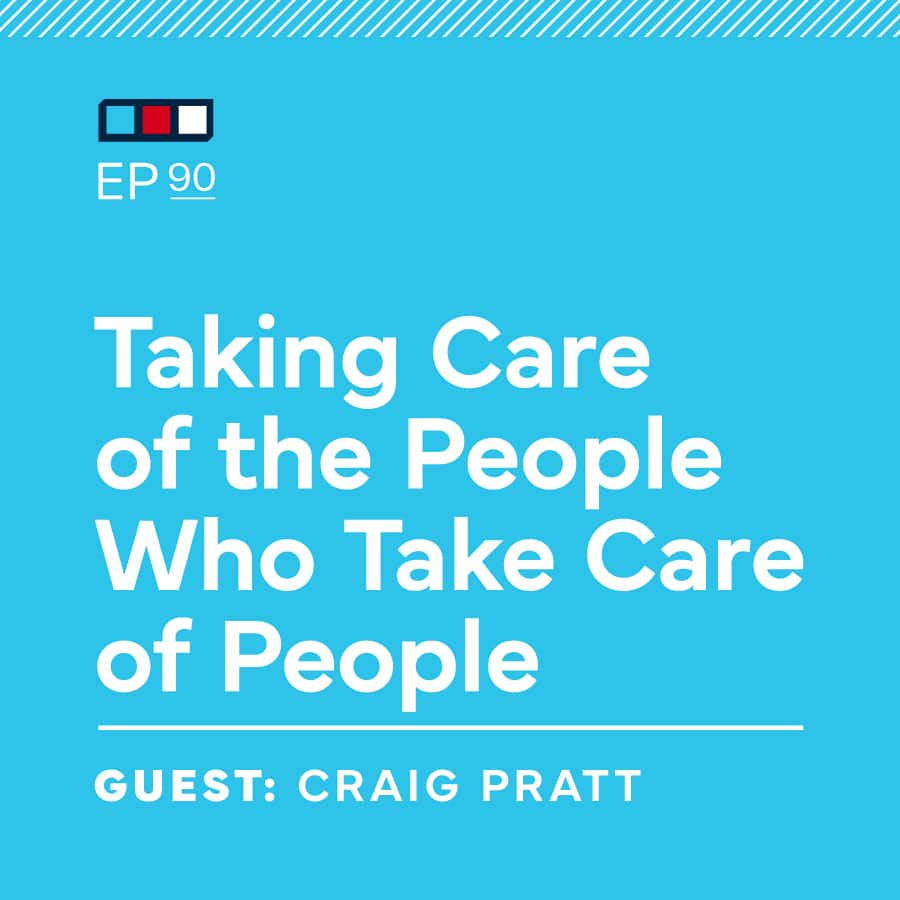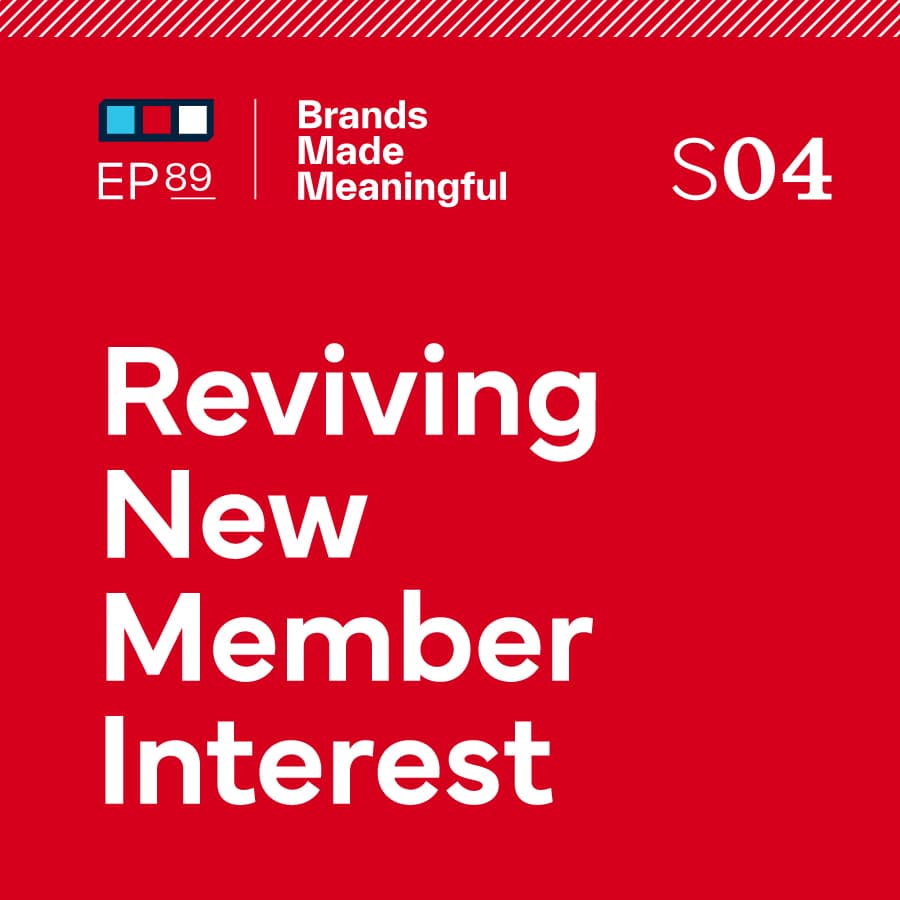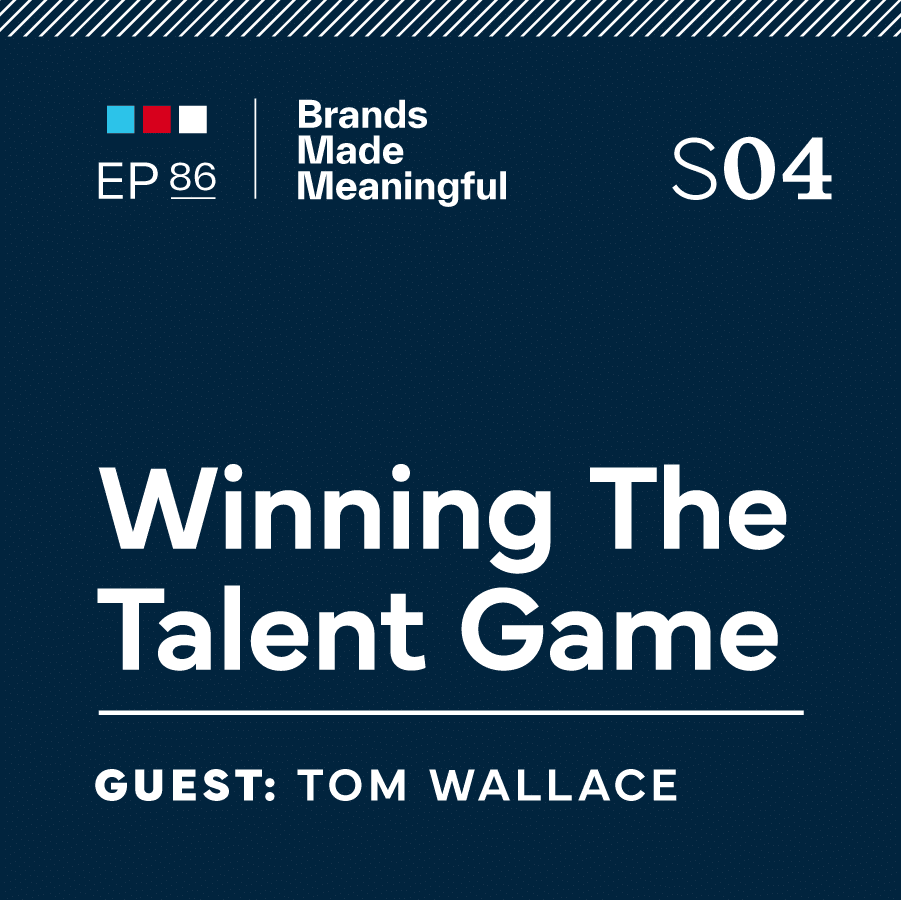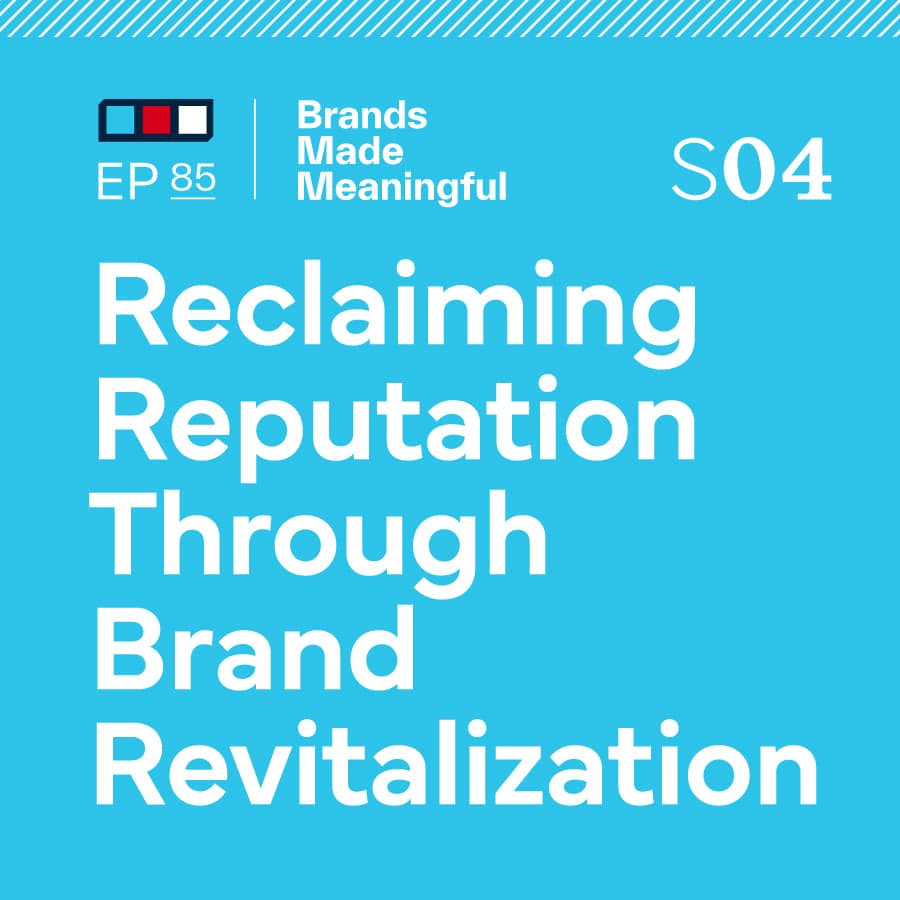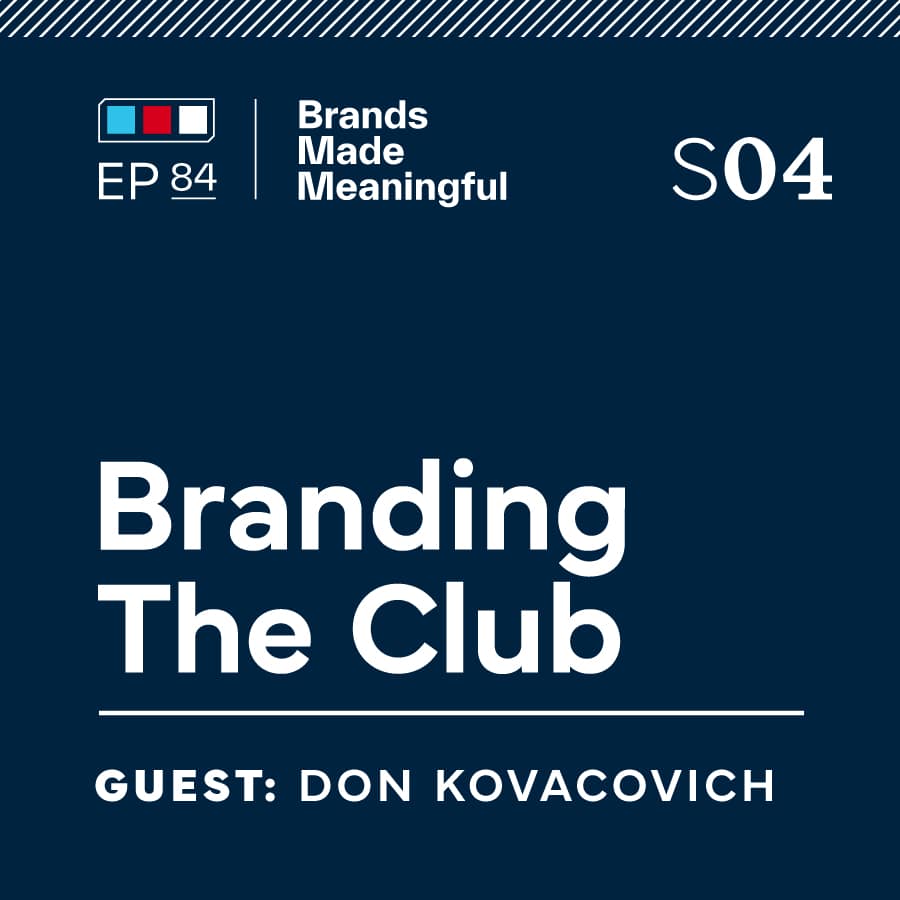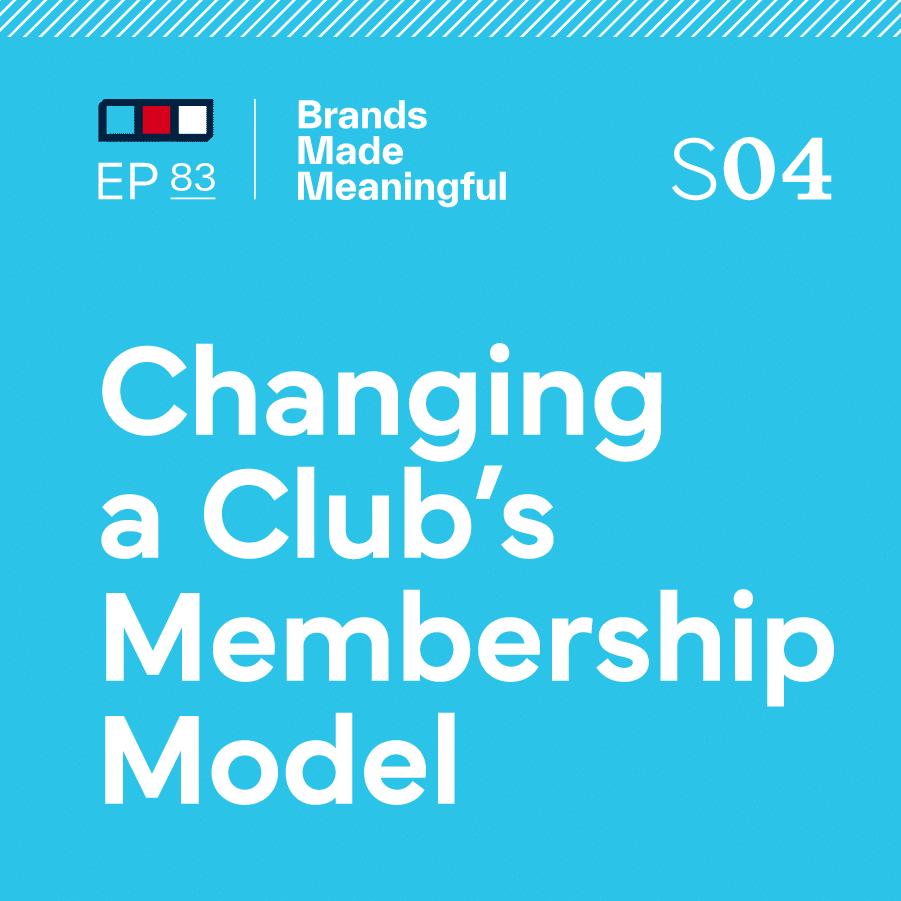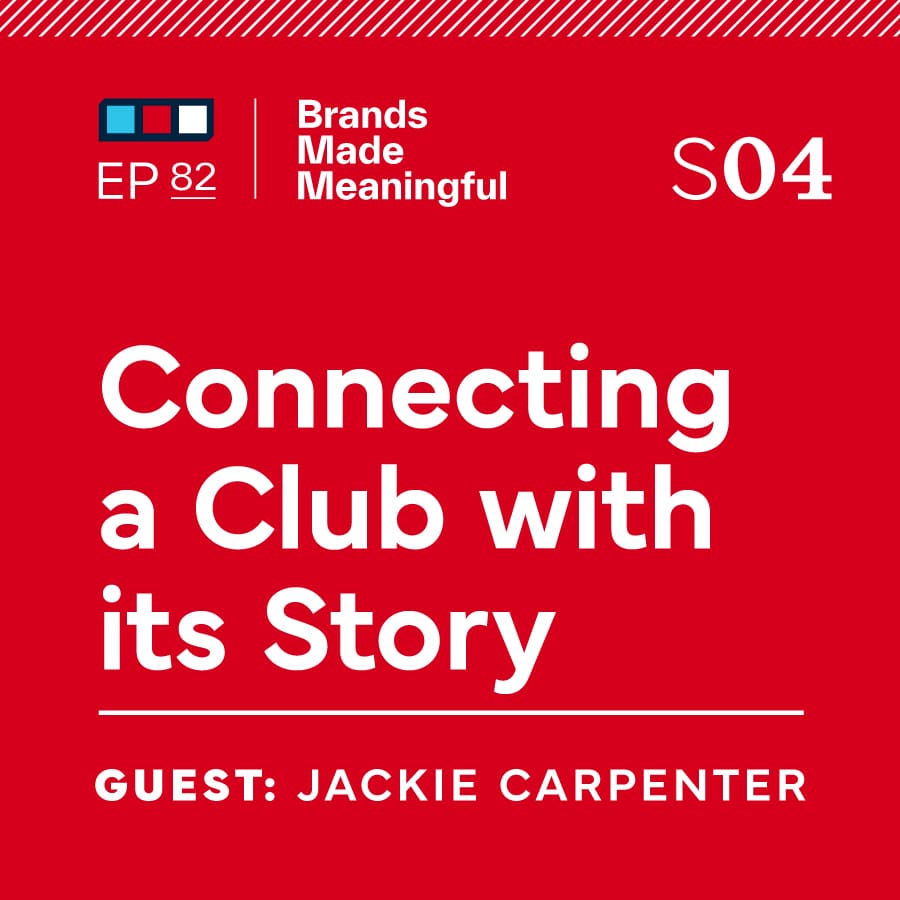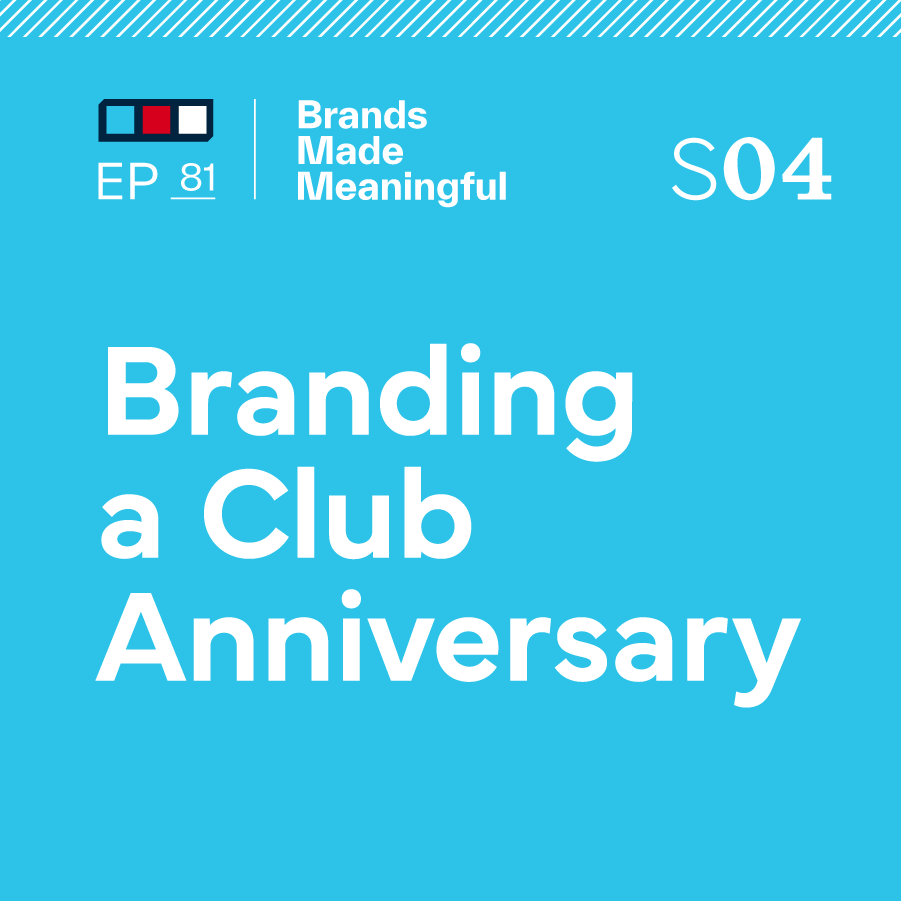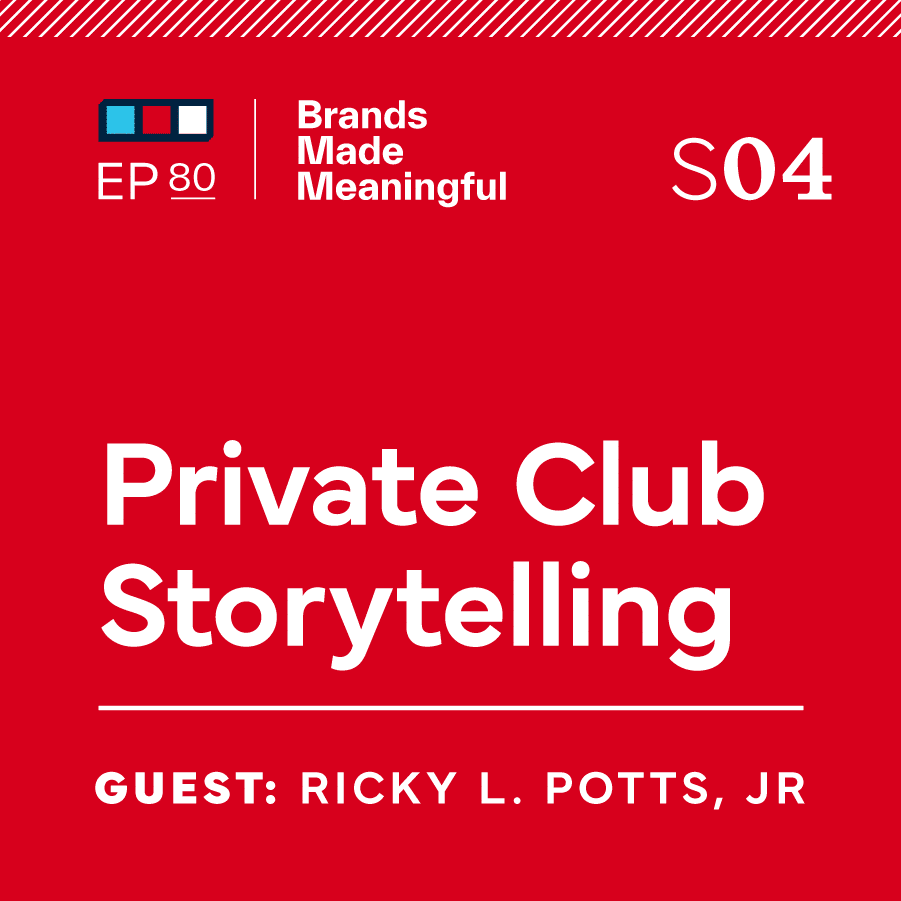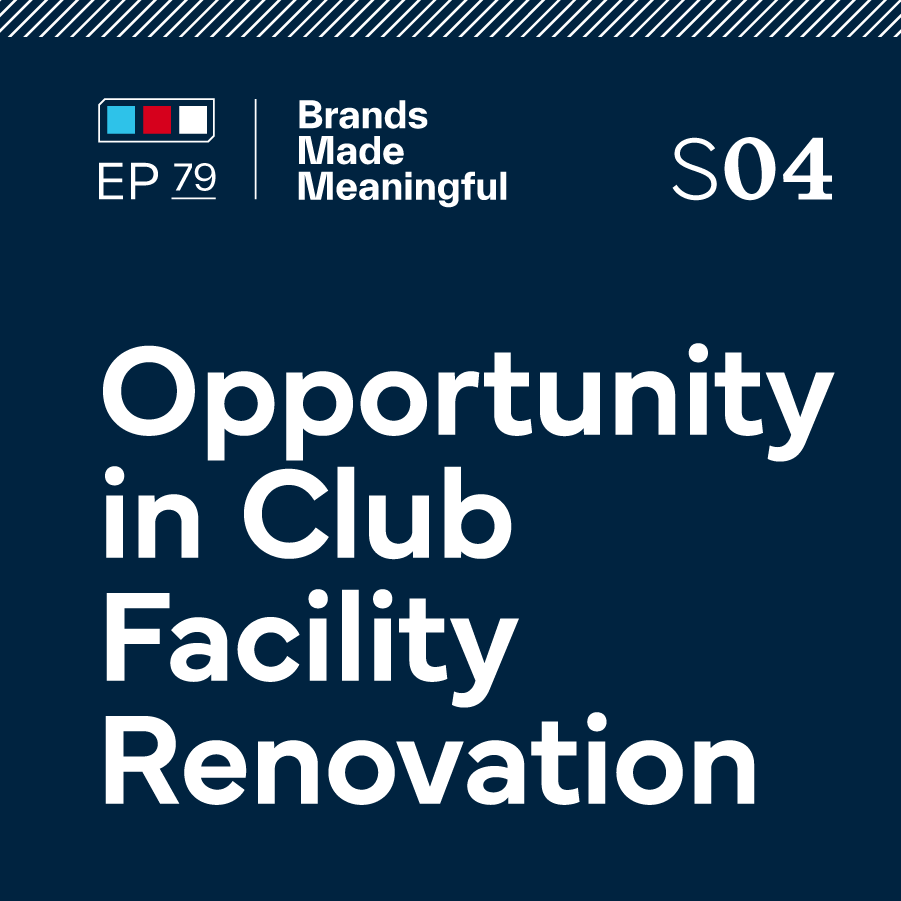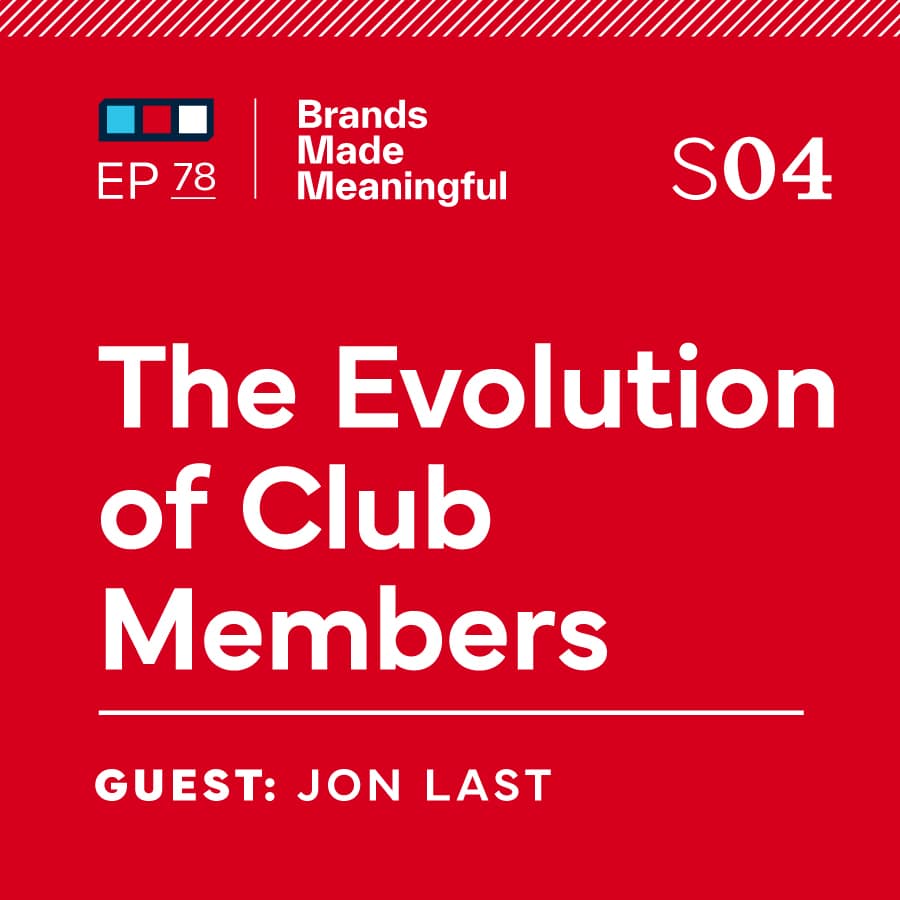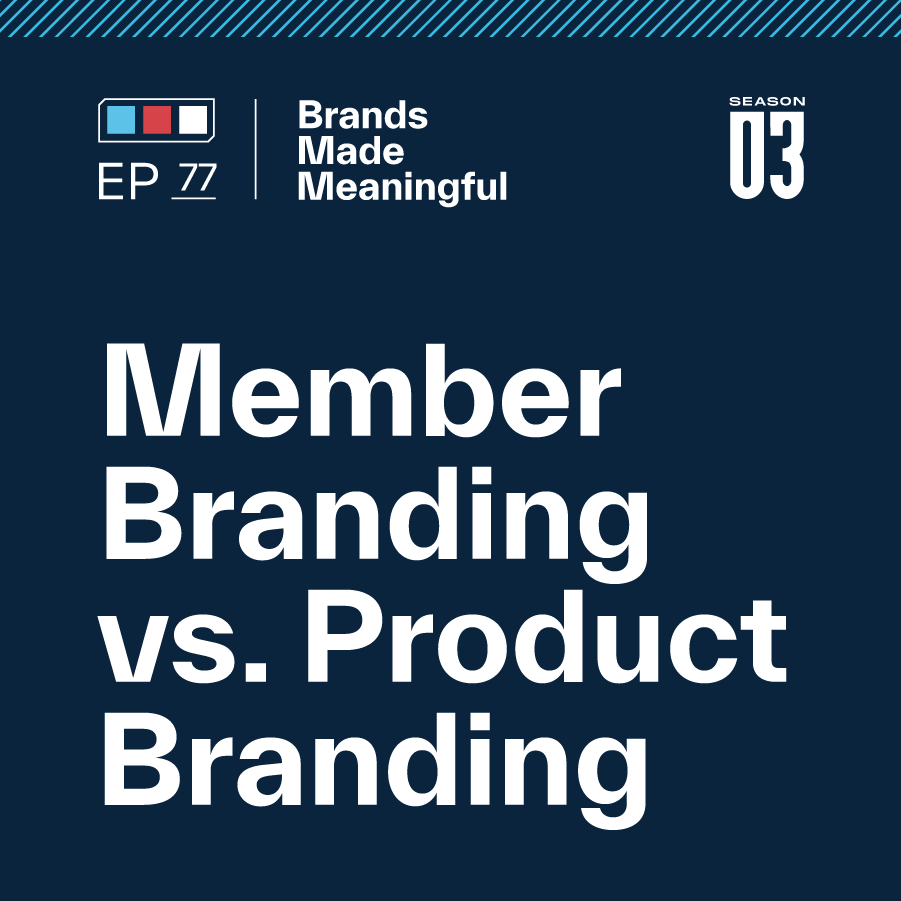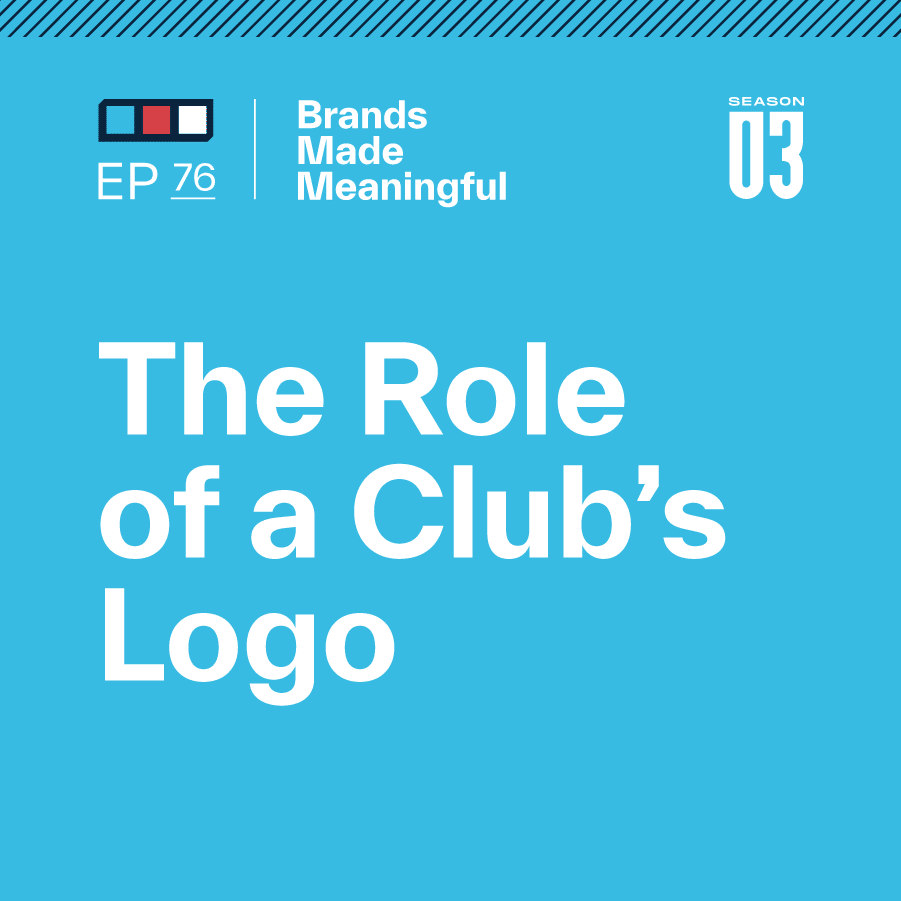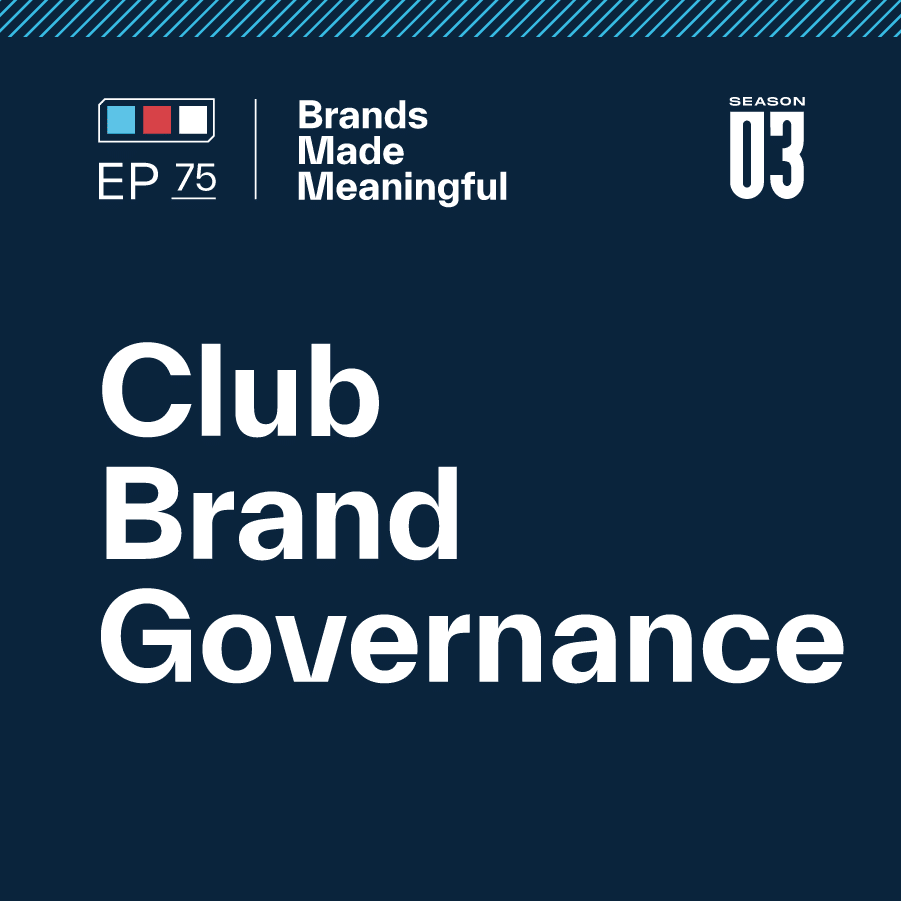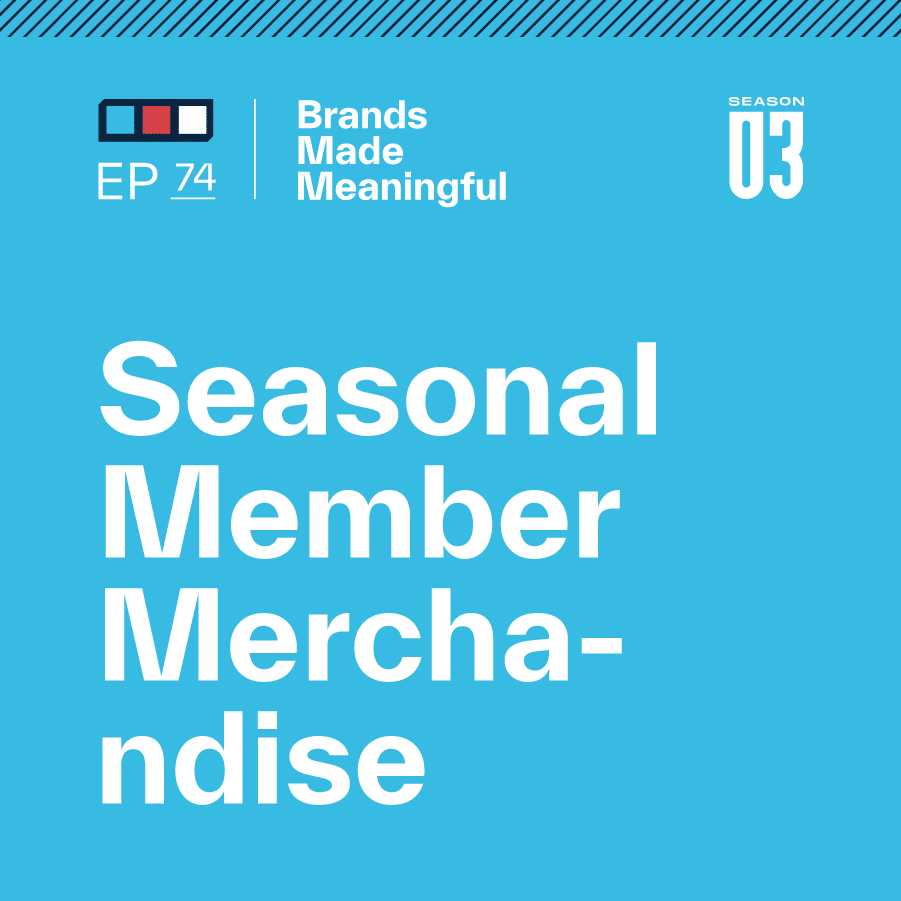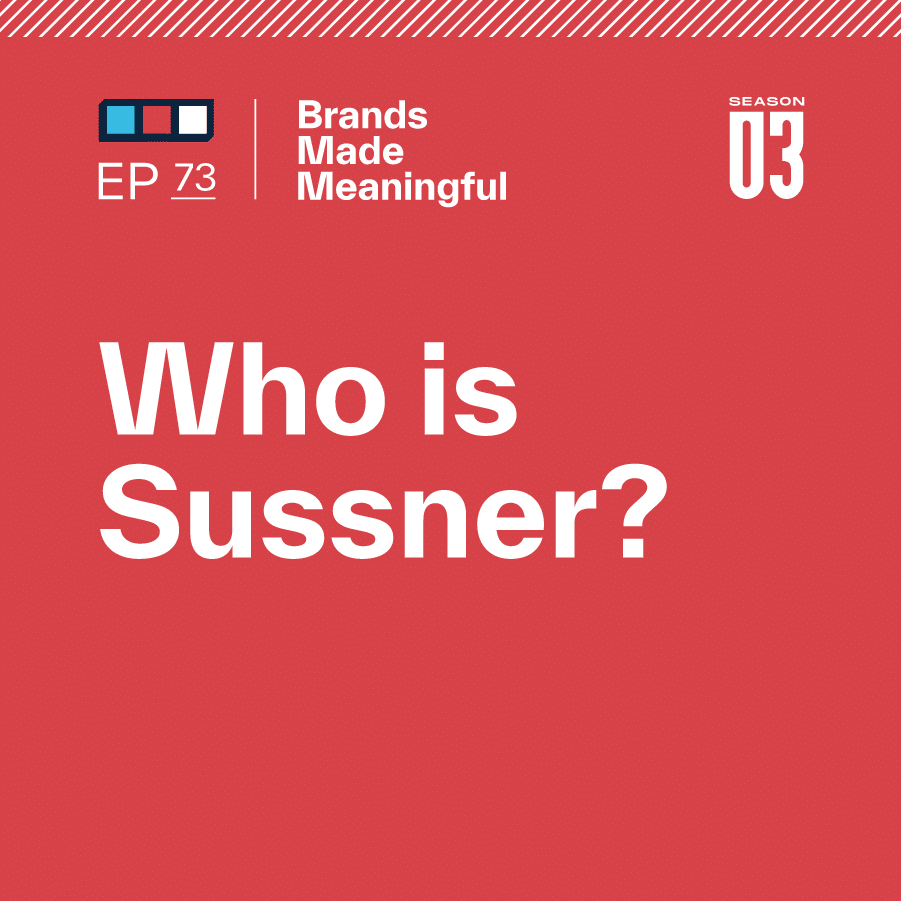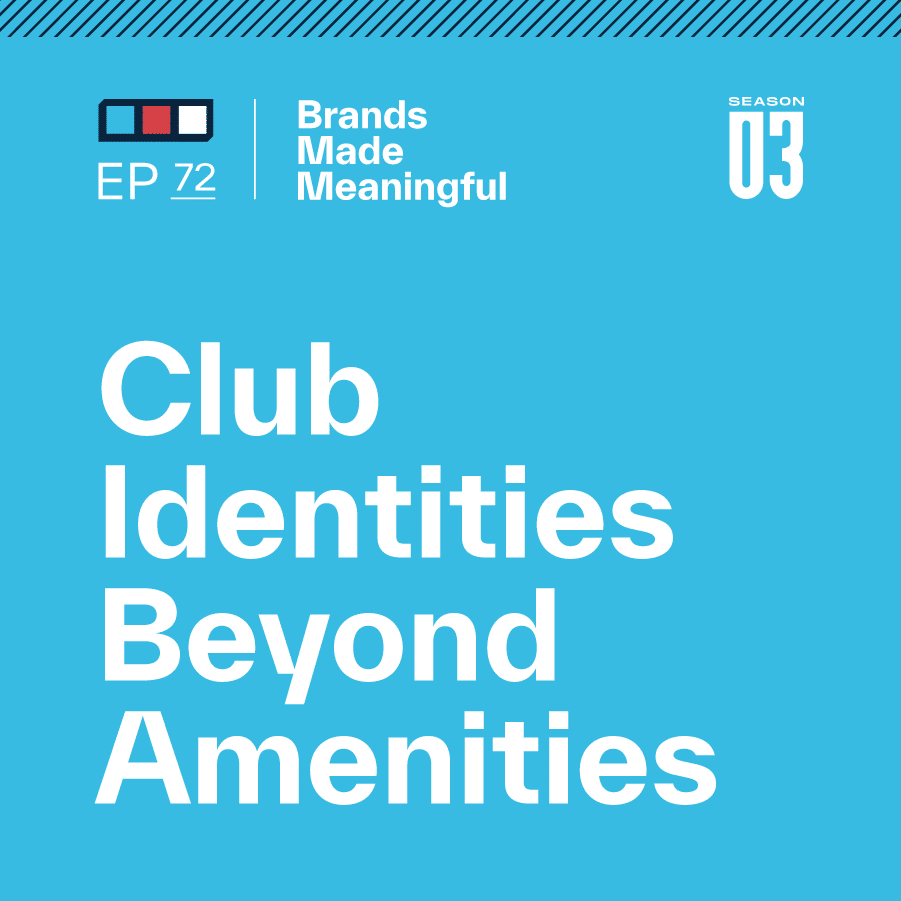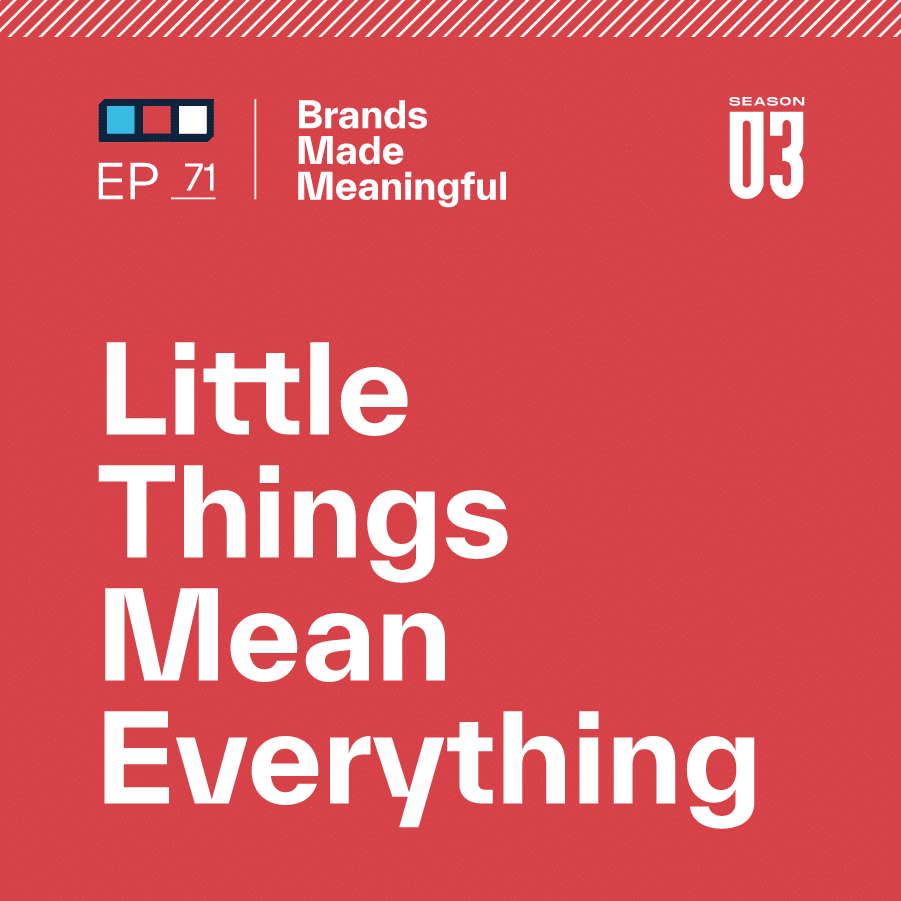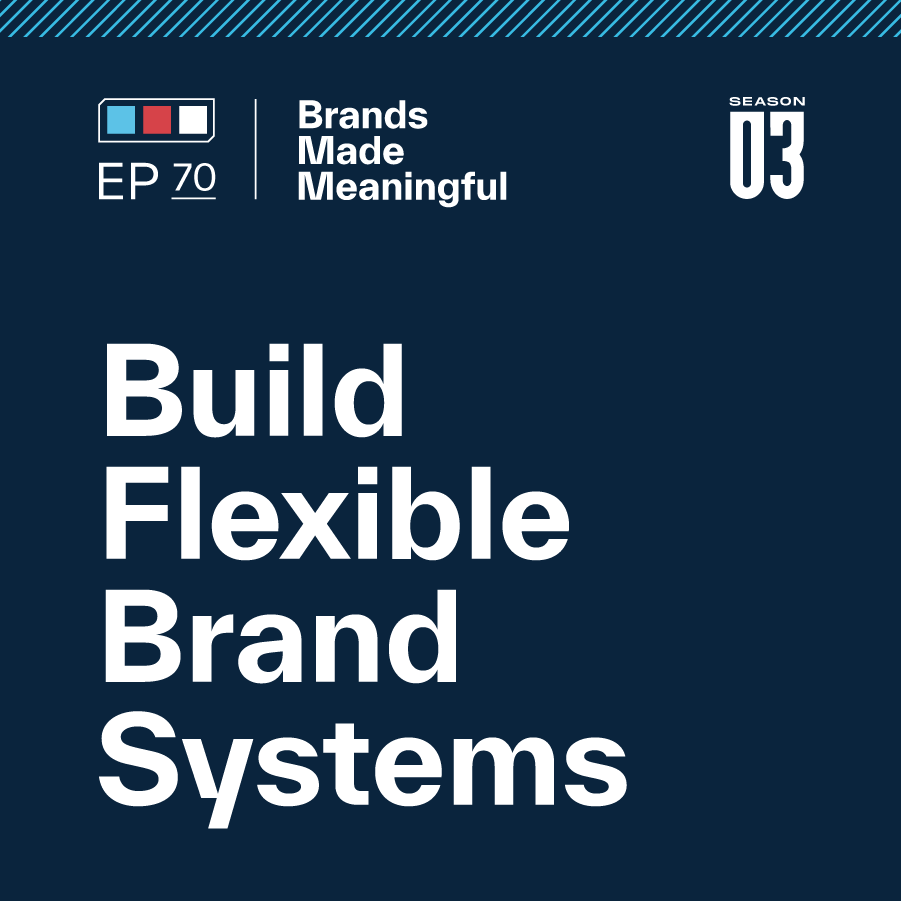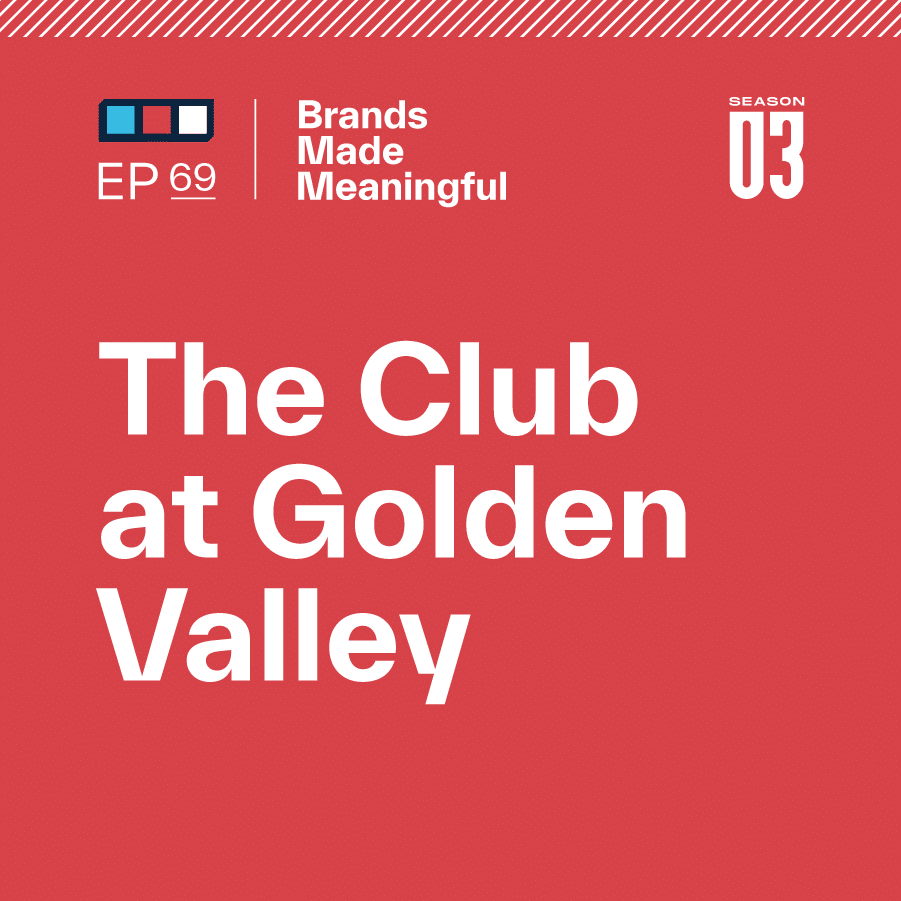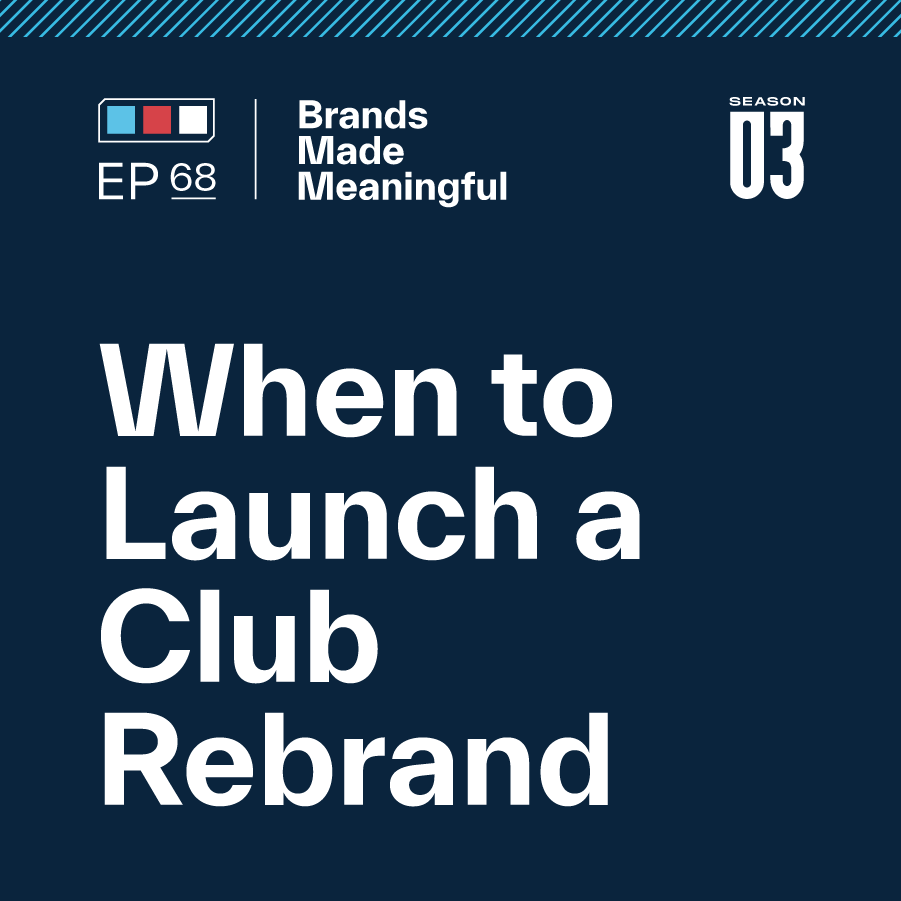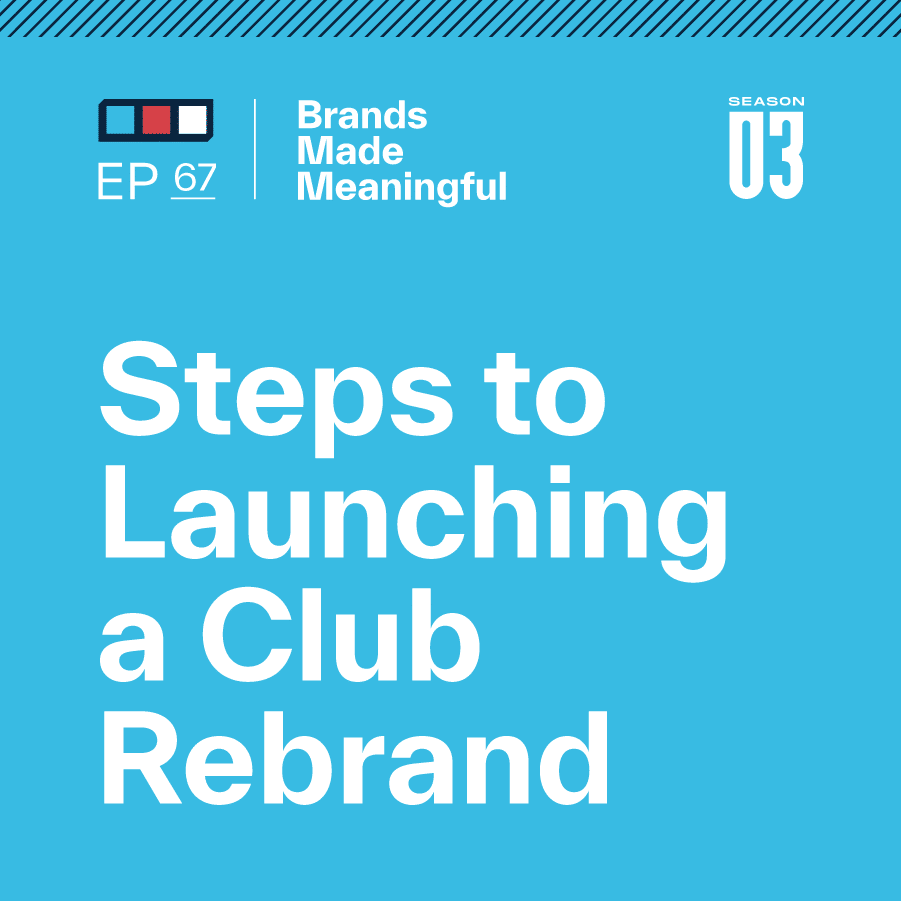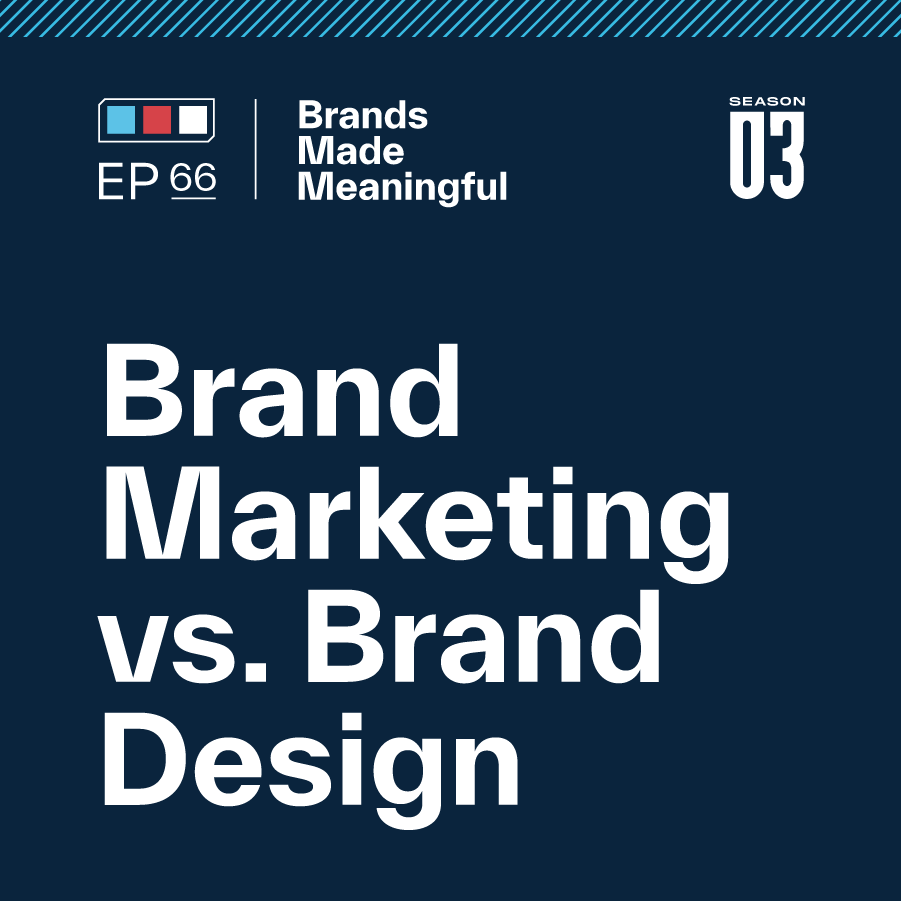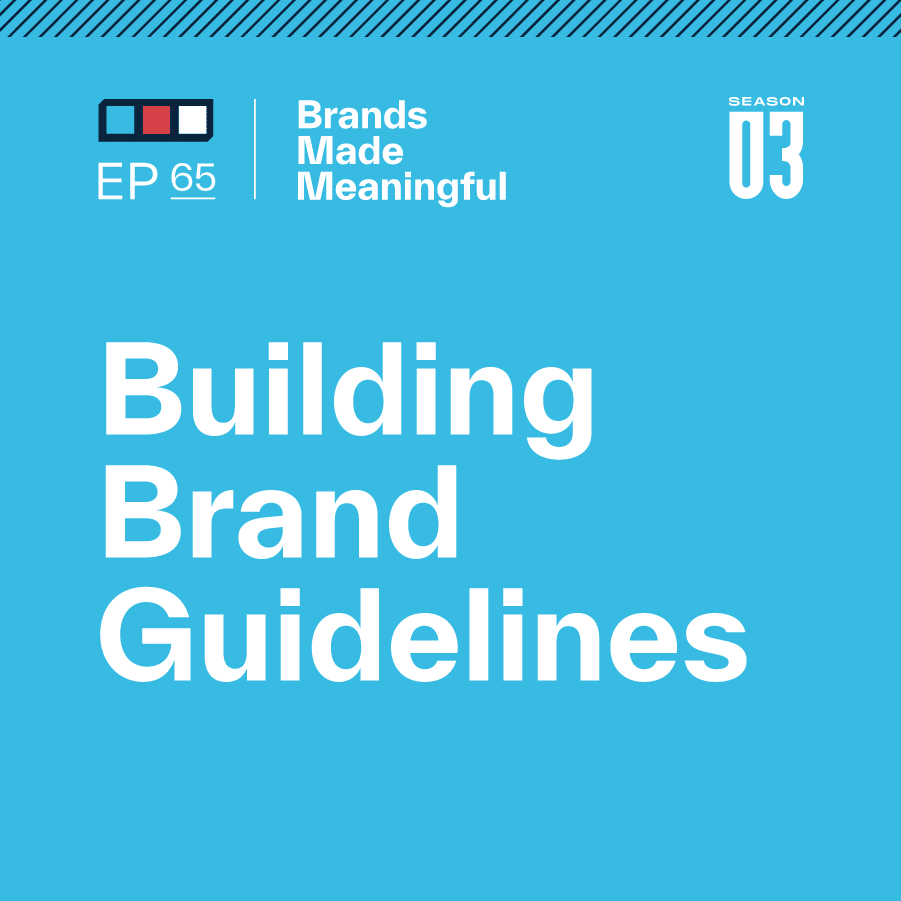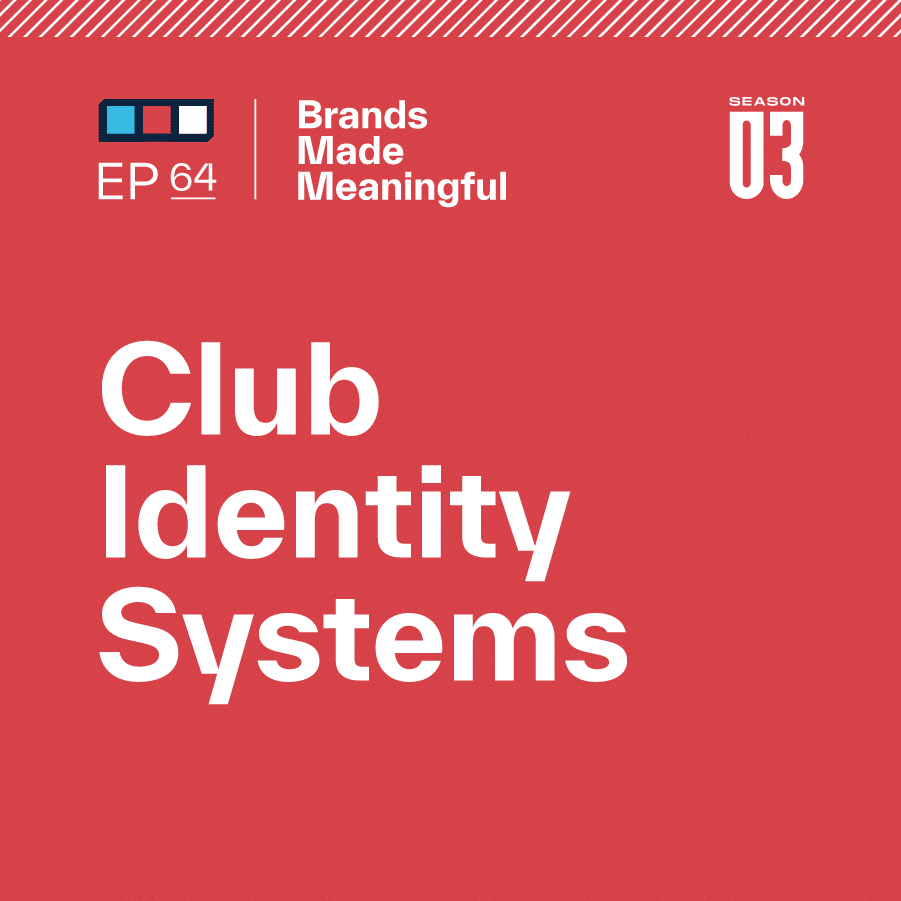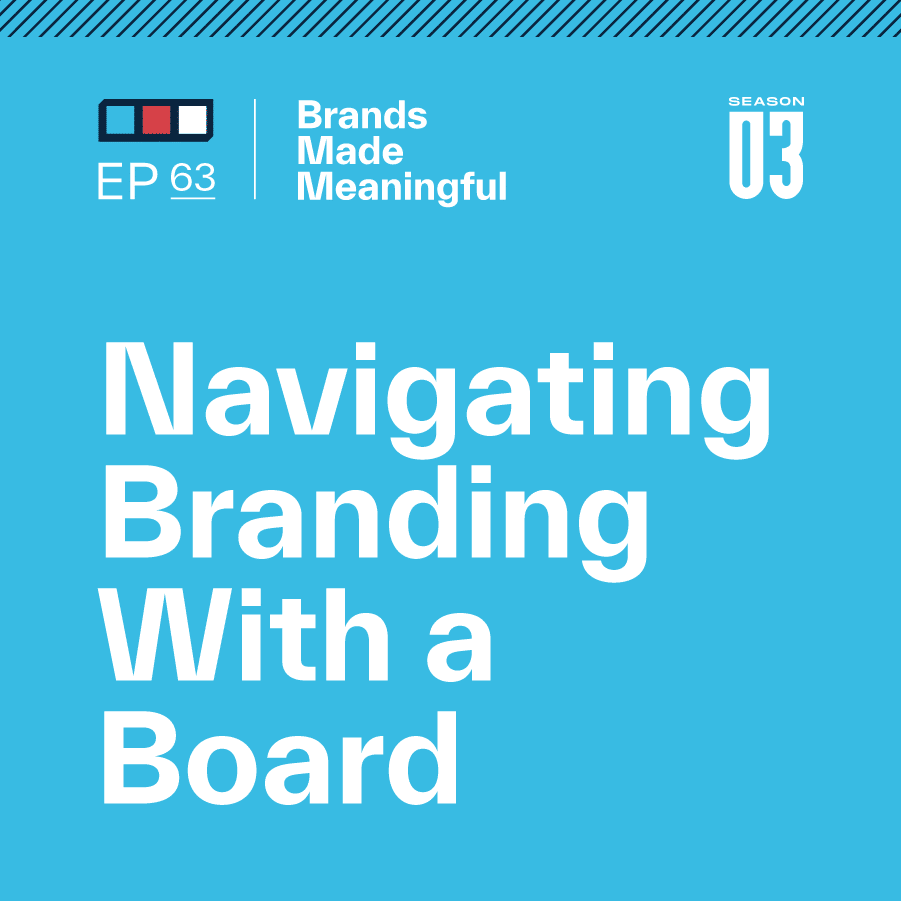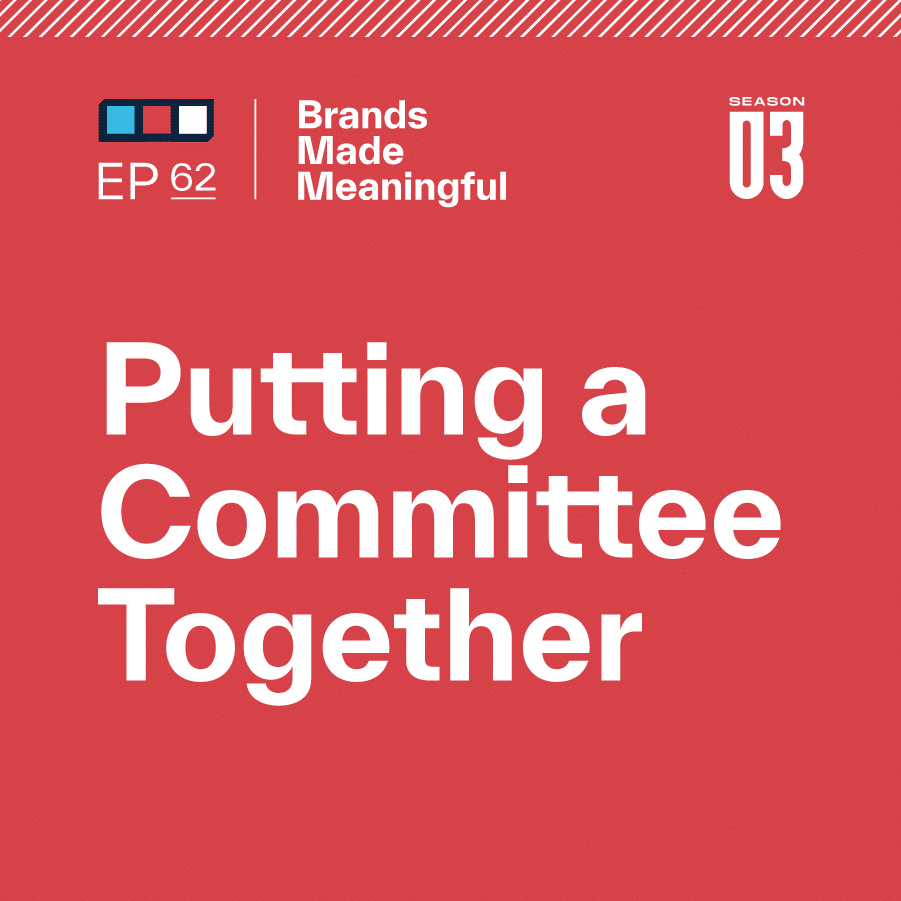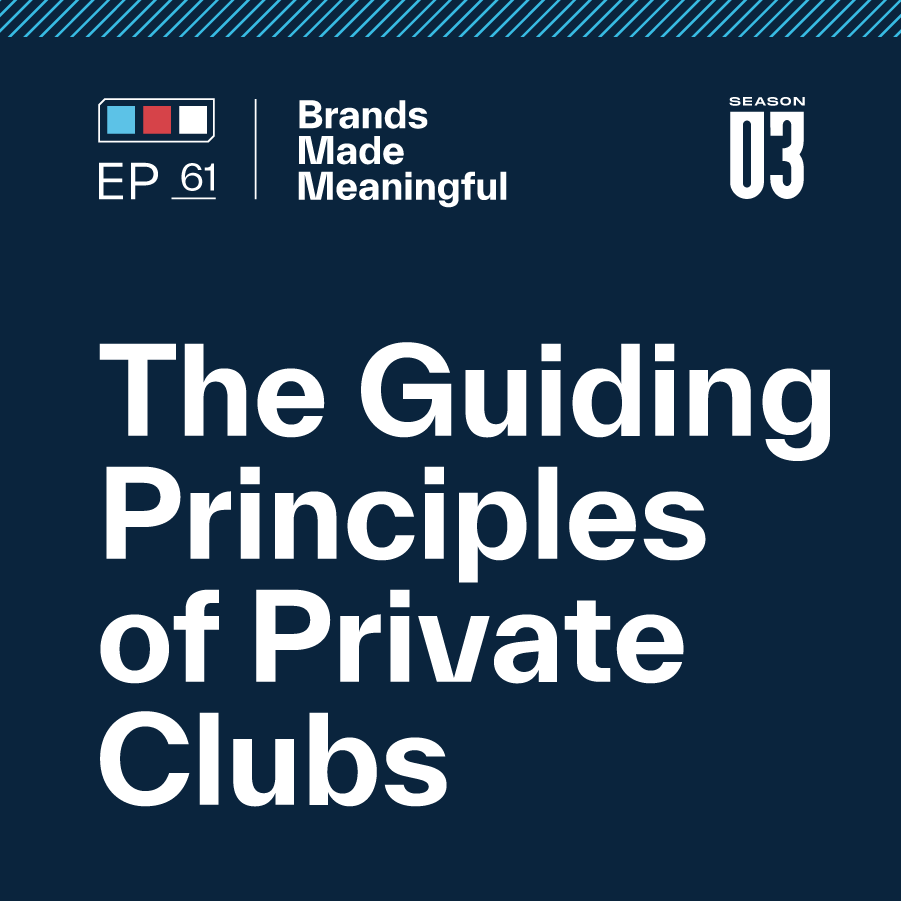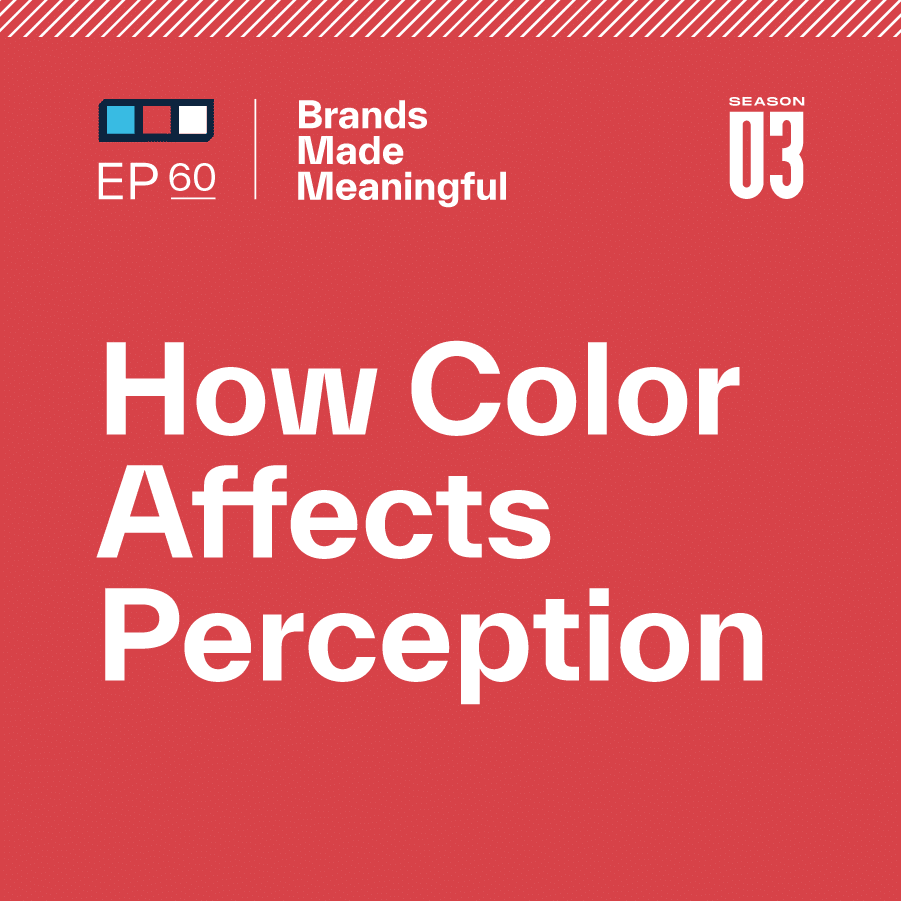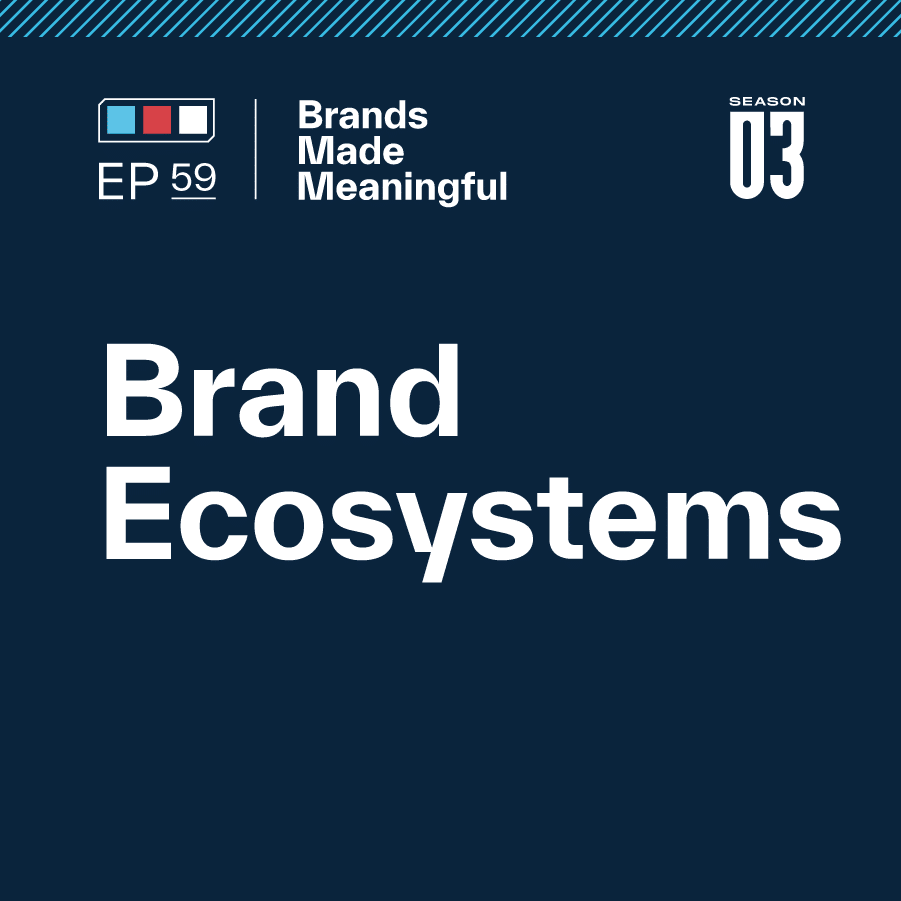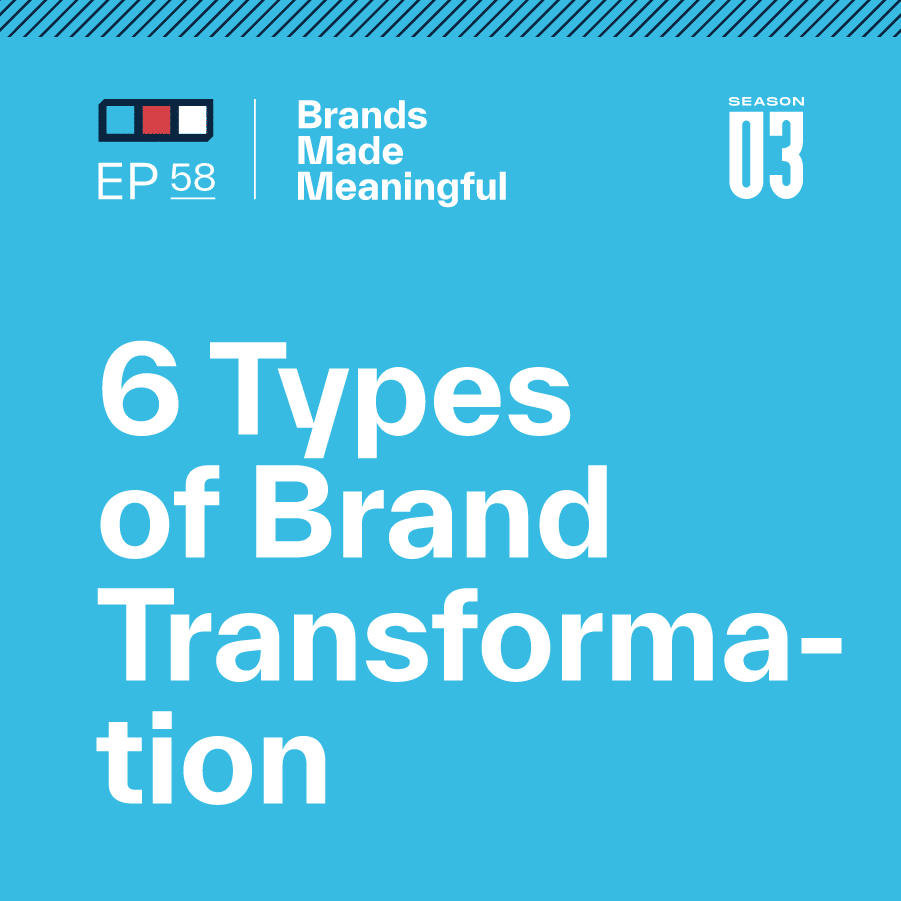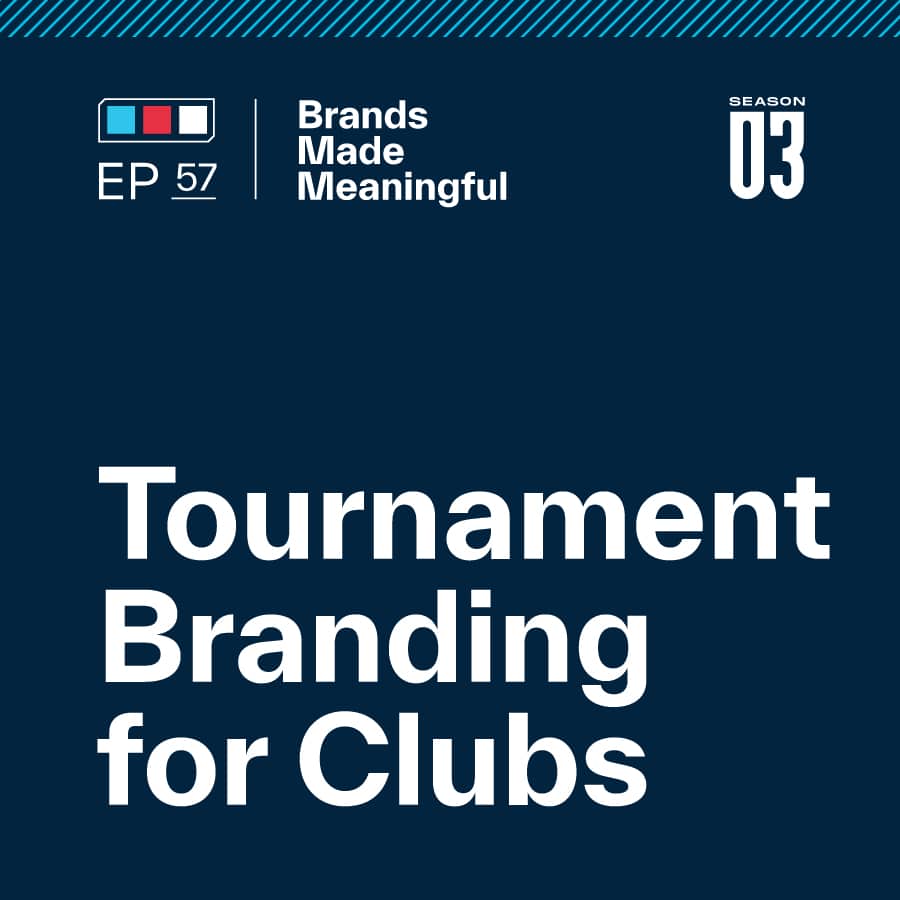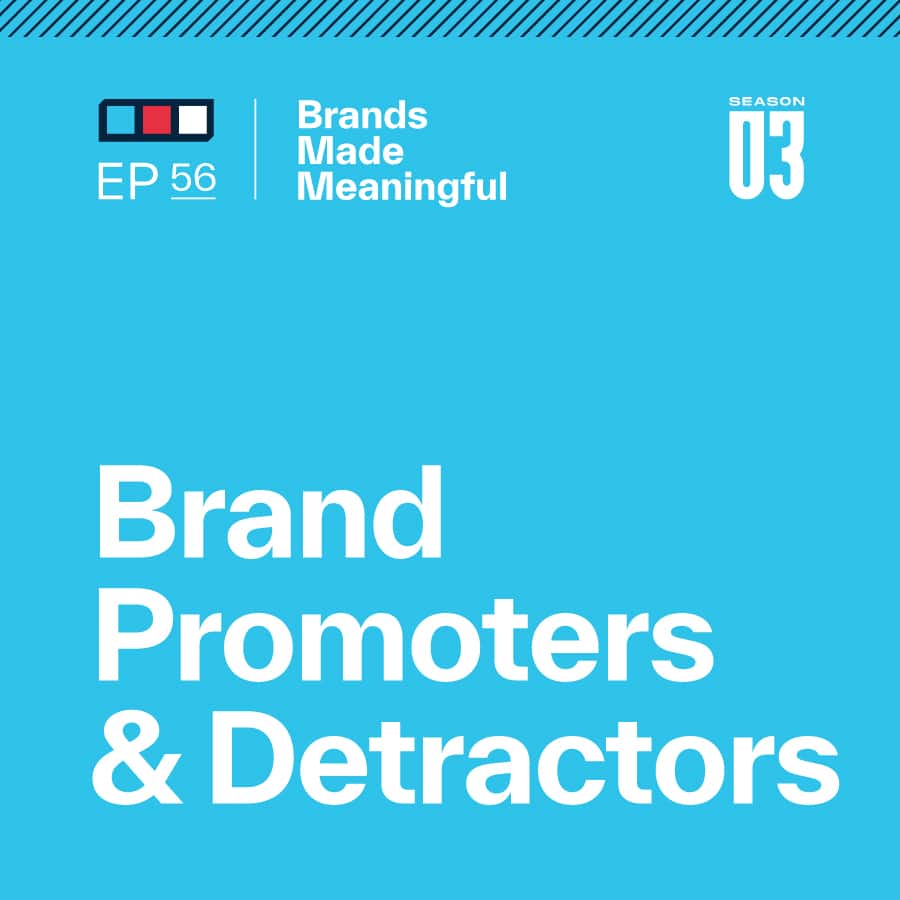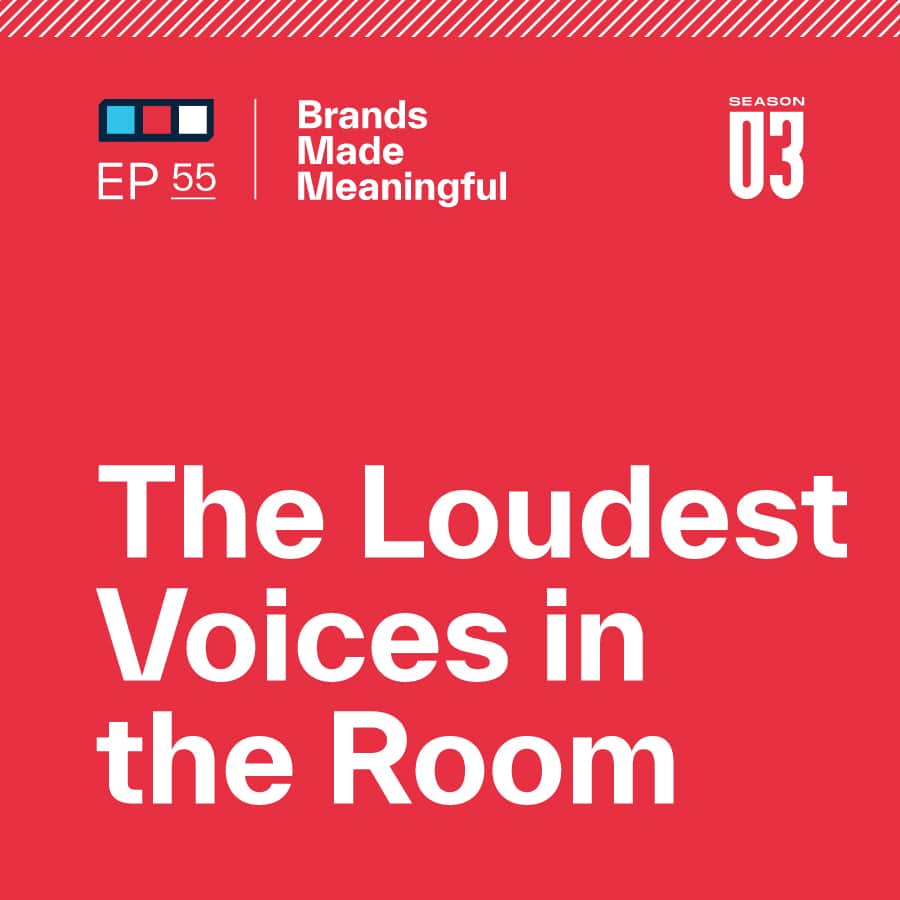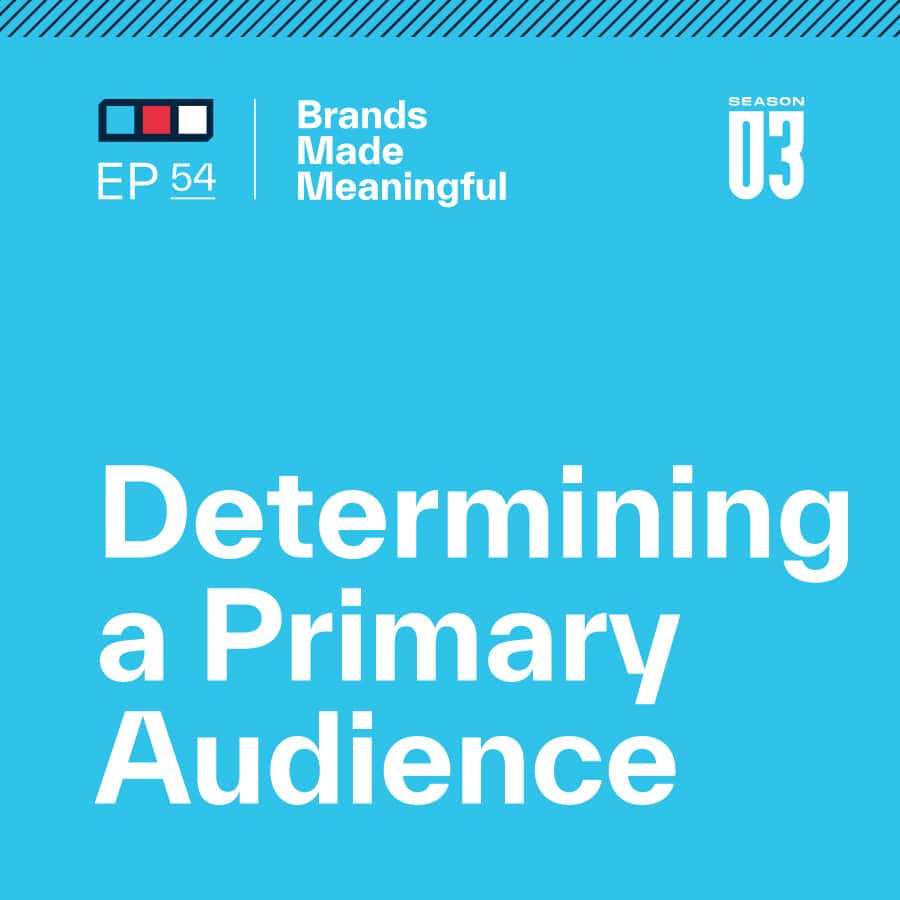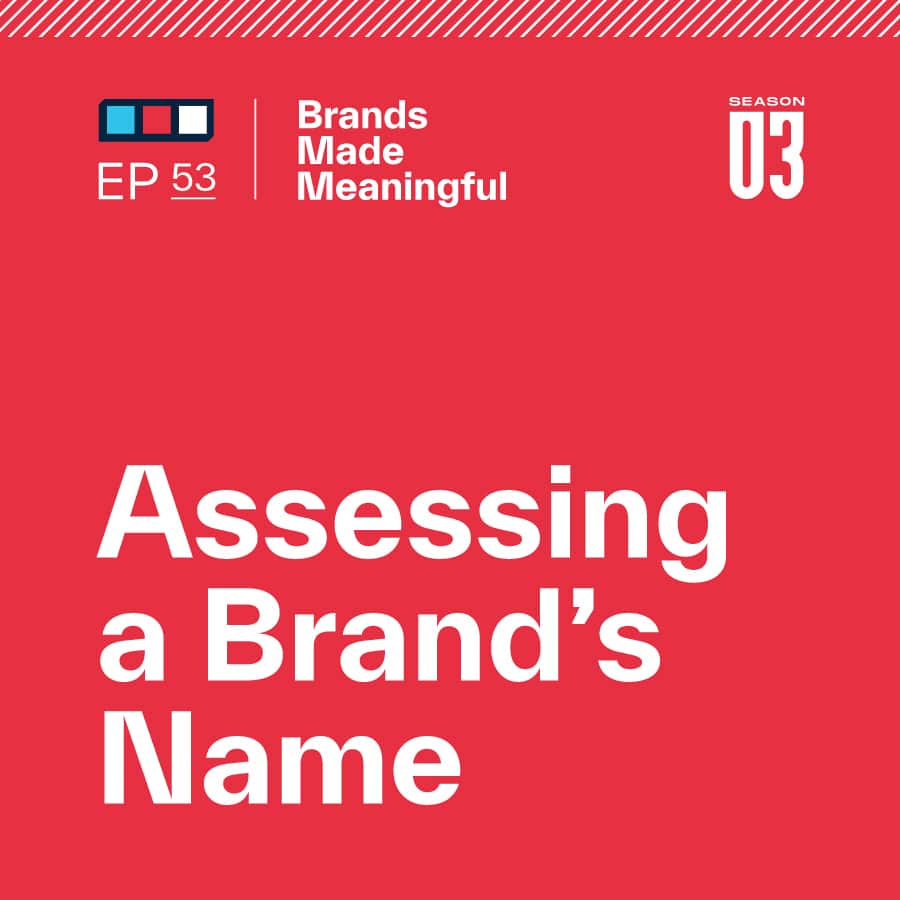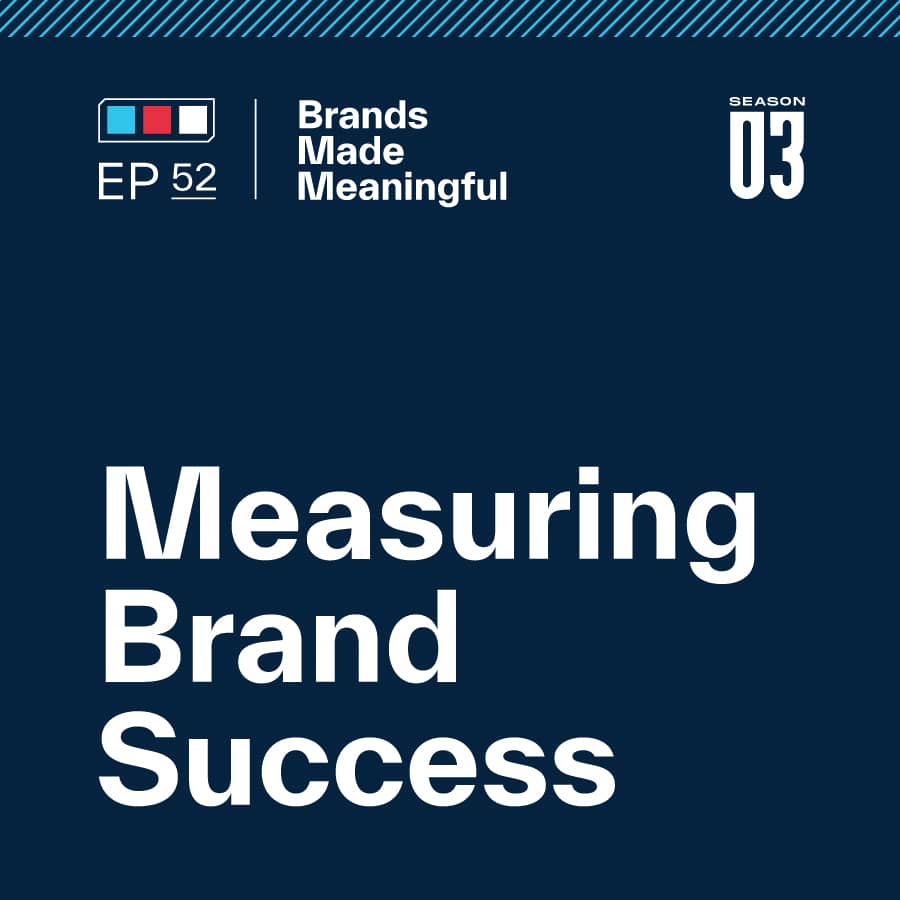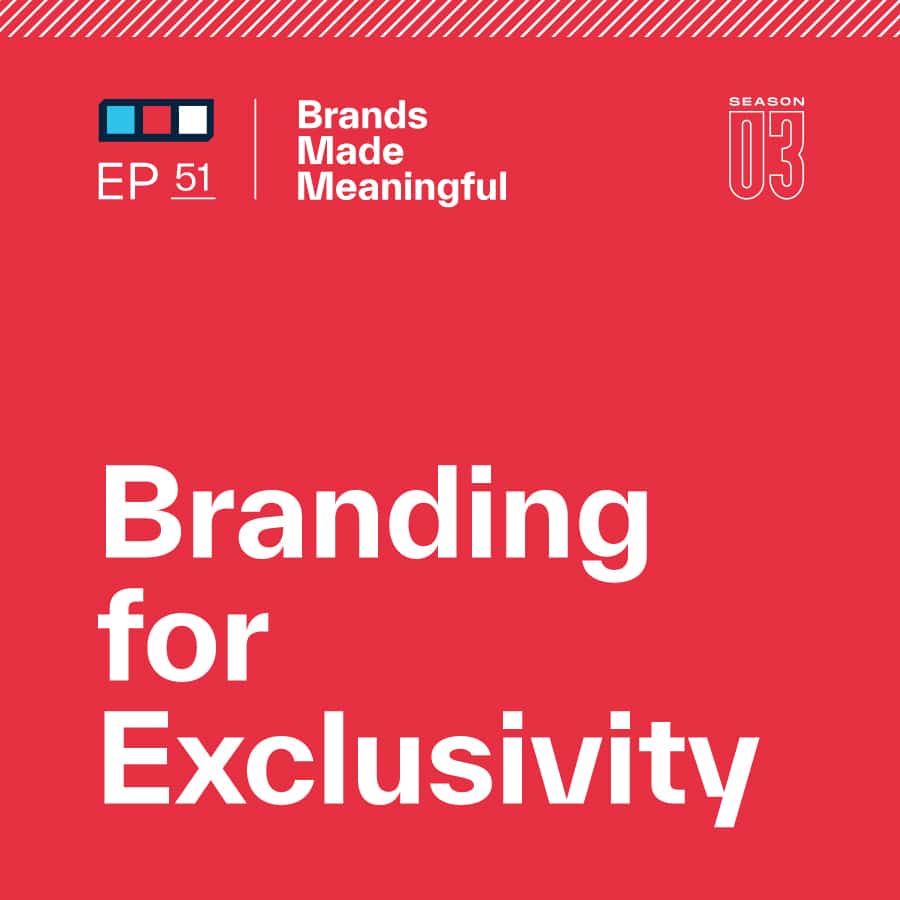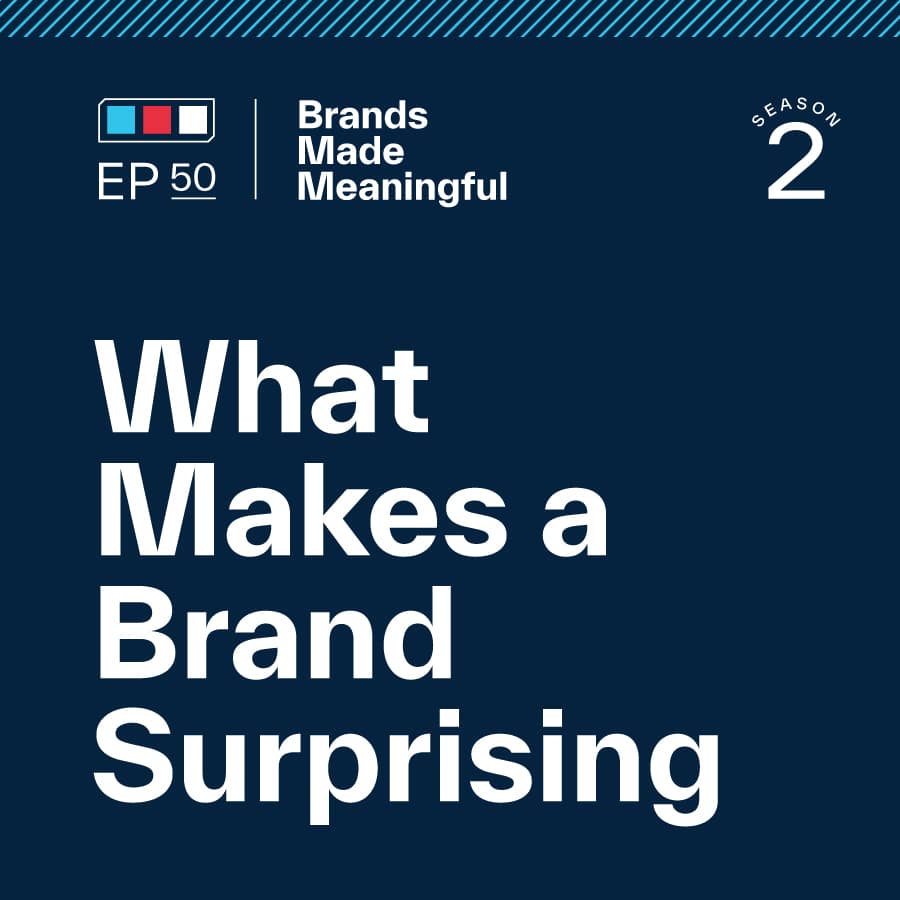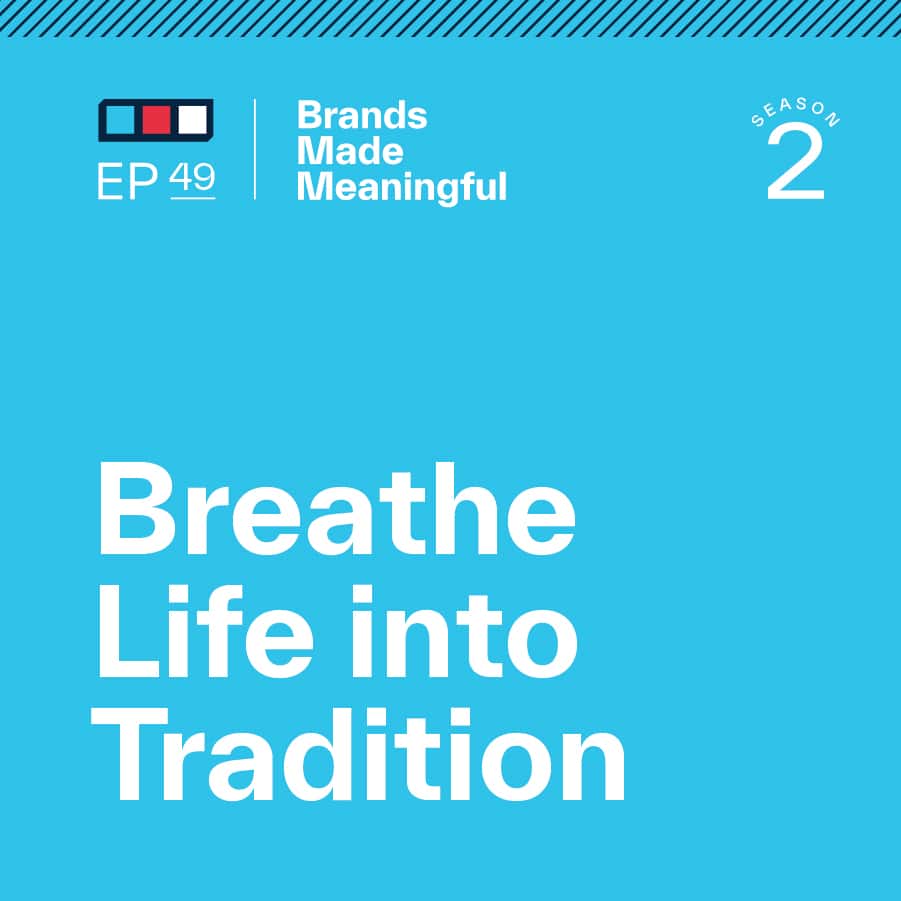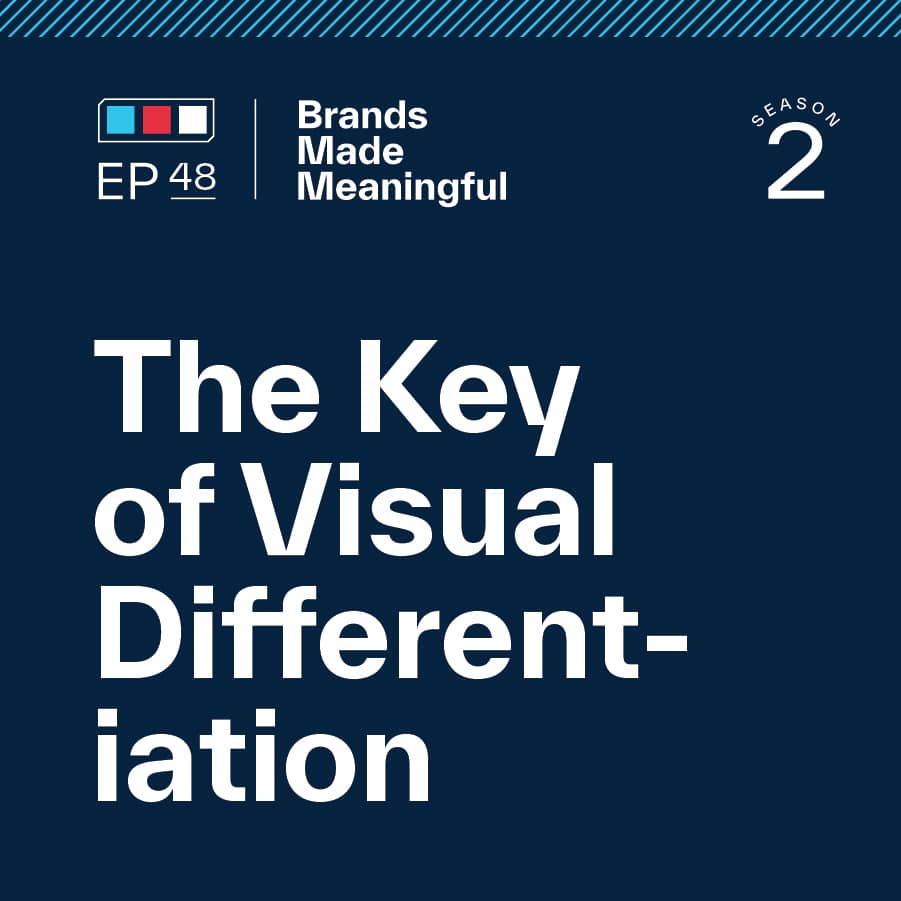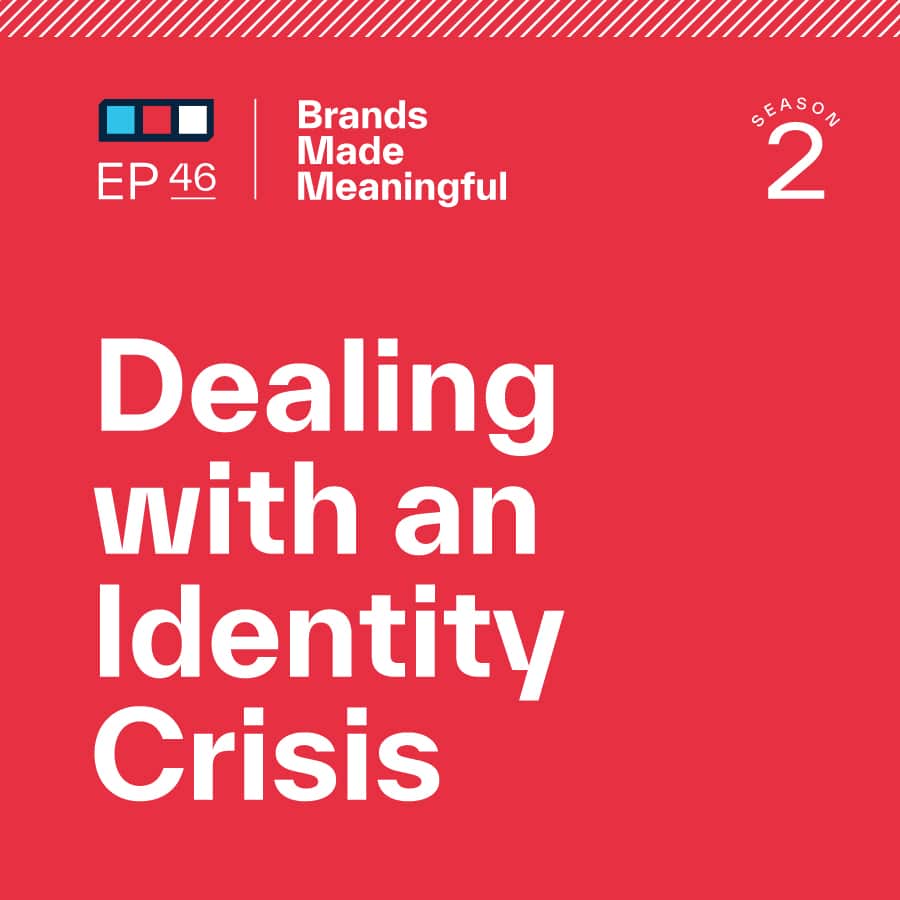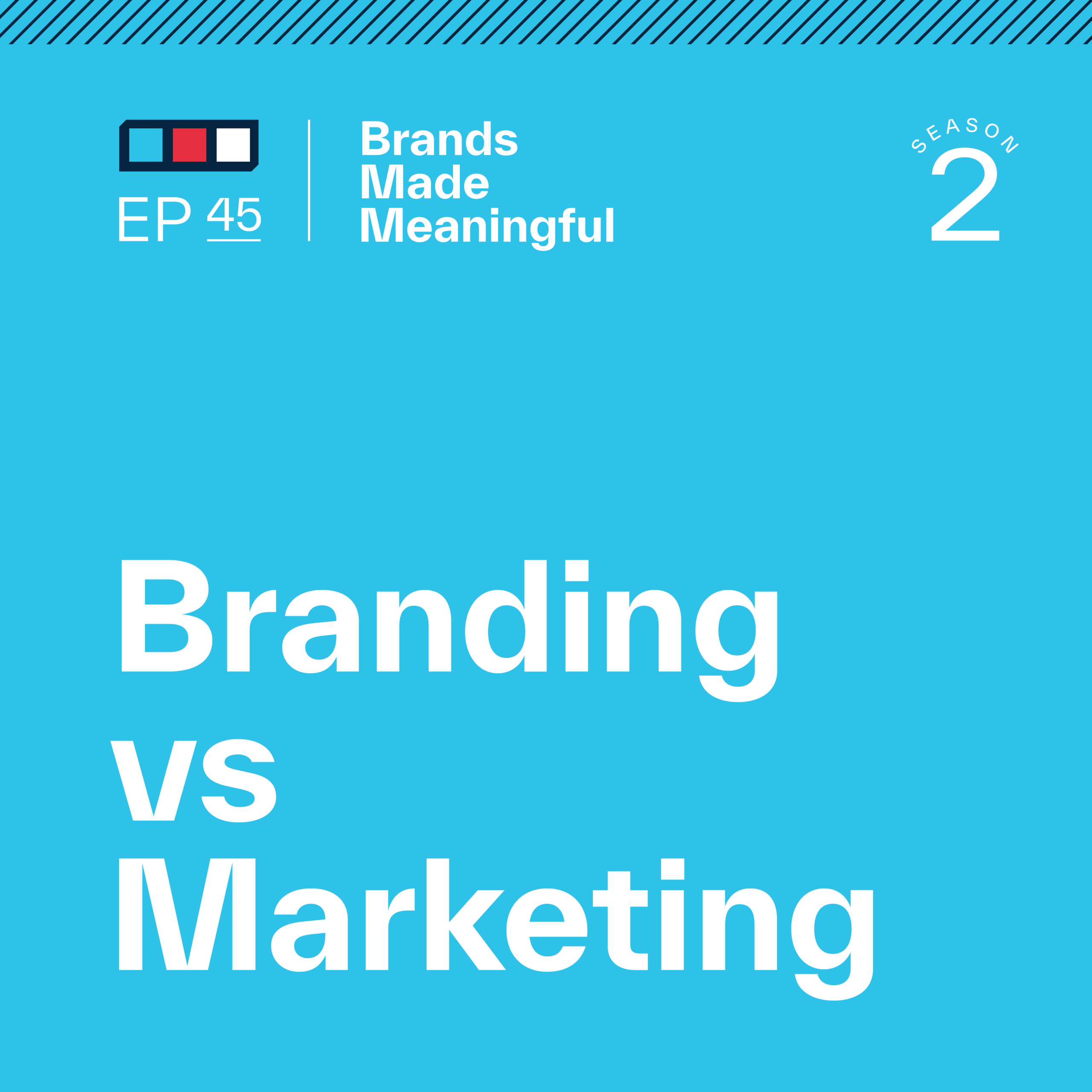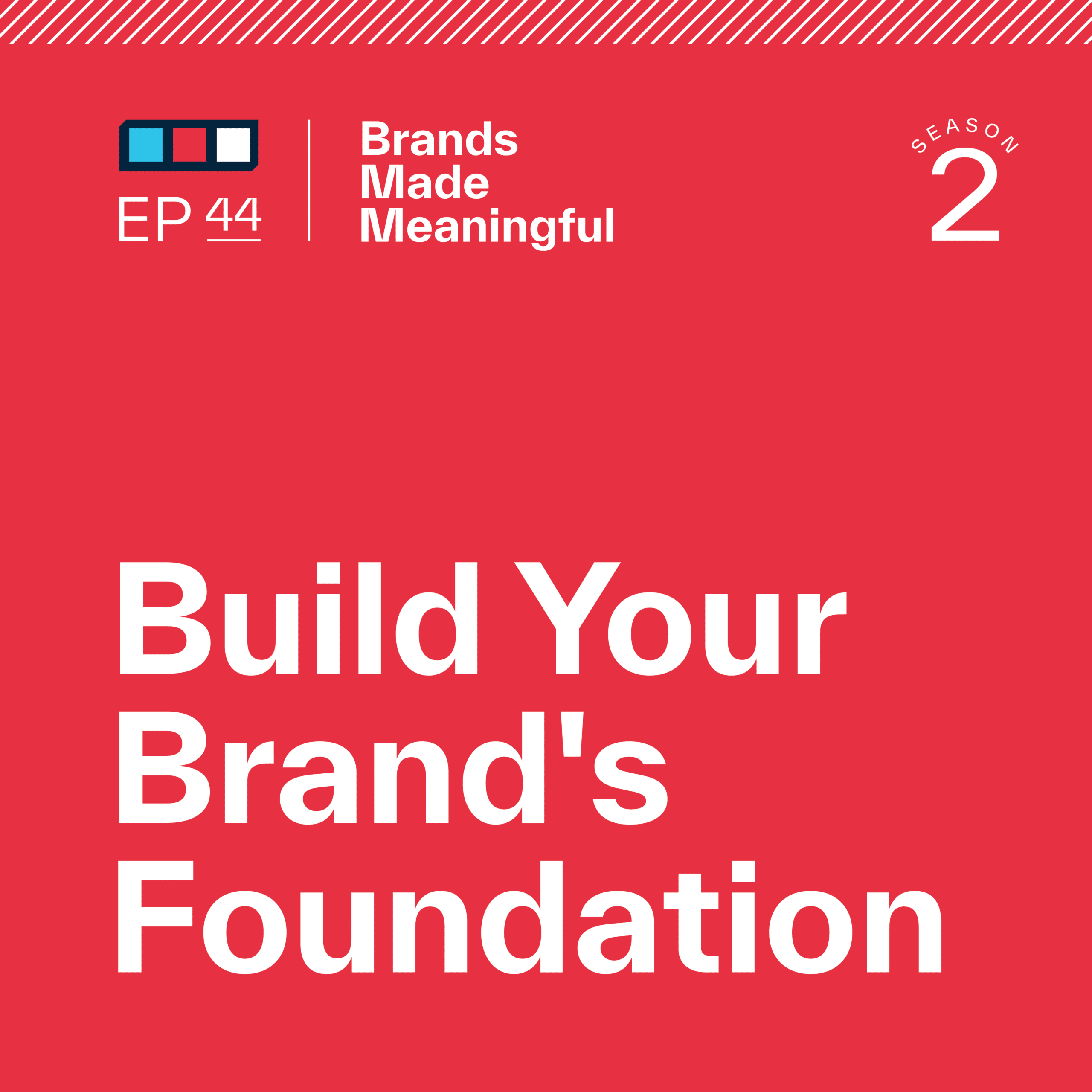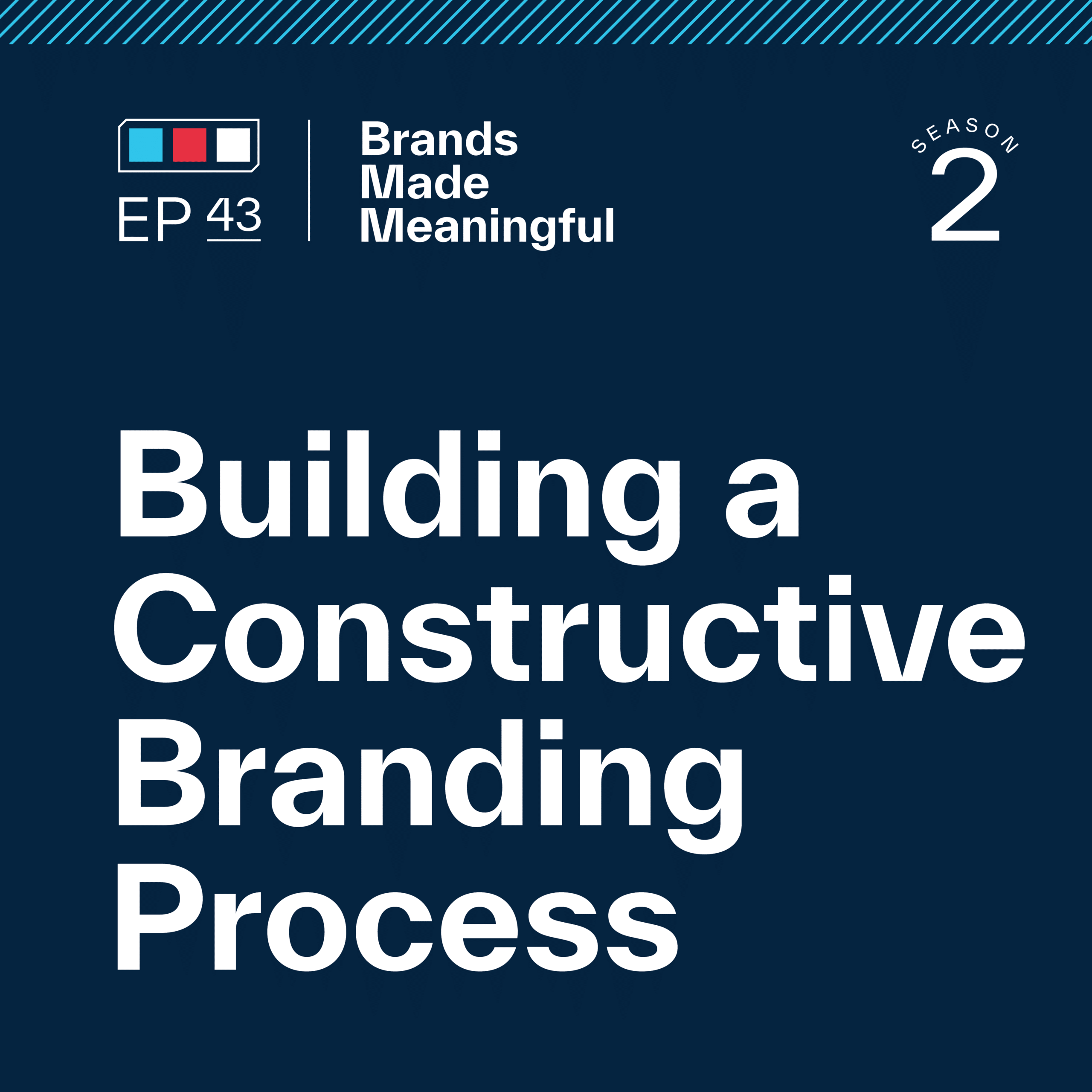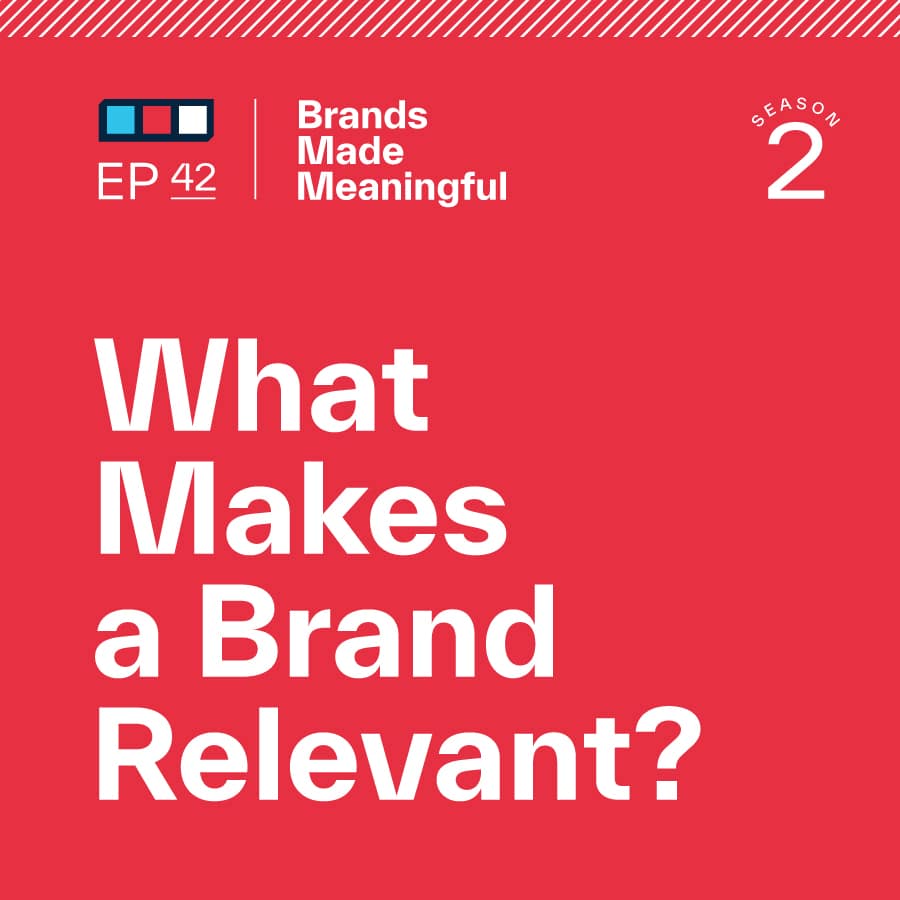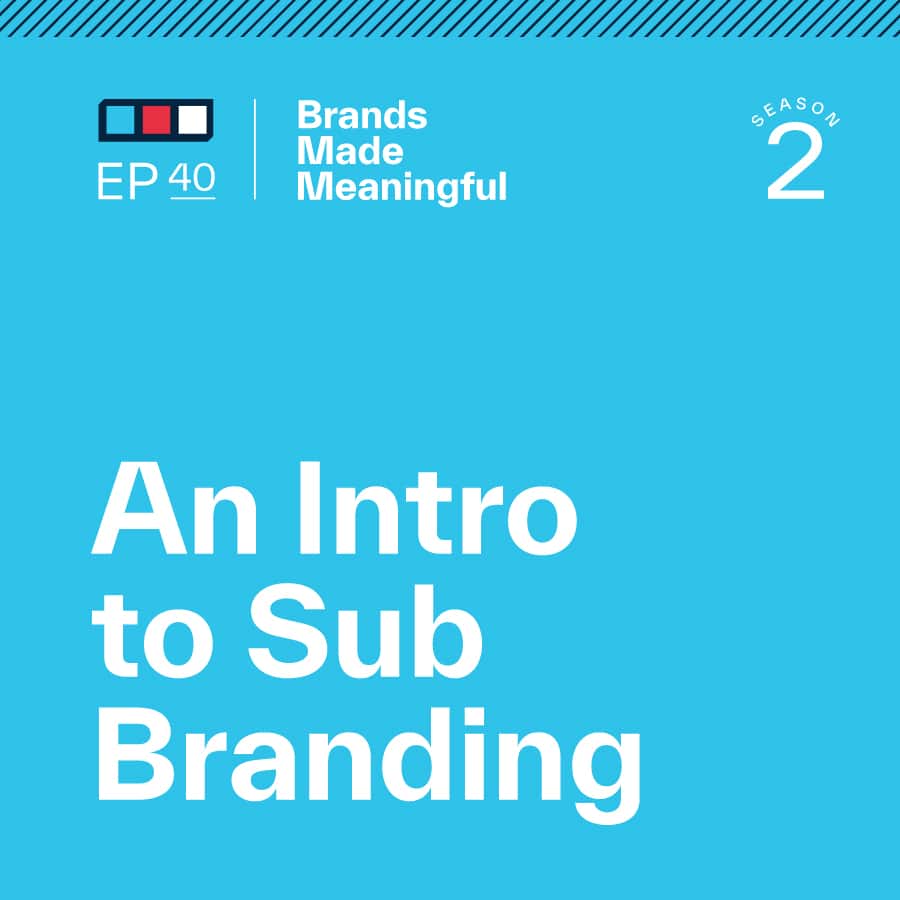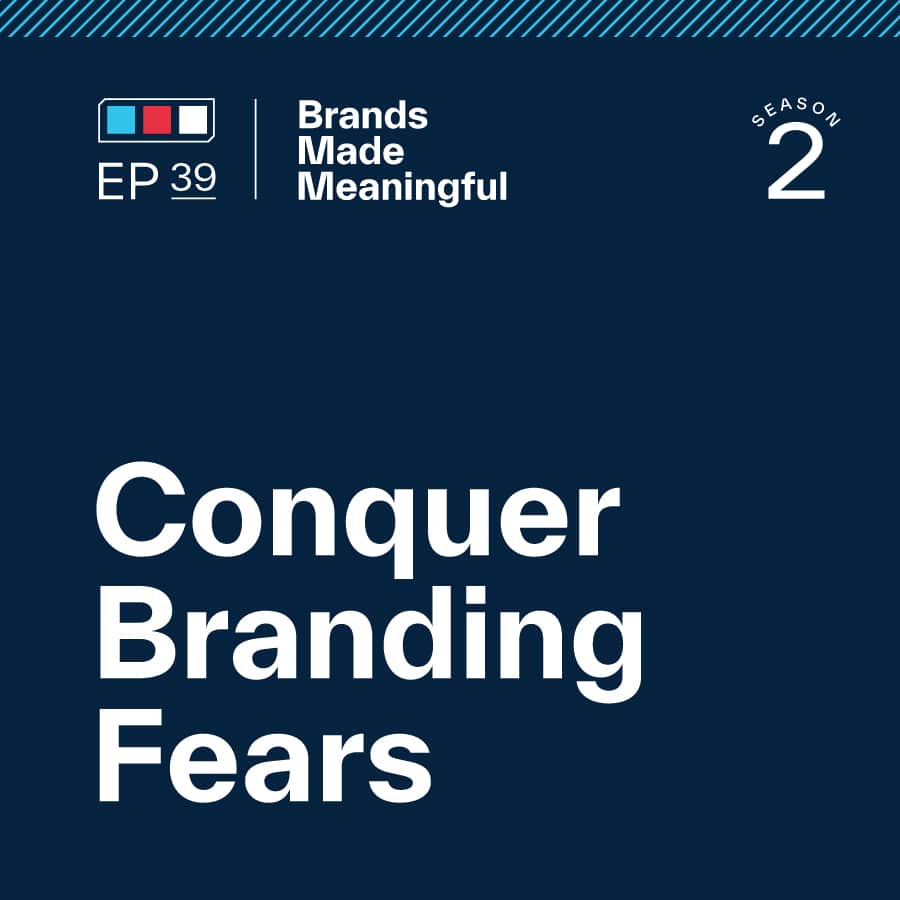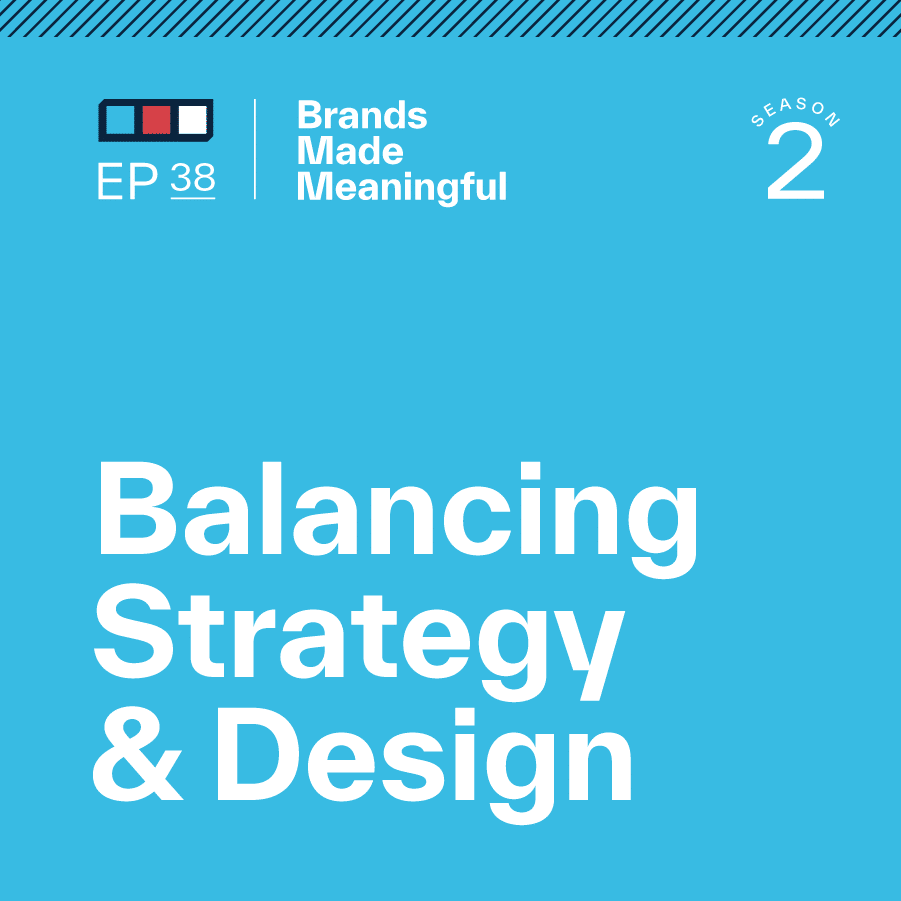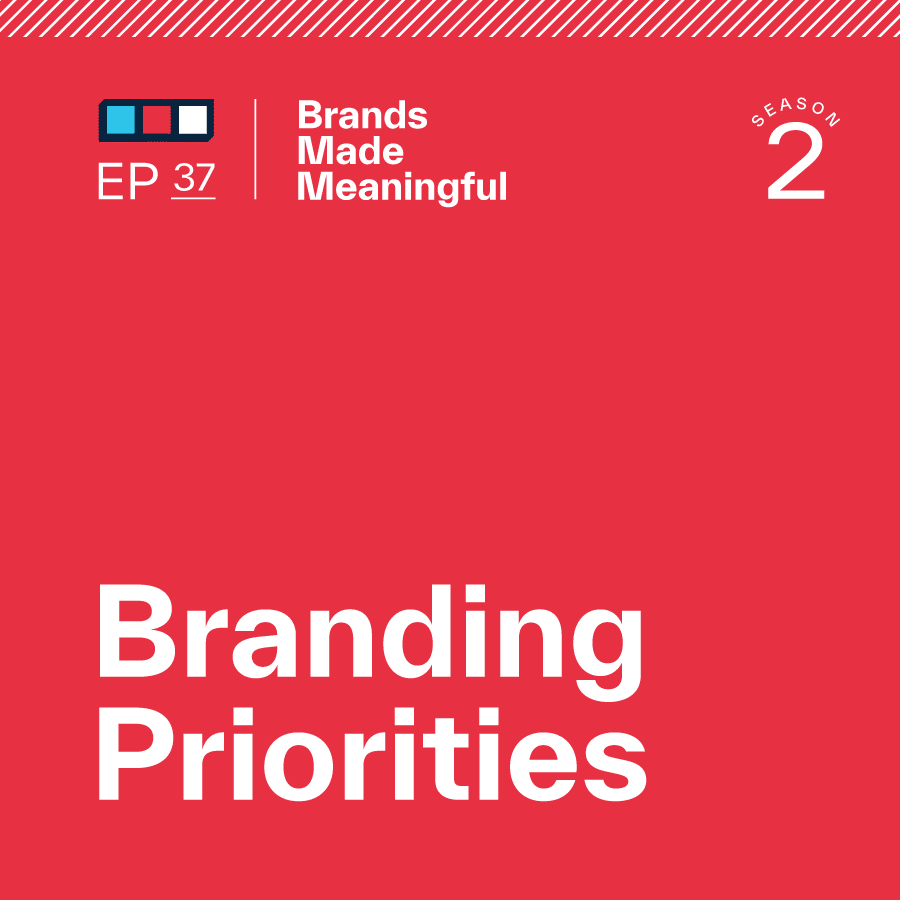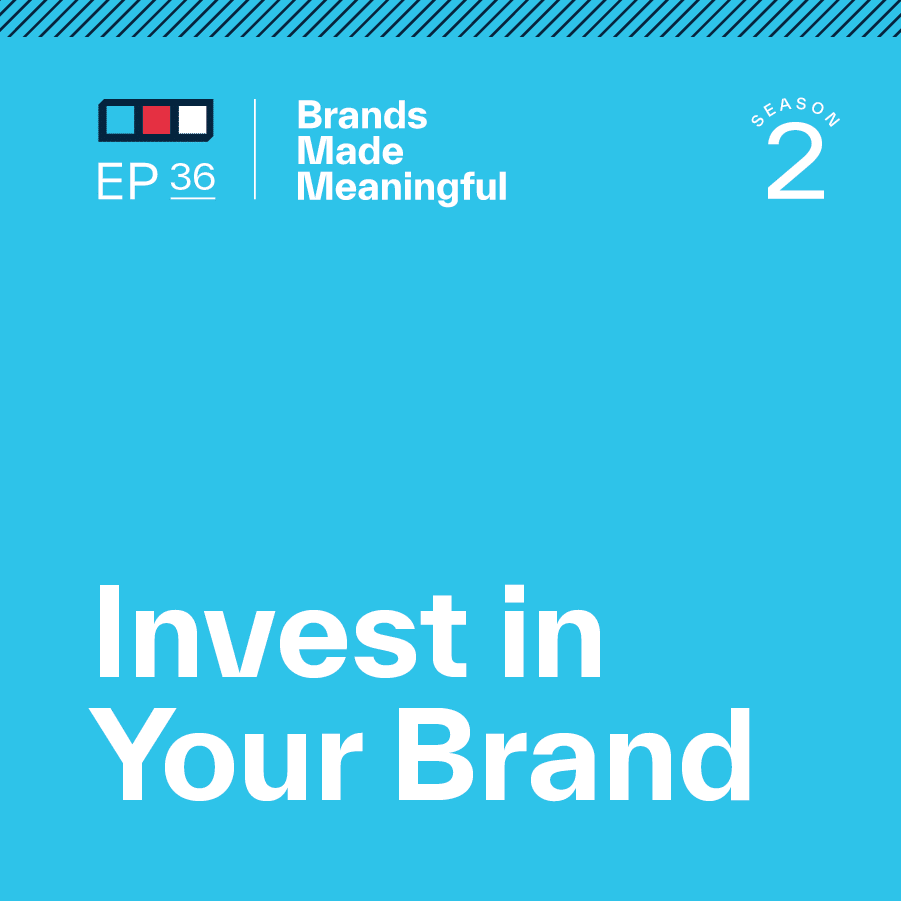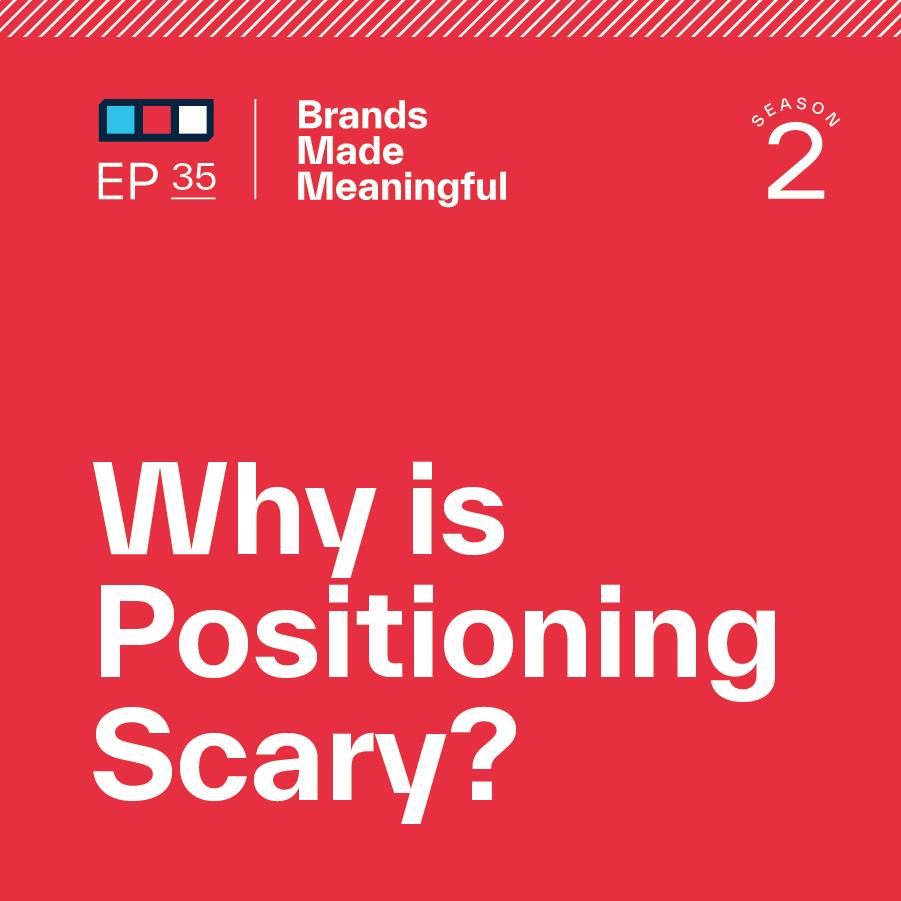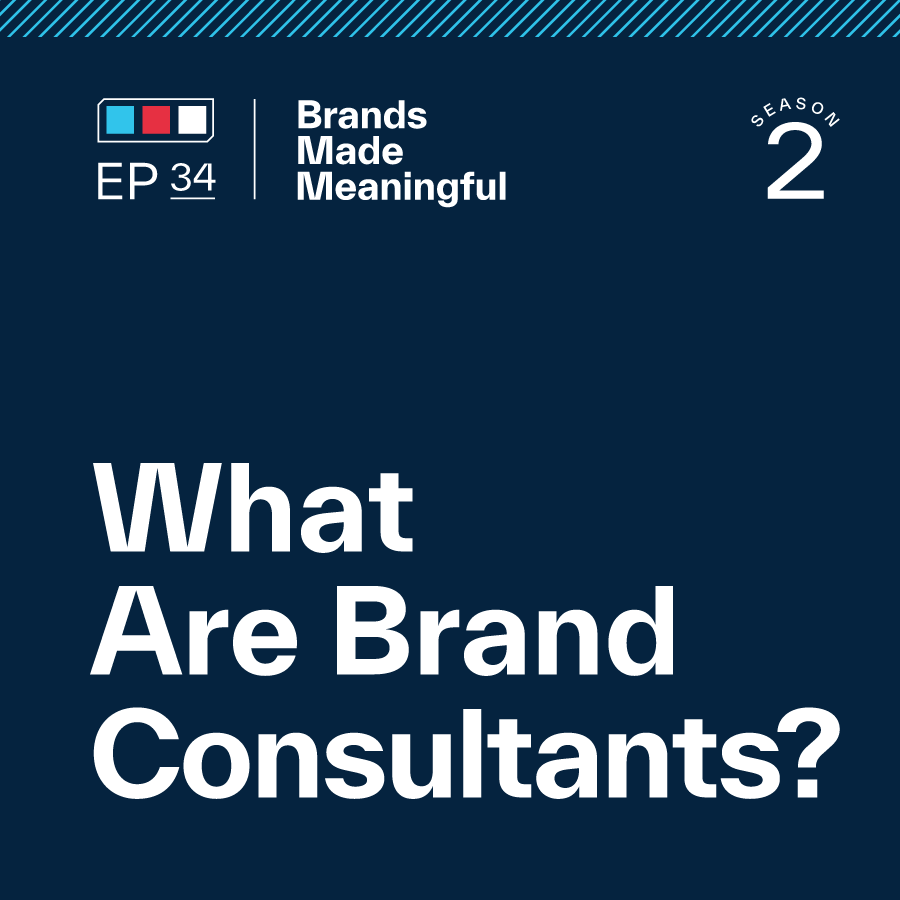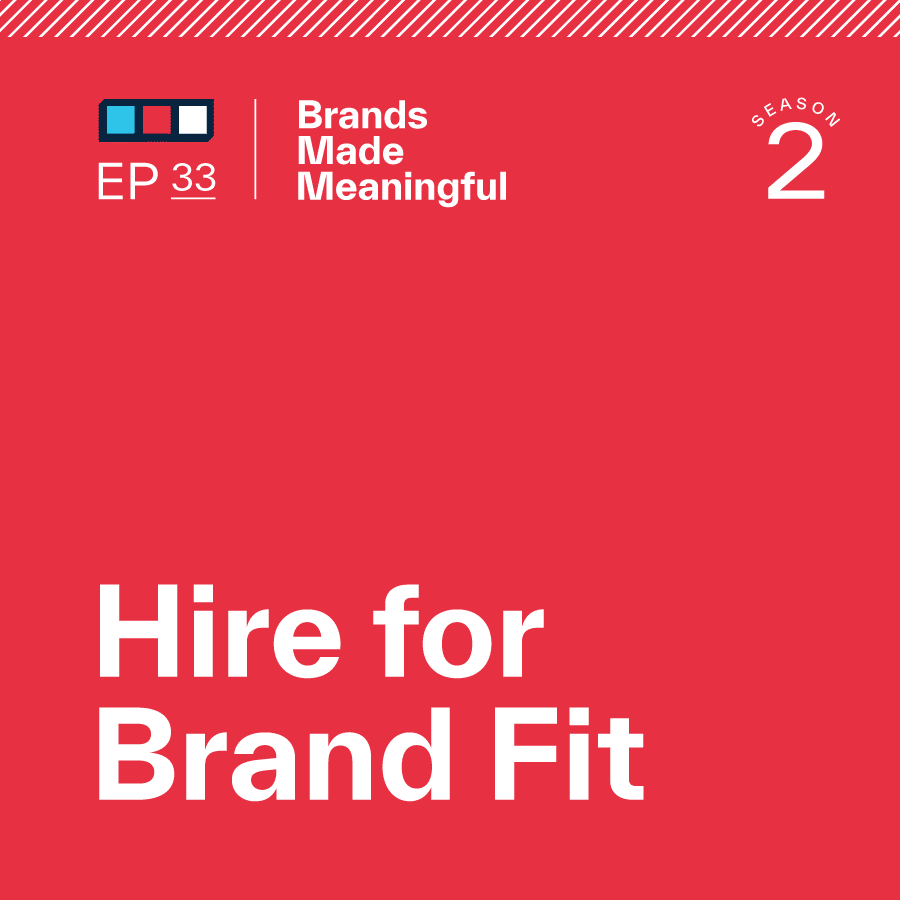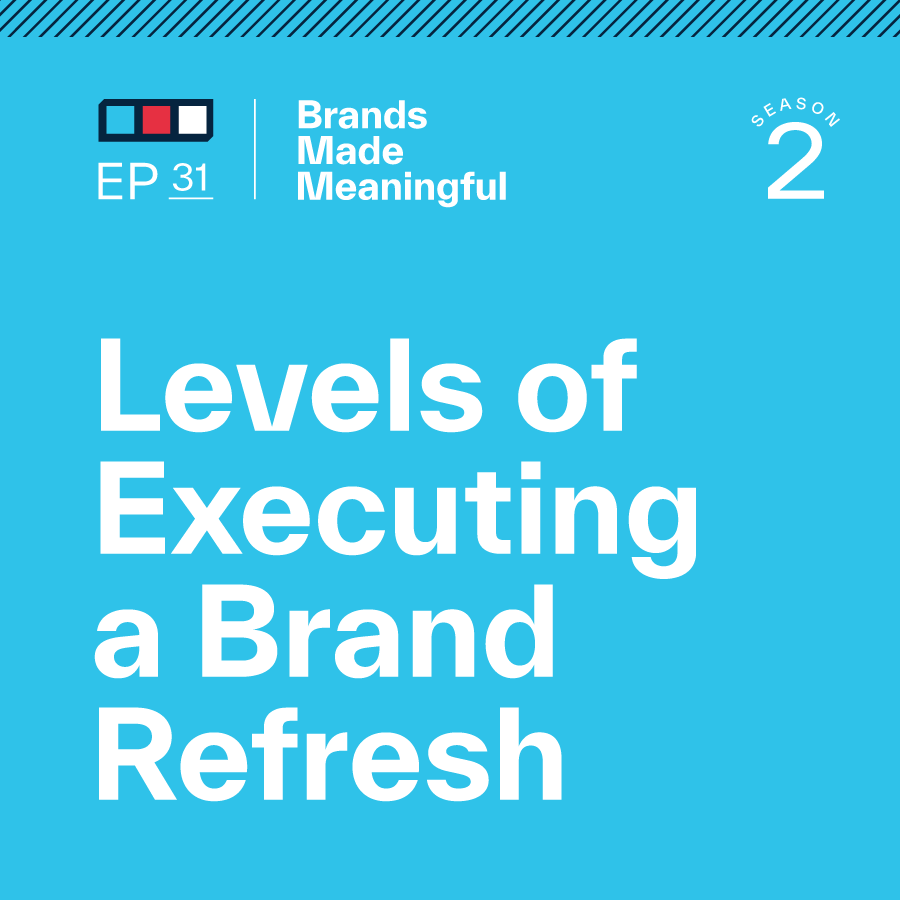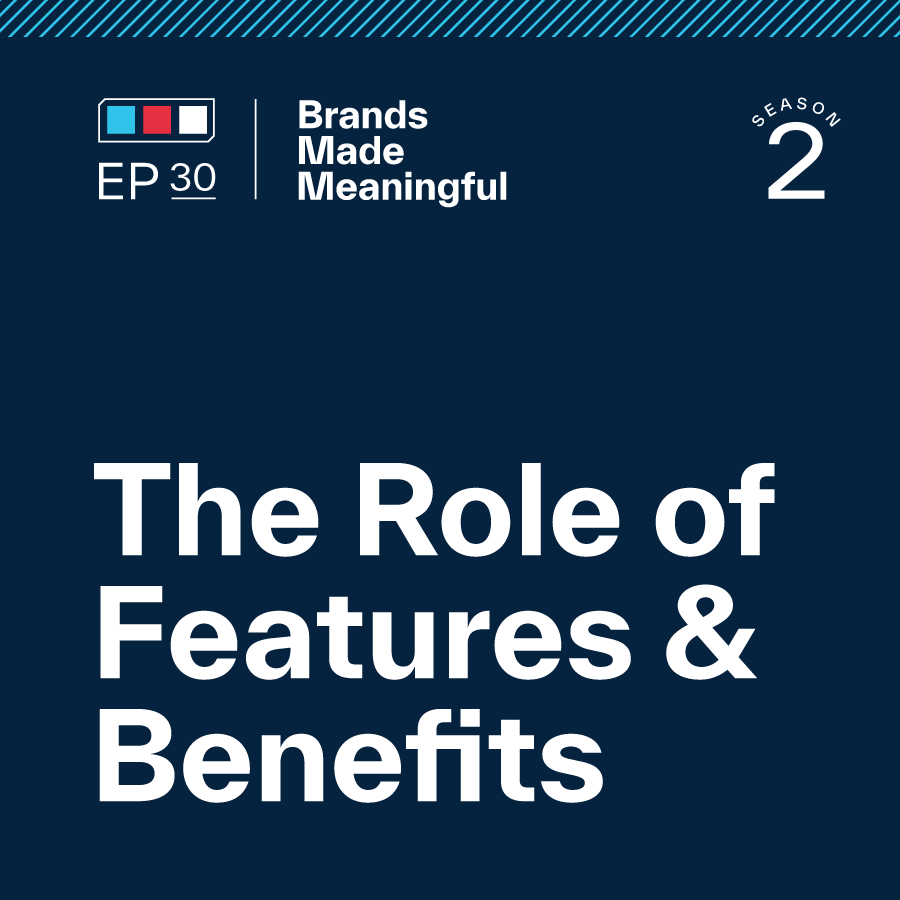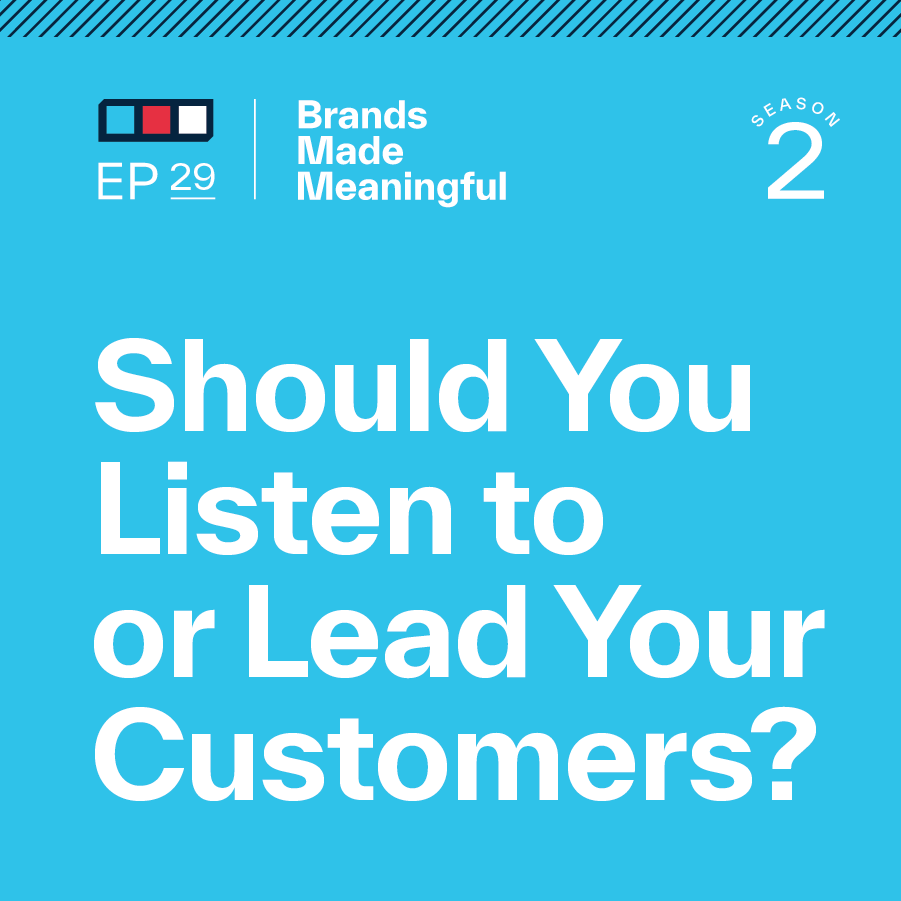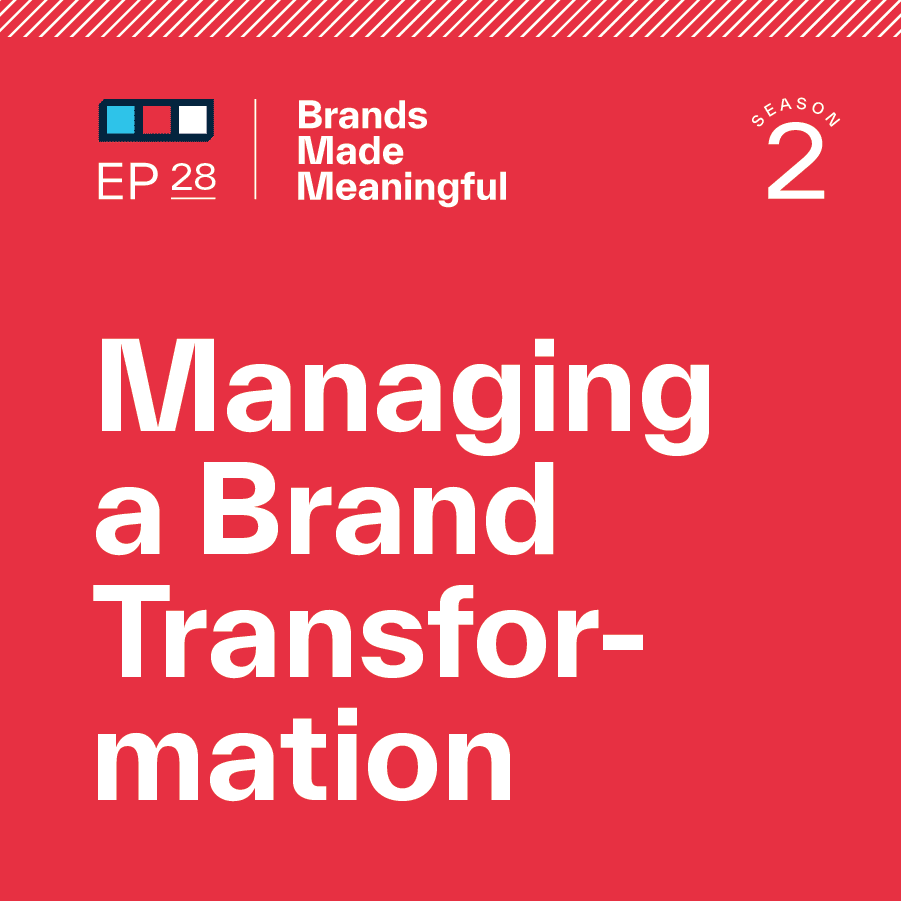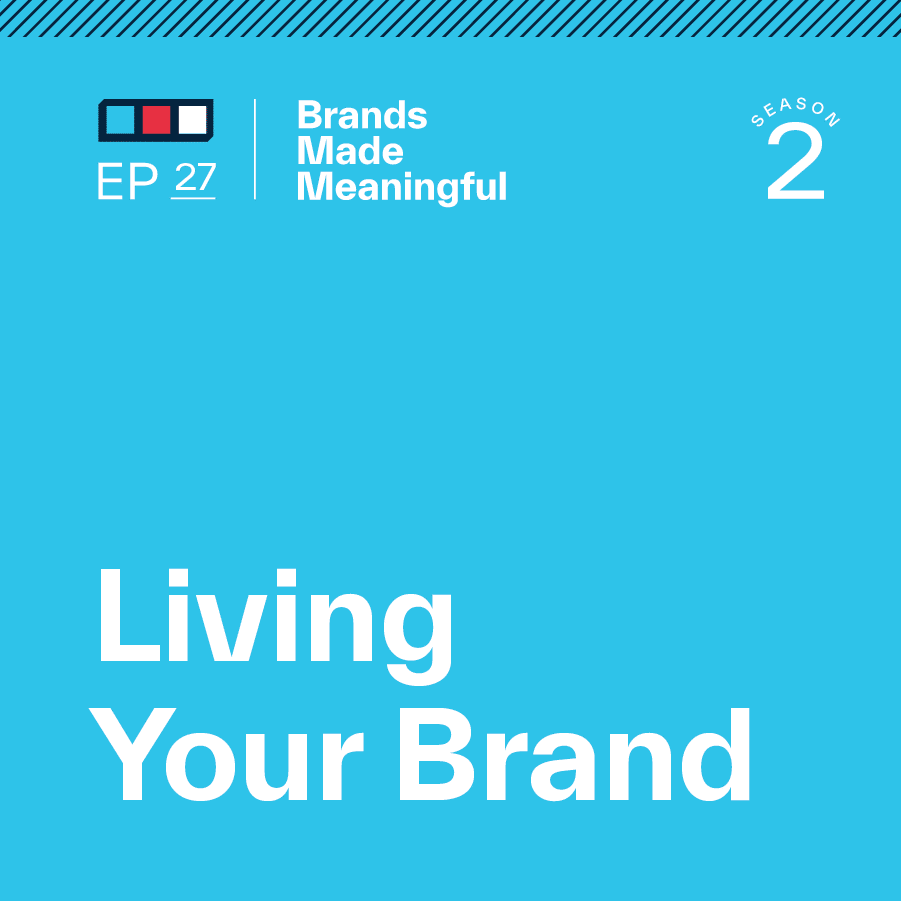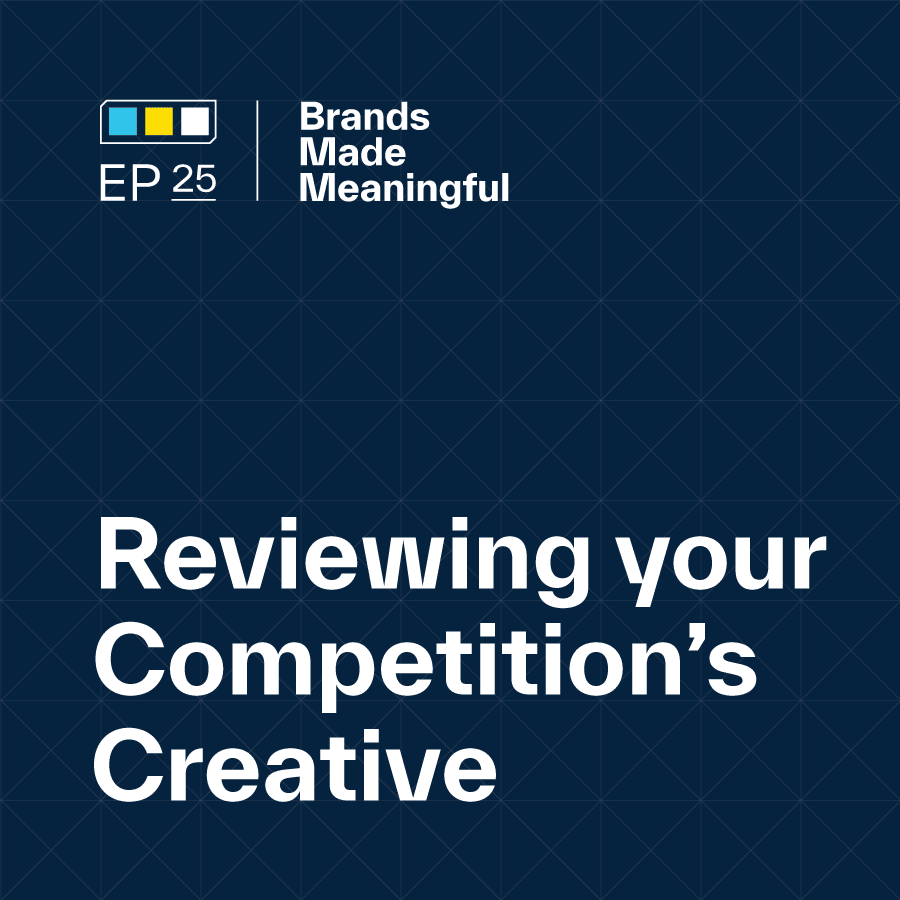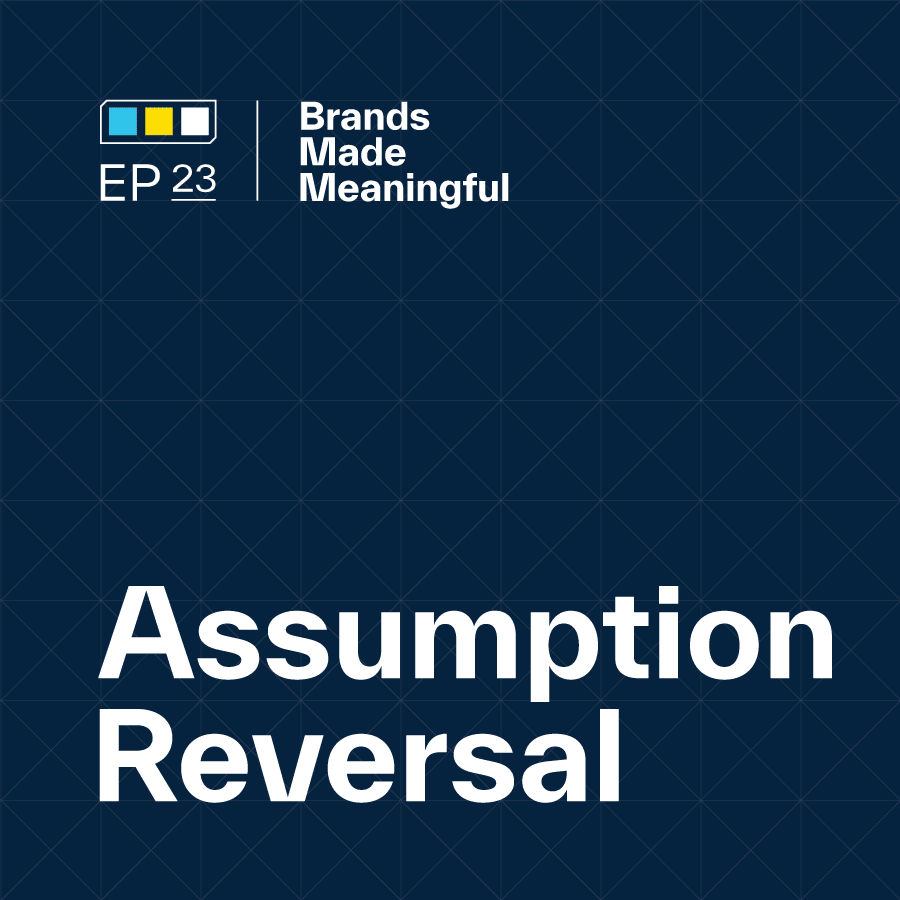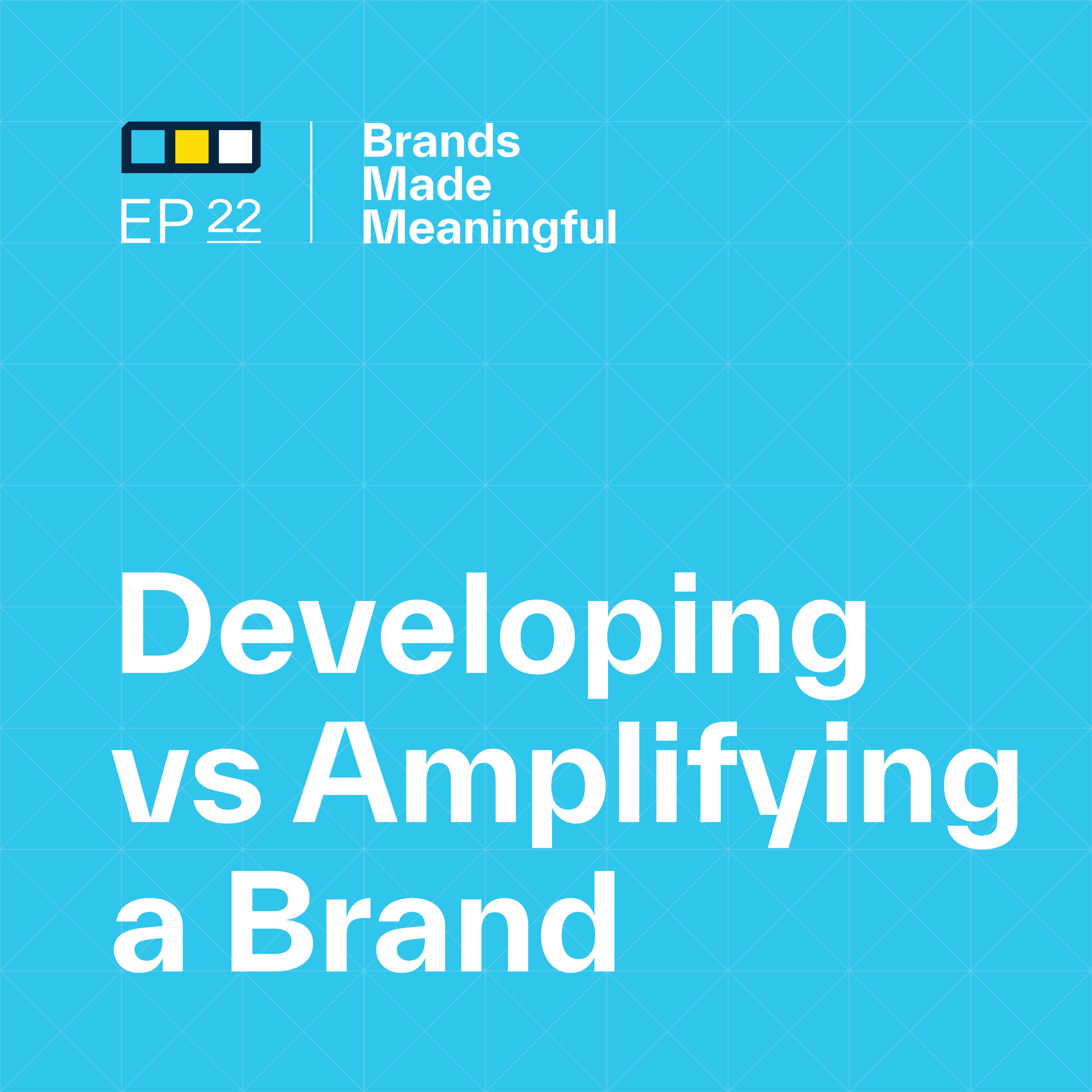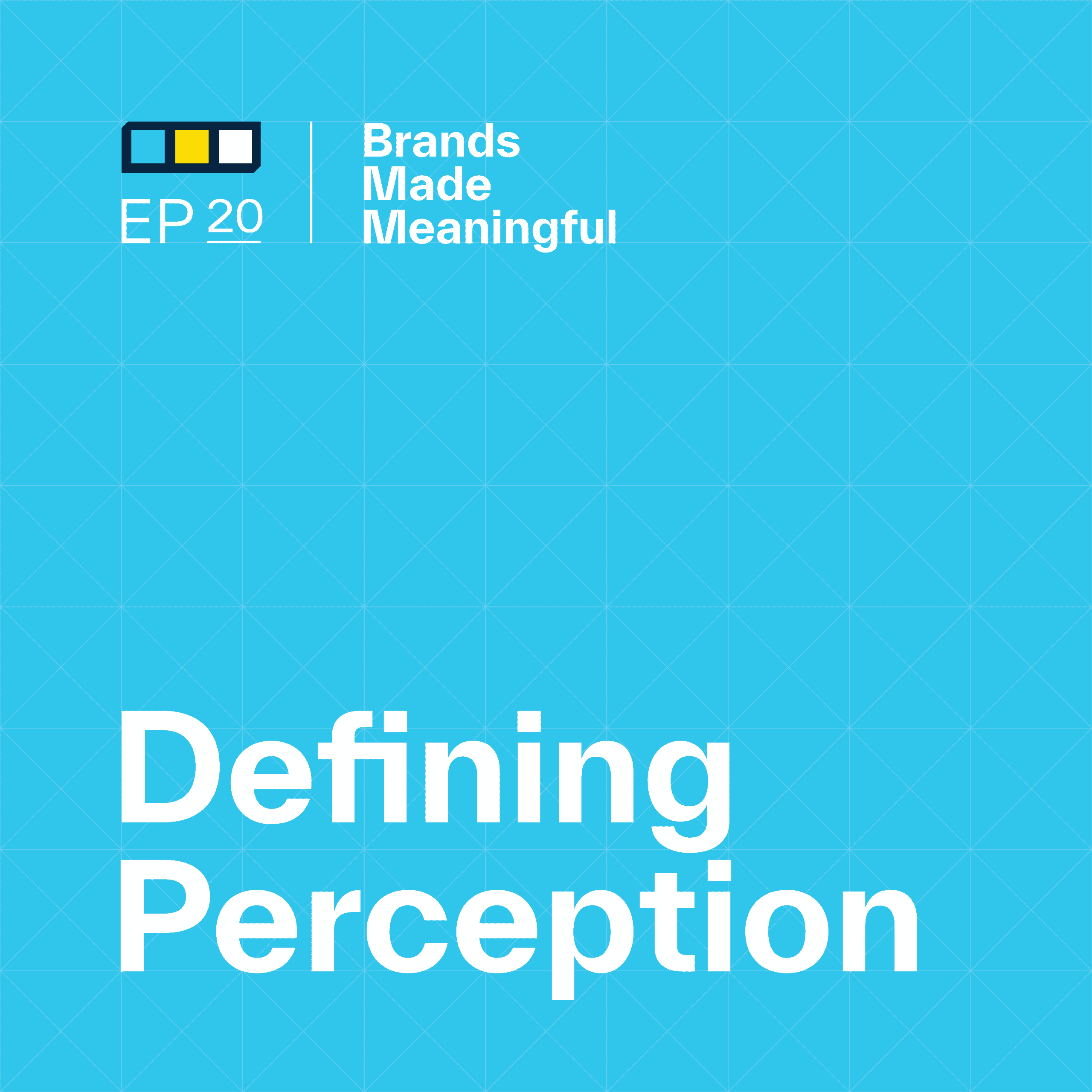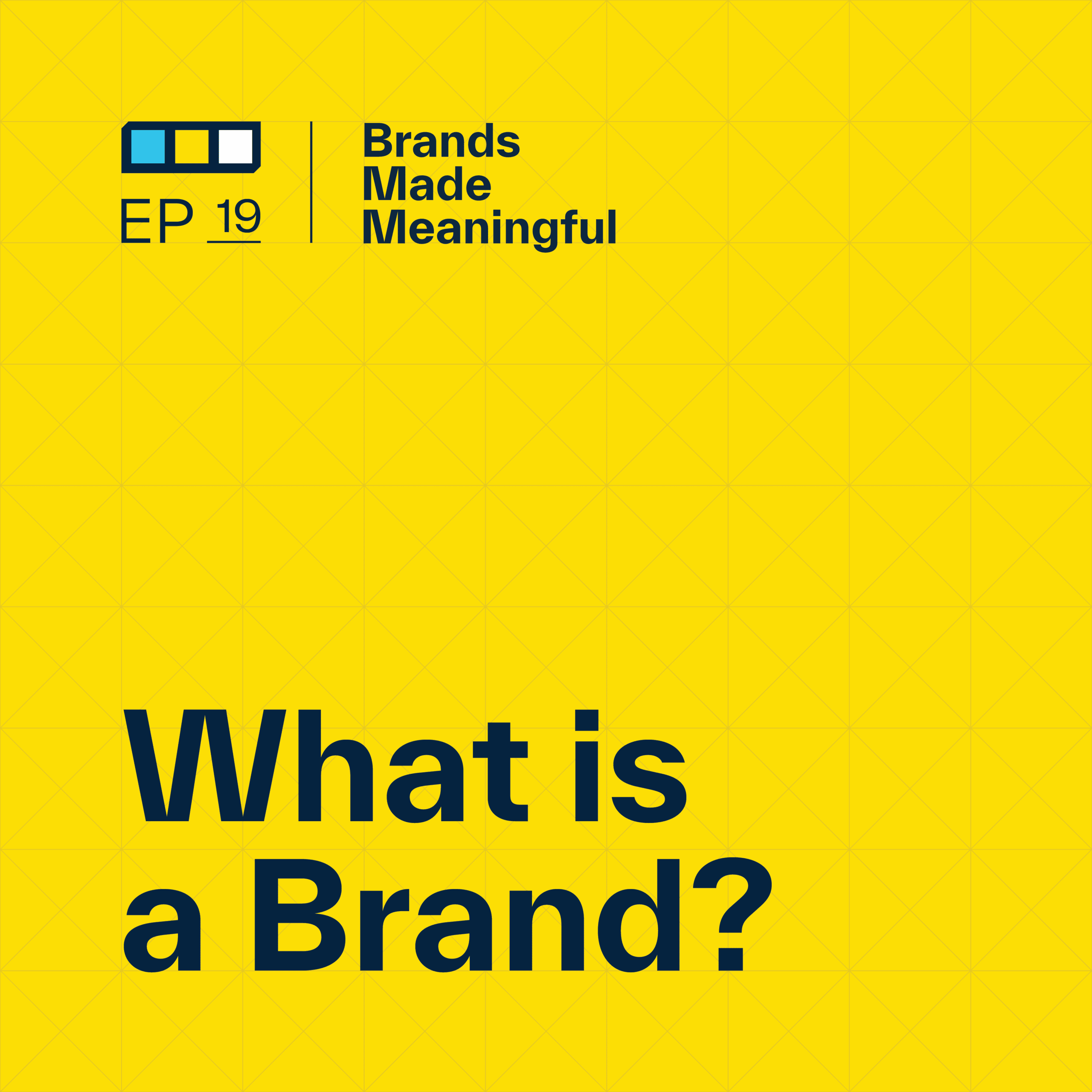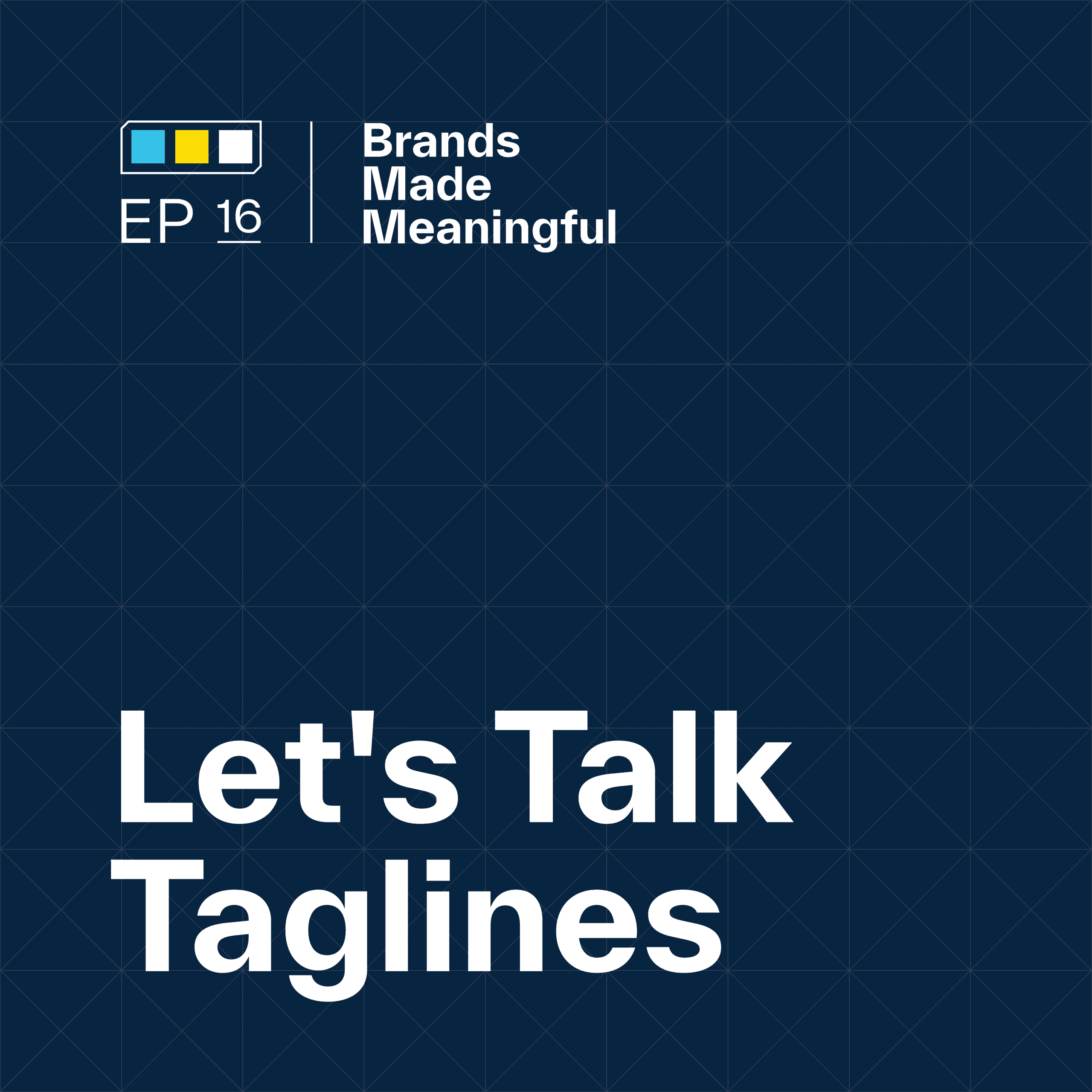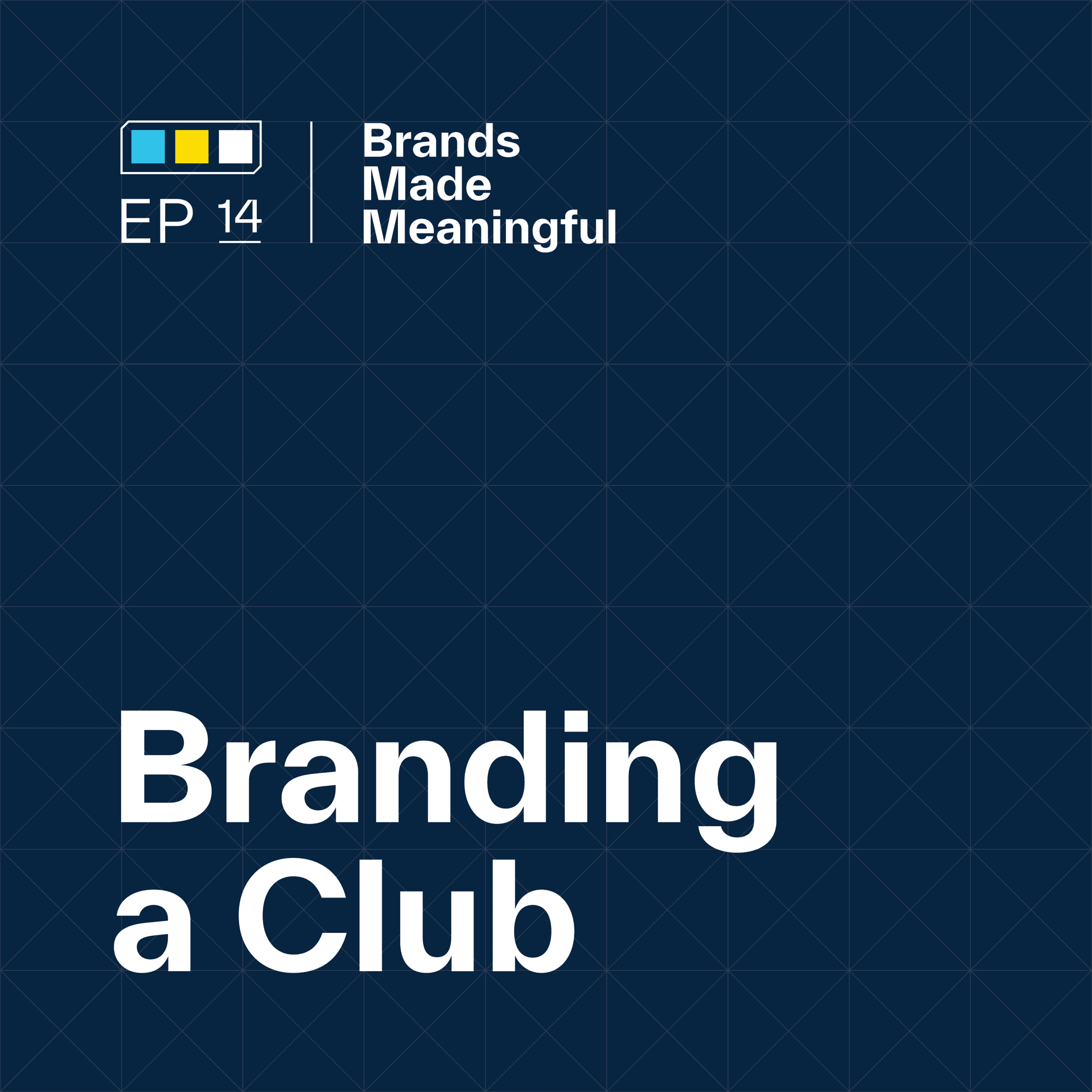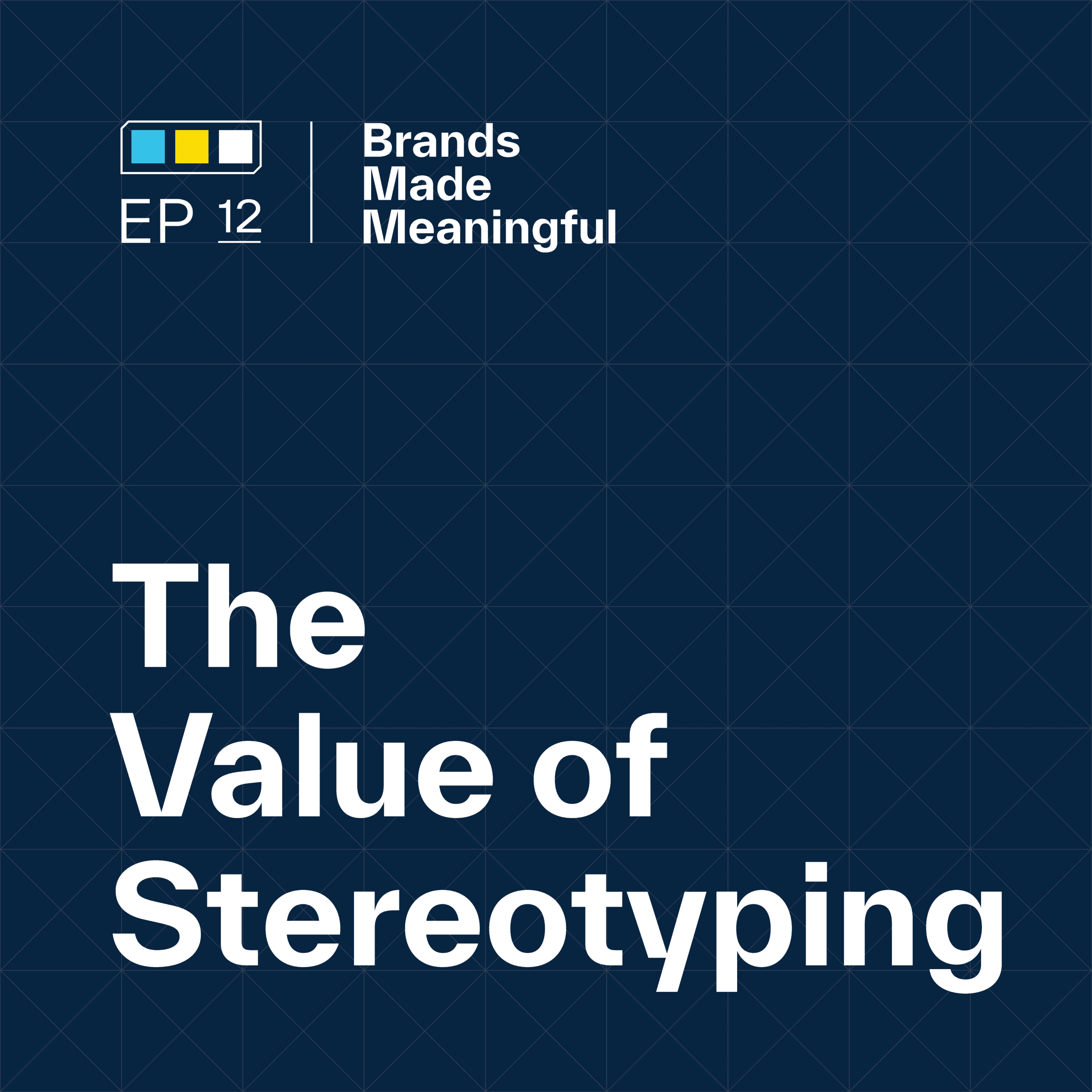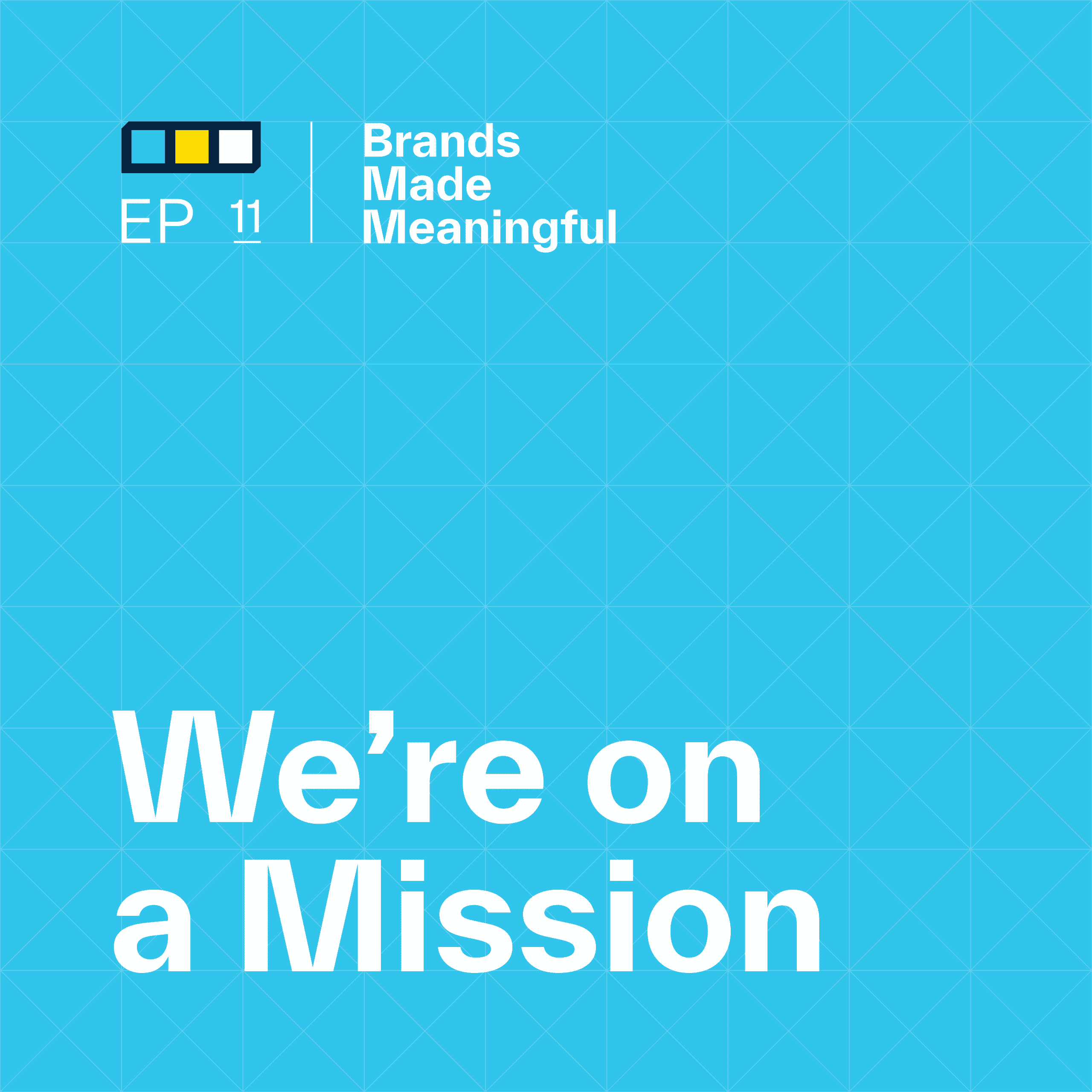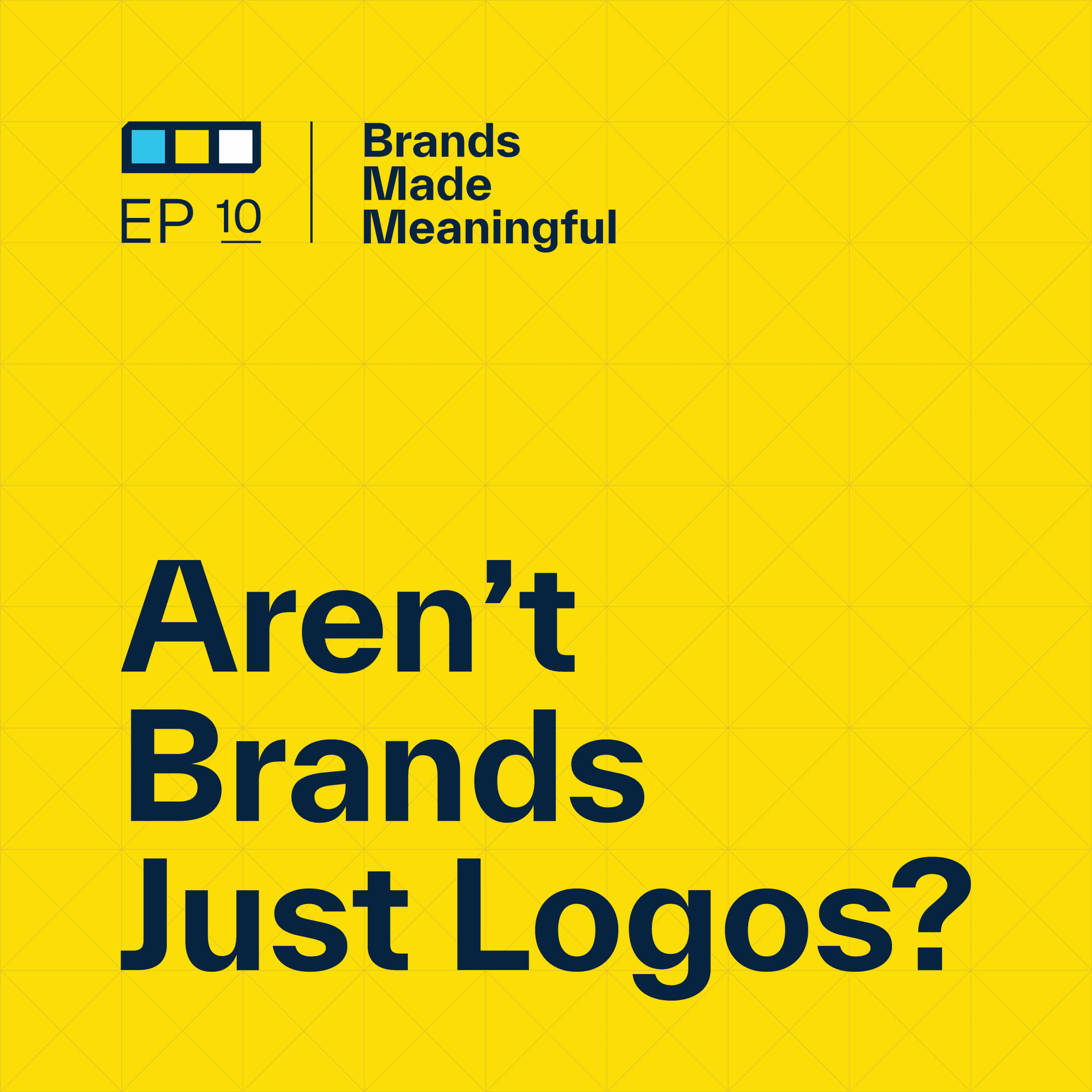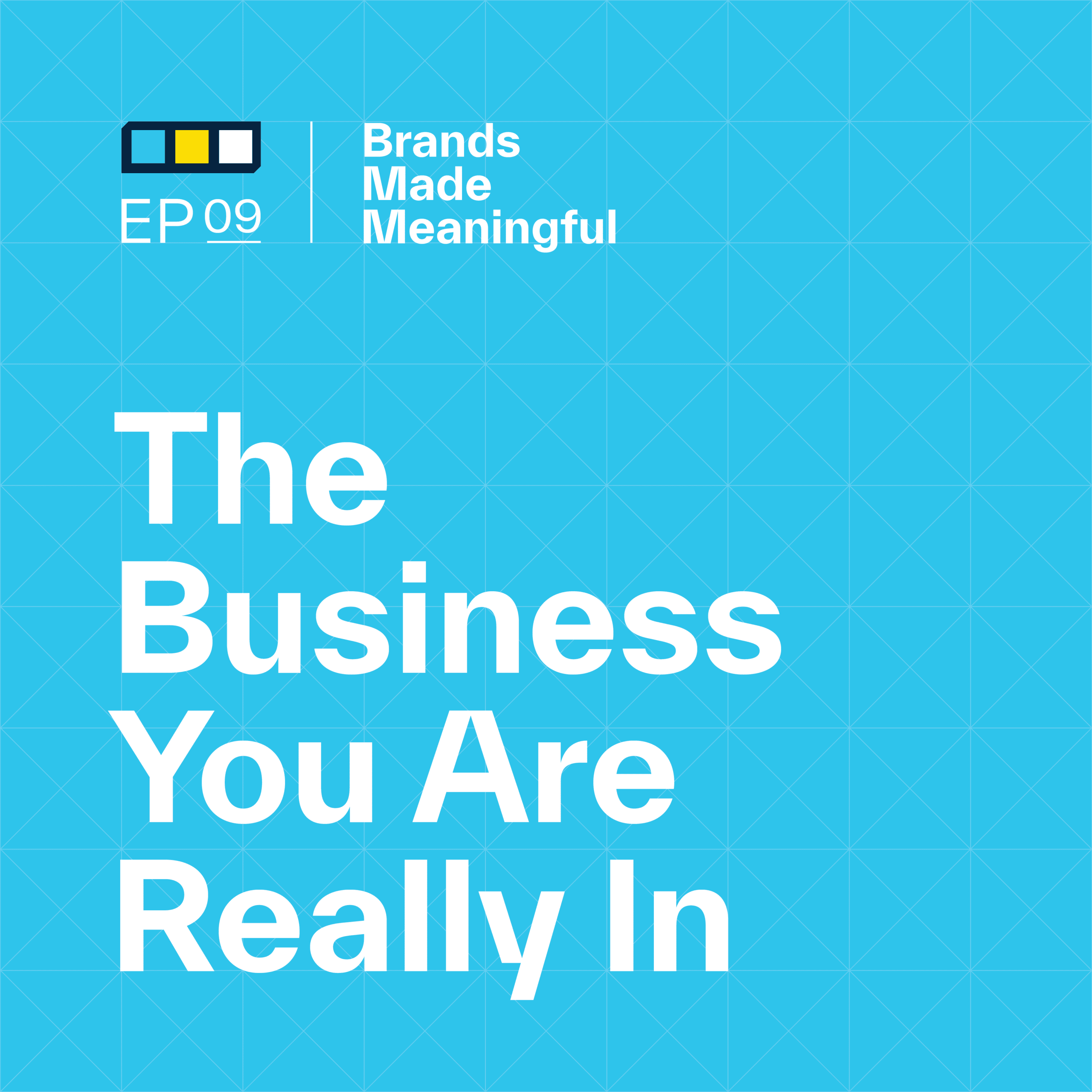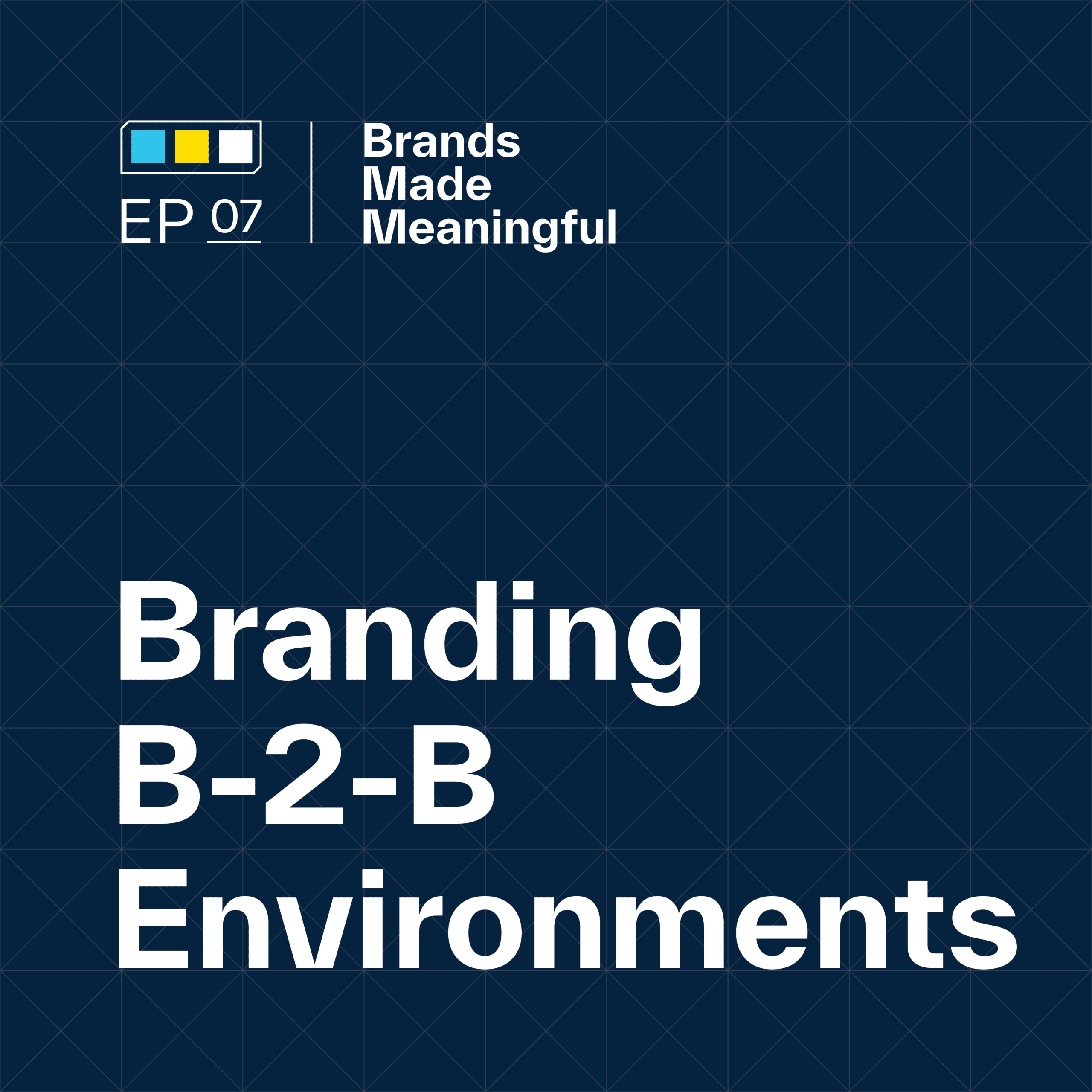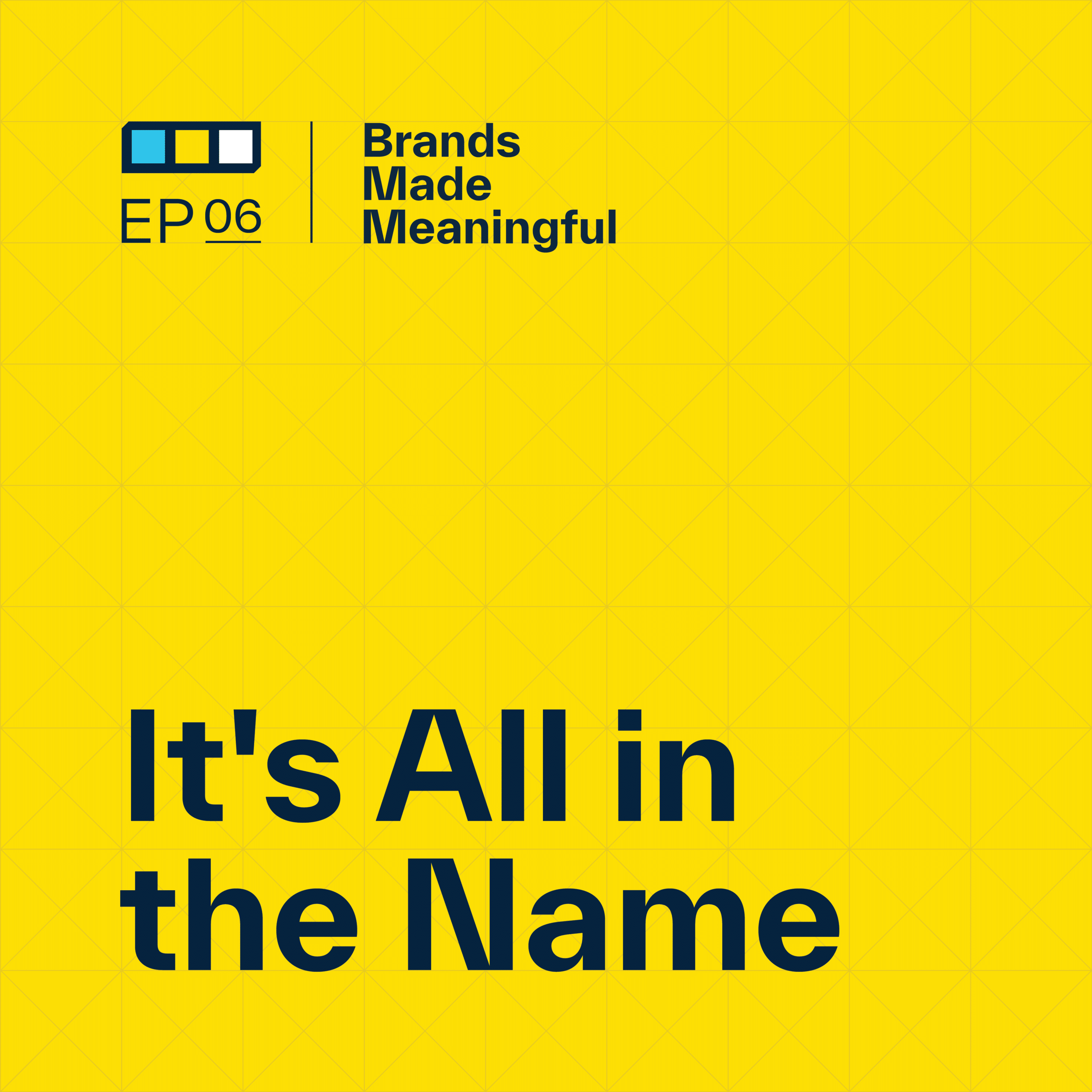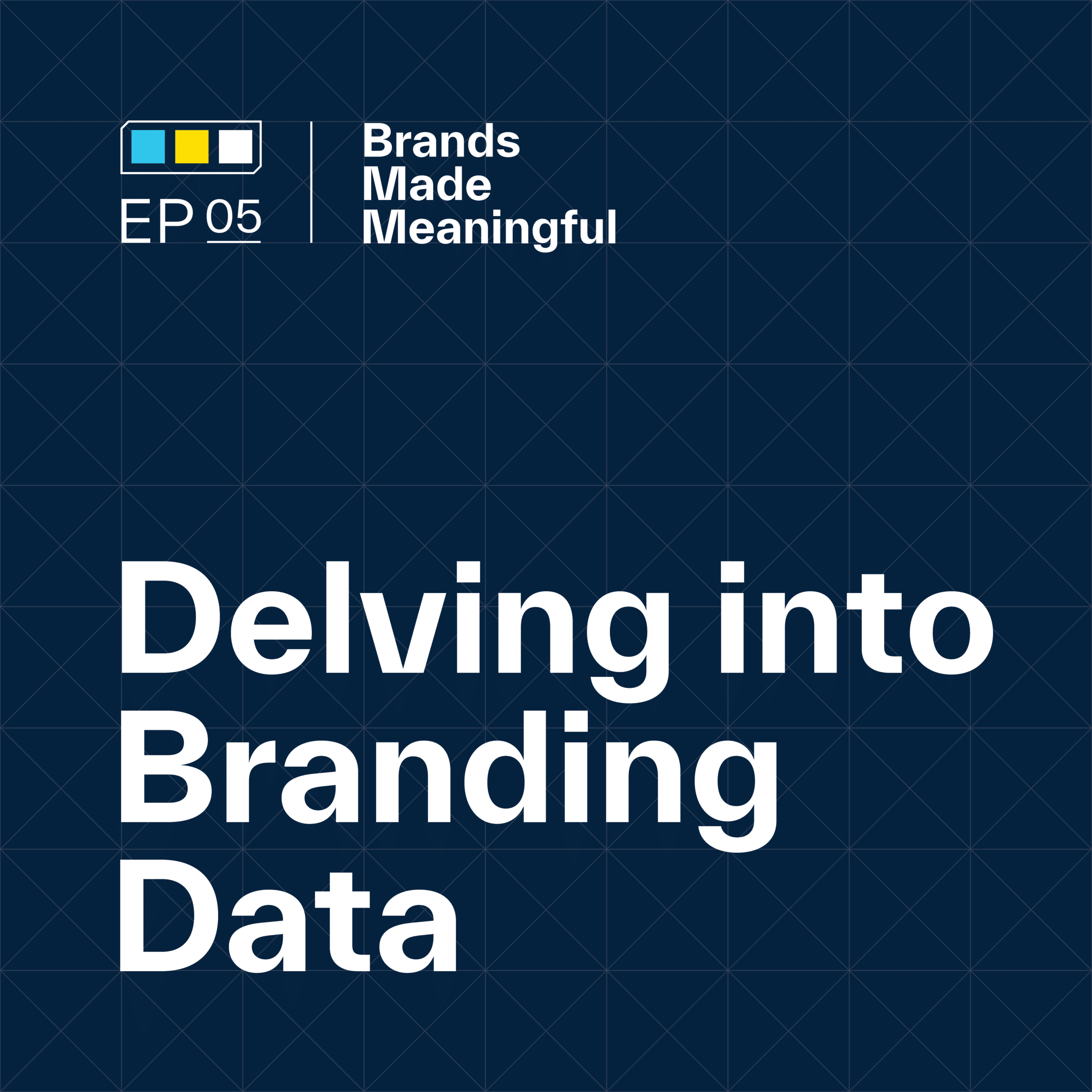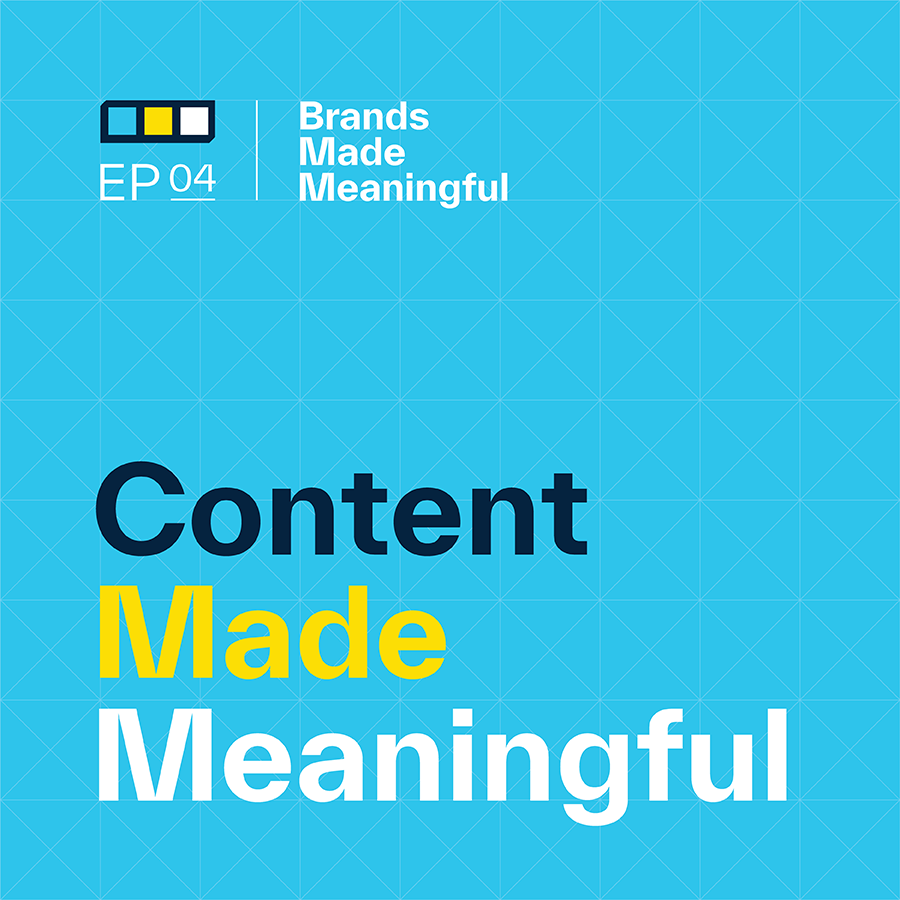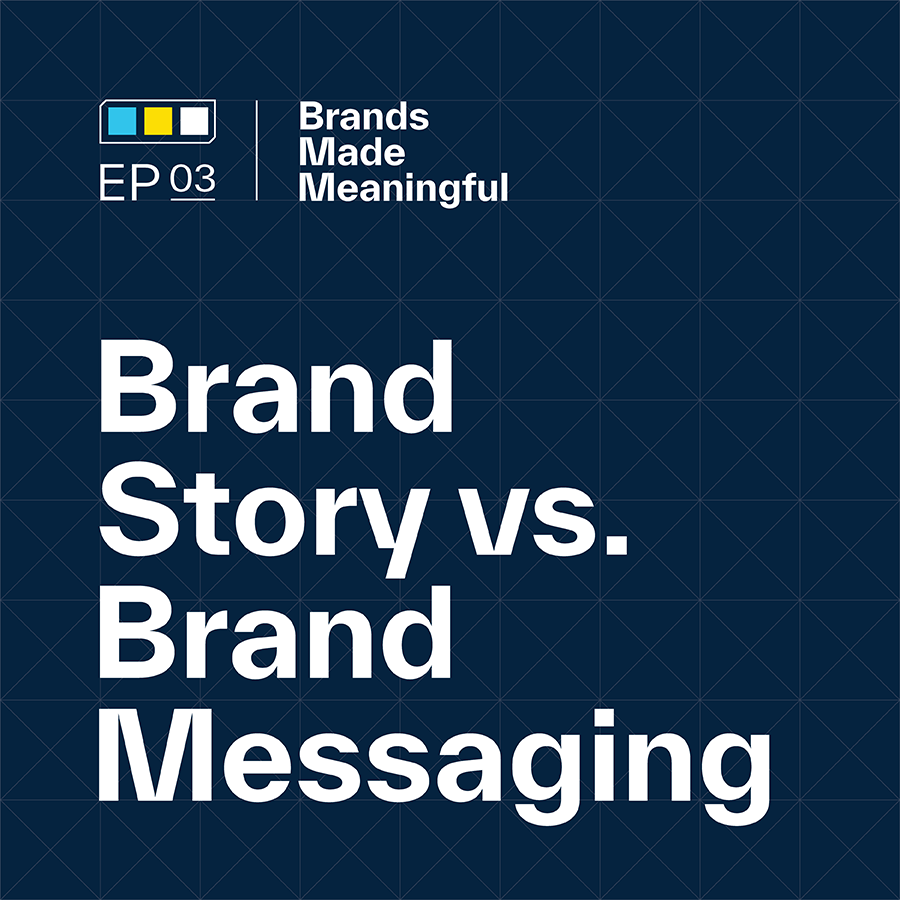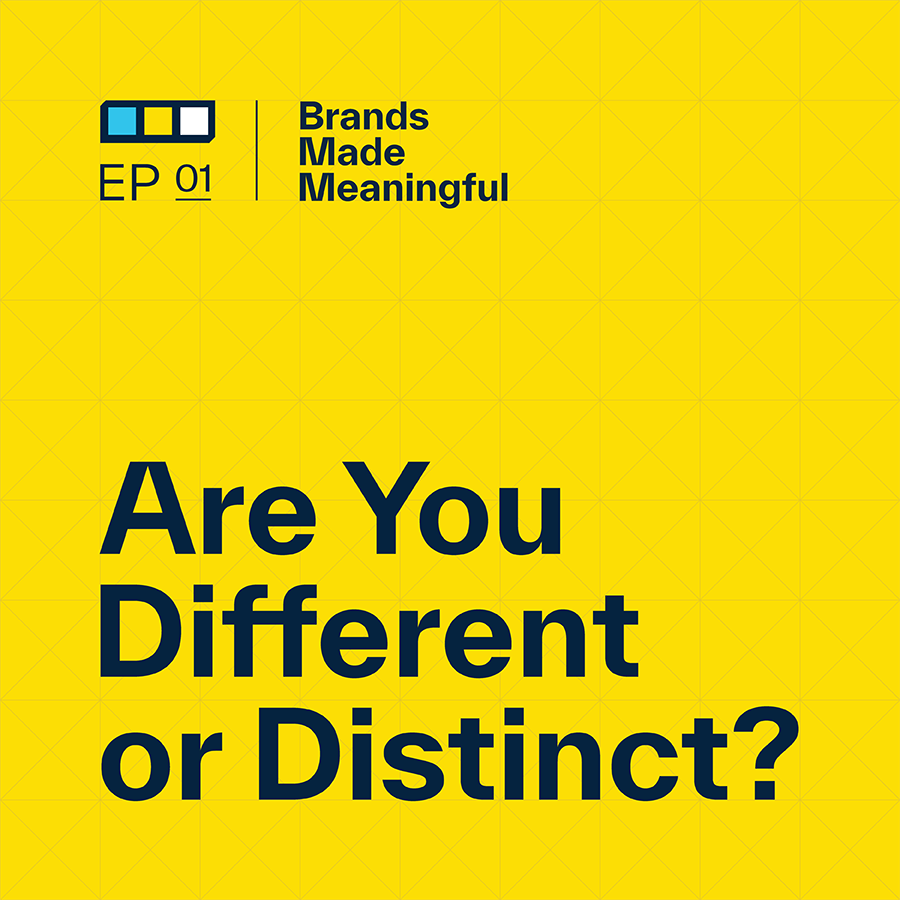EPISODE 32
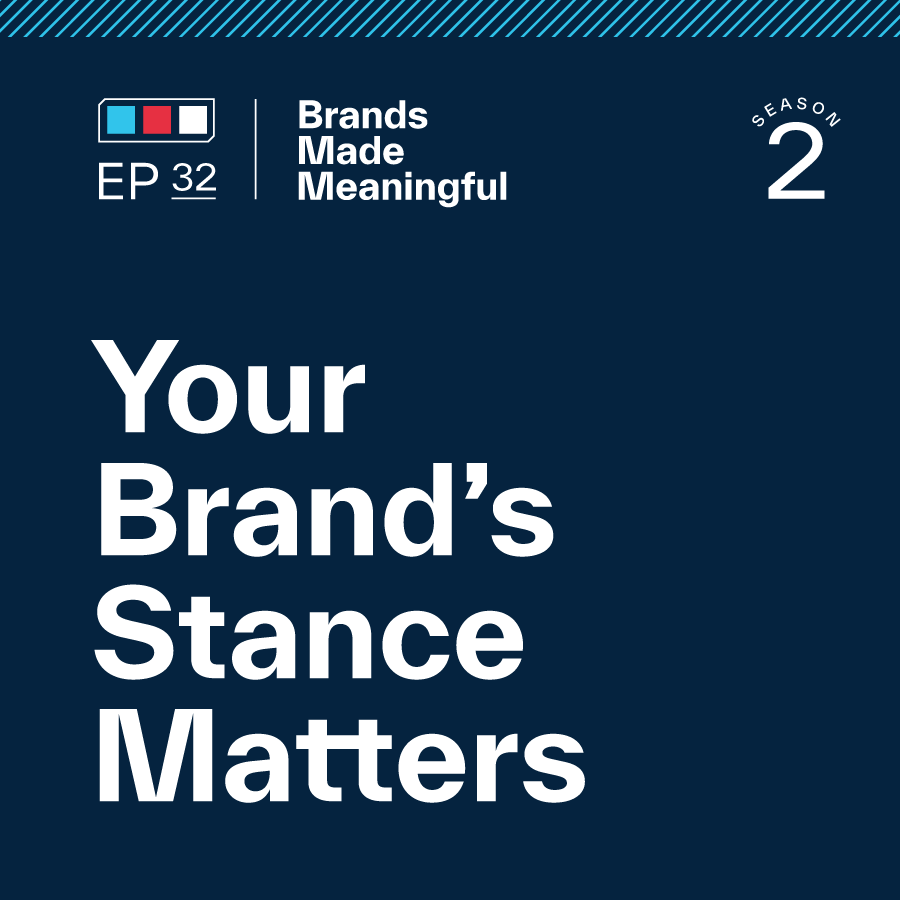
Your Brand’s Stance Matters
Episode 32
Your stance can help define your brand from a core level and make branding, hiring, and marketing not only easier, but more meaningful.
EPISODE TRANSCRIPTION
Today we’re talking about what your brand could stand for and what that means, and why that even matters in the first place.
Derek We talk about what you think your brand stands for, what you feel your brand should stand for, and how that aligns with what your clients and your customers need you to be all about.
Expand Full Transcript
Tucker This conversation really was catapulted into place here by a blog post that was recently sent out by Seth Godin. And it was fantastic for us. I’m not going to read it in its entirety, but it really got under this mindset of, Are you trying to get people to want what you want or are you trying to get them what they want? That also helps you get what you want. And there’s this difference between where they sit in the front seat and you’re in the back seat, or you are in the front seat and they’re in the back seat. For us, it was really about this brand stance being a great opportunity for you to say who’s the most important person in our story.
Derek If anybody has tuned into previous conversations that we’ve had, we’ve talked about taking the position of being the hero in your story or being the guide in your story. And this is, in many ways, a continuation of that. Many businesses start by taking the thing that they’re good at, what this individual person who starts a business is skilled at, and then starts a business and hopes that people show up versus identifying an opportunity, identifying a need and a want, and then positioning that business and its opportunity to actually serve those customers. And there’s a nuance that’s a little different there. But one of those two approaches in figuring out what your brand is, and what its stance is, is way more effective than the other.
Tucker For those who are not familiar with this kind of work or this conversation, or maybe even just this theory in general, let me back up. In today’s super competitive brand world that we live in, brands are constantly seeking new ways to stand out from people. They’re looking at ways that they can feel different, sound different, and connect with people on a whole new level. And one approach that’s been increasingly popular has been to embrace a really strong stance in your brand. And what do we mean by stance? We mean that this could be something like a mindset such as perseverance, or it could be a movement such as social justice or maybe sustainability. But those stances can really help define your brand from a core level and can make branding increasingly easier, not only for organizations like us who help you with your brand, but also for your own team to make brand decisions to hire the right people based on what they believe and what they like, to be able to R&D products that make sense with what you stand for and all these other things. And I think defining this has so many great levels of impact that people just aren’t utilizing.
Derek The Seth Godin quote that drove it home for us, which is such a nice way of saying it, is that there’s a really big difference between what you want to stand for and what your audience believes you should stand for. And in a perfect world, there’s an alignment there where those two are the same or similar. The problem often happens when there’s a big disconnect.
Tucker I was in a meeting last week talking about this same subject with one of our clients and they flat out asked, What are we allowed to stand for? What do we have the right to stand for? And that was super powerful to me to say they understand that not every stance is available to them. With their audience, they might not be able to stand for certain things because their audience doesn’t believe it, or maybe their audience doesn’t care about it. And that can really make a difference in how you approach this type of work.
Derek The name of the podcast is Brands Made Meaningful and we talk about meaningful and intentional and purposeful. I think another synonym that’s come up now is the word authenticity or relevance. And so today’s conversation is around landing on a brand stance that does make sense within your own organization, but it has to be relevant to your audience. You have to believe it. It has to be relevant to you. So you have to believe it, own it, live it. And I think if you created something that was so aspirational or so detached from who you really are, just because you thought that that would attract your audience, you’ll never be able to fulfill that either.
Tucker We had a conversation on a podcast not too long ago, actually, that was all about whether you should listen or should you lead your customers and how that works and what’s the balance that you find. This topic has that same kind of note of how much you listen to people and how much you care about what they care about versus sitting back and saying, Well, we care a lot about this. And if our audience doesn’t care as much, then we either need to figure out if they’re the right audience for us or if we’re going down the wrong path. So it’s really important to listen to your customers and they will tell you what you have the right to stand for. But it’s super important to your point, Derek – what do you guys actually care about? What’s really important to you? Why do you do this every day? You could be doing anything. And I think that when you figure out why you exist, and why that even matters, that can really help you understand what stance you need to take.
Derek We don’t have to go too deep into positioning because I think we’ve had a separate positioning conversation. But positioning at its core helps you define who your audience is. We’re working with a client right now who, after a couple of meetings around a table where the leadership team got into some arguments, maybe too strong of a word, had some different conversations about what their stance could be or should be. And then in helping them facilitate that conversation, what we actually got to was a disagreement about who their actual client was. So without knowing who it is that that you’re actually serving or selling to, it’s basically impossible to say if we don’t know what we stand for and we don’t know who we do it for, then we’re either nothing to nobody or we’re everything to everybody. And that won’t help us stand out if that’s ultimately what part of this goal is.
Tucker When I think of positioning, there are three things I could probably talk all day about, but I’m not going to. And the three things that are really the focus are, Who do you serve? What do you mean to them? And why should they care about that? And this kind of all gets wrapped up into, What do we stand for? It for sure matters who we’re talking to. And I think a lot of people would go, Well, we have a lot of audiences. And that’s absolutely true. But who is your primary audience and who are the people that you care the most about? Who are your avid fans? Who are the people who are with you in thick and thin and that you care about? What is that 80/20 rule? 20% of our audience makes up 80% of our business. Who is that 20 and what do they really care about? So how can we find the common ground there? That’s where I would start. When I look at any of this stuff to say, What’s the common ground? What do we really resonate with each other on and why do they get us and we get them? There’s got to be something there if you’ve worked with them long enough to really get it.
Derek So if you have a pretty good sense of who your customers are, how do you find out what they really want from you? That goes above and beyond the one that we may kind of pick on all the time, which is customer service. So let’s assume they want great customer service. How else do we know what our customers want from us?
Tucker It starts with research. If that’s qualitative or quantitative, we have a whole conversation about research as well. But if you’re not doing that research and asking the hard questions to say, Okay, what do you want from us? What do you buy from us? Straight up. And then after that it goes, Well, what does that get you and why do you even care about that? Whereas you could buy that from anybody else. So think of professional sports. You watch this baseball team versus this football team. Well, why do you watch baseball? And what do you get from that that you’re not getting from football? If you dig into some of those things, you can find the true emotional drivers and those emotional drivers are really going to help us in the storytelling element. Whereas sometimes there are practical drivers. There are some of those realistic, Why buy this because of whatever and that’s less emotional-based. Those can help, but those aren’t really going to be the drivers that help us find this stance.
Derek I think it’s really easy for us to make assumptions around what our customers want, especially if we cloud that answer with what we want or what we individually want ourselves as human beings and put ourselves in our customer’s shoes instead of looking separately at what our customers want, and it may be a little bit more a hard light. It seems like common sense, but finding a way to ask your customers what they want can be incredibly enlightening. In the one example we were talking about, we’re doing some work with the Minnesota Vikings. And one of the things that’s very top of mind for everybody right now around football, not just professional football, but all levels of football, is the violence, the danger, the potential for injury. And is that something that’s deterring the fans, the current fans, and the future fans, or not? And I think that one of the assumptions that we had as a team going into this project was that that level of aggressiveness is not what they want and is something that the Vikings, or all professional sports, specifically football, needed to find a new way to think about. And in part of the surveying that we did of the customers of the fan base of the Vikings, correct me if I’m wrong, but I think that level of aggressiveness came in as one of their top three things that they actually love the most about professional football.
Tucker You’re totally right. We went in with the mindset of what we heard in the qualitative side. In some of the interviews people were like, I don’t like football because of the danger and all these other things. But when the quantitative research came back and said, Yep, never mind, that’s not true. People love it. The reason why they watch is the danger. And the aggression actually makes them more intrigued in the game. And that points out to say we thought it might be a weakness, but it turns out to be a kind of core part of their value proposition to reach fans to say, Hey, what you don’t get in basketball and what you don’t get in baseball is the aggressiveness and the danger that comes along with playing the game. And whether or not that works in every market is a different question. But in this market, in the market that we’re talking about, it absolutely does. You can assume all you want and you can have a belief all you want. But the most dangerous thing you can do as a leadership team is to have an assumption based on something that you’ve heard or something that maybe your friend has said to you and not actually validate that within your market because that’s not always the case. And you’d be surprised what you get back.
Derek Why does this whole topic even matter? Why story, stance, essence, or position? Why do we keep talking about this? I feel like we beat this drum on many, many levels in a lot of the conversations that we have both in these podcasts and actually with customers. But why does this matter? Why is this so important?
Tucker It’s all about connection. To me, it’s all about creating more connection points with audiences. The way that we’re moving forward is that attention is a really big part of that. Think about the attention economy. People literally pay for attention all the time. And as we keep going, this is just another element, just another layer that can be added on to say why you should care about us. And I think that’s that big question around caring that not all brands can answer. If you have a great stance that everyone else cares about, that can really, really help you when you say, Why should you care about Patagonia? Because we’re not only a clothing company that makes great clothes, but we’re a clothing company that’s trying to save the world from, you know, X, Y, and Z. That makes a big difference for the people that buy from you. And it creates those avid fans that are willing to not only buy from you but also tell their friends about you. Tell other people that have that same mindset about you. This just creates a whole other level of inspiration that you can create that can help you message properly, that can help you really stand out against other people because you’re willing to stand for something, whereas competitors are not.
Derek It gives people a reason to choose you over everybody else. In the challenge that all businesses have of standing out, standing apart, and especially in the trifecta that you outlined, What does that mean and what are the levels and the components of that? The whole why somebody should care is in many ways what branding and the whole initiative of taking care of your brand is all about. It’s giving people a reason to help them understand why you do what you do to get beyond all these boilerplate, entry-level things that we default to like features and benefits or customer service. The other reason that this is so important is a pivot to your team and your people. It doesn’t just give your customer a reason to choose you, but if you are able to understand and clarify what it is that your brand stands on, it gives your team and the people that you’re trying to attract to be part of your team a reason to choose you too. And especially today, finding and keeping your talent is very, very important. It’s always important but today it’s really important. It’s the foundation of literally the cornerstone of your culture, too.
Tucker As we keep moving this conversation forward, what are some of the things that really stand out to you, I have some as well, but what are the things that stand out to you as red flags, as things that go Okay, you could have a better stance or maybe you don’t have a stance and this is what I’m seeing that’s really making it clear that you don’t have a stance?
Derek The one that jumps to mind, the one that I tend to see the most at the beginning of these conversations with our customers, is that the customer wants their brand or themselves to be the hero and the lead in this story. And instead of thinking about what they do in terms of what other people actually want or get, with respect to what you do, starting with yourself first is the biggest problem. And I’m not criticizing. I think it’s very easy for us to default that way. I think a lot of us are just sort of trained and come up that way, but not differentiating what you want from your own personal self versus what your clients want and making sure that there’s alignment there, that’s a big miss.
Tucker The one thing that stands out to me the most when we’re having new business conversations or discovery areas of our work is when a brand lacks a lot of emotion. As someone would say, good ole American emotion getting in the way all the time. But when we look at a lot of the brands that we’re dealing with, it’s even in sporting goods, there’s a challenge to just drive home all the little features and benefits. And we had a whole conversation around features and benefits before. But when you see features and benefits just plastered all over a home page or maybe even the front end of a brochure or something like that, it really screams out that you don’t stand for anything other than you stand for product. You stand for a quality product, which is okay in some ways, but it’s really hard to differentiate yourself if your competitors are also saying the same thing. So that’s the one thing that I would say. It’s something I see all the time when we’re having conversations.
Derek When you lead or sell or differentiate on your products or on your services or even worse, on the features and benefits or on customer service, you’re not differentiating at all. You might think you are. You may be putting a lot of work into it and really hone in on those pieces. Your features and benefits, like we said in that previous podcast, are incredibly important. But when it comes to differentiating you and your brand and going back to giving people a reason why, that approach is a problem, not a solution.
Tucker And it can become incredibly frustrating, especially if you’re a sales leader or you’re a leader within an organization that has a great product, but you just can’t seem to get over the hump and you keep adding new products and you keep doing certain things and that’s great. But it can be really frustrating when you can’t differentiate yourself, even though you’re trying really hard with your products. And this emotional piece is a common denominator across some of the super successful brands we’ve worked with. Some of the ones that need the most help are that they don’t understand the emotional plug that they’re trying to give to their customers.
Derek So as we shift to how people can find the right stance, one that’s right for them and one that serves their customers, you and I had an offline conversation that led up to this. I’m gonna let you introduce this because how we landed here or what we landed on or how people can solve these was actually really interesting. And I love the way this is going, but this caught me a little bit off guard and it’s actually helping me think about this in another light.
Tucker I’m not going to talk about how you build a stance today. That’s not how we’re going to go about it. What I’m going to say is, How can you start thinking about it? And there are two components that I think make a really great brand stance. One is being really authentic. And there’s a lot that goes into that, and I’ll define it in a second. The second one is being vulnerable, and that’s the one that I think probably takes you off guard a little bit. It’s the idea that we have to be vulnerable to who we are. So let me define both of those really quickly. Authenticity is really referring to the quality of being genuine, true, and trustworthy. When a brand’s authentic, it means that it’s not just focused on making a profit, but it’s also building that real relationship in what they care about. Like we care more about this than we do necessarily about making a profit all the time. Side note, we know profits are really important. Then those brands who are really authentic, they’re open to their audience. They’re all about who they are and they can communicate what they stand for in a way that feels like they truly, truly believe in it. Vulnerability, on the other hand, is about being open and transparent about one’s shortcomings and challenges. The vulnerable brand will be willing to admit when they’ve made a mistake, and they’re not afraid to show the human side of their company. And by human side, I don’t mean let’s just bare all the people on our team and say, Hey, this is Stacy. She’s from Connecticut, and she does this – get to know Stacy. It’s more like, How do we become a human-oriented brand? How do we admit that we’re not perfect? This type of authenticity or vulnerability helps to build that trust with someone who can really show that we’re not better than anybody else. We make mistakes, too. We’re going to try our best and we have all these values around us. But some of the big mistakes that I see are that people aren’t willing to admit when they aren’t the best in the marketplace.
Derek Vulnerability, I think, has just been added to our queue as an entire podcast conversation in the future because I think it speaks to this brand stance and branding and your brand and your culture on many, many levels. I’ve come at this in the past through the word empathy rather than vulnerability. But empathy is more about understanding your clients and seeing your clients, your customers, or the other person in a vulnerable light by pivoting the vulnerability back to you. Some people have a really hard time being vulnerable. I think the best learning that we get that come out of any discovery conversation that we have with a client or a customer is when that client becomes vulnerable, if we’re not vulnerable with them when they are, then we miss that opportunity to build that trust. And I think at the heart of trust is vulnerability. Just think about the friends that you have in your personal lives. The best friends that you have are the friends that you can be and have been vulnerable with. It’s 50-50, it’s a sharing piece. It’s not all one-sided. It’s not all just talking. You’re all listening. And by applying that vulnerability, you can then establish your brand stance. I think it is incredibly insightful.
Tucker When I’m talking about vulnerability, and I think some people probably go here right away, should we just admit when we’re terrible at something? And that might not be the right approach. Even if you start with vulnerability internally in a workshop or something like that, to say, What should we stand for? What is all this other stuff? If you have a good product, but you’re not absolutely sure that it’s the best product on the market, it’s really hard to say, We’re best in class, we’re the best, we’re the best out there. Because unless you have validation from somebody, that might not be the right approach to take. That doesn’t necessarily mean that you have to tell everyone that your product is terrible, but it’s just to start thinking about the ways that you can introduce vulnerability within your brand. Start slow, I would say, because it’s quite a difficult thing to pull off in a really masterful way. But what I will say is the benefits from those are fantastic. So why is this all important? You’re going to build trust, you’re going to have loyalty increased. You’re going to create a deeper emotional connection that allows people to see the side of you that they probably didn’t anticipate seeing. There’s going to have a positive example out there to say we’re not always the best. And showing people that it’s okay to fail is really important. And then it also differentiates you because think about what we’ve been talking about. This isn’t an approach that a lot of companies will take. This will probably allow you to stand out from the people who are just saying, We are the best. That is what it is.
Derek And to your point, being vulnerable isn’t about setting yourself up to look weak or lacking competence. The most confident people, the most confident brands, are the ones that also either admit what their own shortcomings are or they’re able better than others to learn from what those shortcomings or mistakes are. It’s not even unlike just looking at your own scorecard within your business and seeing where the issues are and then going after those issues and attacking those issues and making them and turning them into strengths. If I tie this back to a golf analogy, which is what I tie everything to, it’s figuring out where you have the opportunity and then going after that instead of just practicing over and over and over the things that you’re already really good at.
Tucker Let’s wrap this up. What do you think the overall takeaway is from this conversation?
Derek The whole conversation is working on your business aspect, which I really like. And I think taking a hard look at who you think you are alongside who your customers need you to be or want you to be, and to look at the answers to those and to see where there’s alignment or where there’s an opportunity to strengthen that answer, is really a tough exercise. I’m making it sound like it’s easier than it is but I think it’s one that will reset the trajectory of your business. I think this would be or should be a component of an annual strategic planning session where you’re not just looking at vision and values and culture, but you’re trying to then get to that point of what your brand really stands for.
Tucker For me, this conversation is all about getting to know your audiences, getting to know yourselves, and understanding in what ways can you build a really concise story component that allows you to tell that in a quick hit way to say, Yep, we stand for this, and here are all the reasons why. And it might not be a super easy process like you’re saying. It sounds way easier than it is because when you actually start building out the stances that you could have, there are risks and rewards. There are things you have to sacrifice because you can’t be everything to everybody. That’s just not how it works. But when you get it right, and we’ve had clients that get it right and use it right, they’ve found incredible value return on what this has said for them. And I think that when you look at what you could be as an organization, this stance goes right alongside that vision. It goes right alongside that mission to say, Yep, our mission is to do this. But what we stand for is this and this is how this all kind of ladders down. And that’s why it’s a part of our own foundation workshop when we walk our clients through it because we do believe it goes hand in hand with the future of the organization.
Derek If you think about what people currently think of you, or if you think about who you want people to think you are, imagine somebody else who’s maybe been able to see into the future or see down the road a little bit. And if that person starts to challenge you as to what you need to be to get where you’re going, I think that could be a powerful way to exercise what your brand stance should be instead of just what maybe you want it to be.
Tucker That’s perfect. Thanks for listening. Keep watching for a new podcast every other week. Appreciate your time.
Derek Until next time.
Derek Sussner is a branding firm specializing in helping companies make a meaningful mark, guiding marketing leaders who are working to make their brand communicate better, stand out and engage audiences to grow their business. For more on Sussner, visit Sussner.com.
More Episodes Like This
Taking Care of the People Who Take Care of PeopleEpisode 90
Derek and Tucker are joined by Craig Pratt, co-founder and board chair of the nonprofit organization Holes Fore Hope.
Reviving New Member InterestEpisode 89
Derek and Tucker explore options for generating interest among prospective members and inspiring them to join your club.
Brand Through the Eyes of a Club Manager & Consultant with Chris CoulterEpisode 88
Chris Coulter, Vice President of Club Consulting with the McMahon Group, joins Derek and Tucker to discuss the intersection of branding and consulting in private clubs.
Evolving Member ExpectationsEpisode 87
Derek and Tucker dive into the differences between generational club members, their wants and needs, and how to balance out expectations across the board.
Winning the Talent Game with Tom WallaceEpisode 86
Tom Wallace of Kopplin, Kuebler, & Wallace joins Derek and Tucker to discuss the importance of a club’s brand in hiring and retaining right-fit employees.
Reclaiming Reputation Through Brand RevitalizationEpisode 85
Derek and Tucker discuss the potential that a branding initiative can have to restore a club’s reputation.
Branding The Club with Don KovacovichEpisode 84
Don Kovacovich, GM of The Club at Golden Valley, joins Derek & Tucker to discuss the impact that rebranding has had on his club and the opportunity it presents for other clubs
Changing a Club’s Membership ModelEpisode 83
Derek and Tucker discuss key considerations and challenges when changing your club’s membership model.
Connecting a Club with its Story with Jackie CarpenterEpisode 82
Derek and Tucker are joined today by Jackie Carpenter, author of People First.
Branding a Club AnniversaryEpisode 81
Derek and Tucker discuss the unique opportunity presented by milestone and anniversary dates for private clubs.
Private Club Storytelling with Ricky L. Potts, Jr., CCMEpisode 80
Derek and Tucker have the pleasure to speak with Ricky L. Potts Jr. about how powerful storytelling can be for your club members.
Opportunity in Club Facility RenovationEpisode 79
Derek and Tucker discuss pivotal key moments in your legacy and how to transform your story through renovation.
The Evolution of Club Members with Jon LastEpisode 78
Derek and Tucker are joined by Jon Last from Sports & Leisure Research Group to discuss the evolution of club members.
Member Branding vs. Product BrandingEpisode 77
Derek and Tucker discuss the challenges their client's have moved through when approaching differing styles of branding.
The Role of a Private Club's LogoEpisode 76
Derek and Tucker take a look back on private club logos they've designed over the years and explain the strategic reasons behind their choices.
Club Brand GovernanceEpisode 75
Derek and Tucker divulge the steps to evolving your brand while retaining your core values.
Seasonal Member MerchandiseEpisode 74
Derek and Tucker take a look at crafting specific merch to celebrate landmarks and special times of the year.
Who is Sussner?Episode 73
Derek and Tucker take a break from talking shop to talk about who they are and what they stand for.
Club Identities Beyond AmenitiesEpisode 72
Derek and Tucker discuss what it takes to stand out in unique ways for your club.
Little Things Mean EverythingEpisode 71
Derek and Tucker take a look at the often missed and easy to overlook.
Build Flexible Brand SystemsEpisode 70
Derek and Tucker break down the building blocks for long lasting branding.
The Club at Golden ValleyEpisode 69
Derek and Tucker take a close look at one of their recent rebrands.
When to Launch a Club RebrandEpisode 68
Derek and Tucker break down how to find the perfect timing when launching a club rebrand.
Steps to Launching a Club RebrandEpisode 67
Derek and Tucker break down the steps to take and the reasons why you should consider a club rebranding.
Brand Marketing vs. Brand DesignEpisode 66
Derek and Tucker define the line between marketing and design and how they intersect to inform one another.
Building Brand GuidelinesEpisode 65
Derek and Tucker show us how to build infrastructure guidelines to unify your brand experience across the board.
Club Identity SystemsEpisode 64
Derek and Tucker cover what Identity Systems entail and how to discern between internal and external methodologies.
Navigating Branding With a BoardEpisode 63
Derek and Tucker bring clarity to uniting your company under one cohesive vision.
Putting a Committee TogetherEpisode 62
Derek and Tucker assemble your need-to-know facts when putting together your committee.
The Guiding Principles of Private ClubsEpisode 61
Derek and Tucker go over the top ways private clubs can find the balance between pleasing old members while attracting new ones, all while making moves towards the future.
How Color Affects PerceptionEpisode 60
Derek and Tucker cover how to best convey your business with color.
Brand EcosystemsEpisode 59
Derek and Tucker break down how to craft effortless experiences when considering your brand as a whole.
6 Types of Brand TransformationEpisode 58
Derek and Tucker dive into 6 distinct types of transformations for a wide range of brands.
Tournament Branding For ClubsEpisode 57
Derek and Tucker discuss designing and delighting your club members with tailored events.
Brand Promoters & DetractorsEpisode 56
Derek and Tucker discuss how high level promoters increase your NPS and how to turn the tides on your detractors.
The Loudest Voices in the RoomEpisode 55
Derek and Tucker talk about gathering feedback while prioritizing every voice.
Determining A Primary AudienceEpisode 54
Derek and Tucker discuss if and when you should be honing in on your audience vs. casting as wide a net as possible.
Branding For ExclusivityEpisode 53
Derek and Tucker discuss the intricate process of naming your brand.
Measuring Brand SuccessEpisode 52
Derek and Tucker discuss how we measure our success in branding and a few key KPIs that help us understand our impact.
Branding For ExclusivityEpisode 51
Derek and Tucker breakdown how brands can create the perception that they are exclusive and only for a certain type of consumer.
What Makes A Brand SurprisingEpisode 50
Derek and Tucker break down the Sussner formula that we believe leads to a surprising brand.
Breathe Life Into Brand TraditionEpisode 49
Derek and Tucker discuss the intricacies and common pitfalls of branding for Private Golf Clubs.
They Key of Visual DifferentiationEpisode 48
Derek and Tucker break down the importance of differentiating your brand on a visual level.
Branding For Private GolfEpisode 47
Derek and Tucker discuss the intricacies and common pitfalls of branding for Private Golf Clubs.
Dealing With An Identity CrisisEpisode 46
Derek and Tucker breakdown how to identify and remedy a brand's identity crisis throughout thoughtful and intentional brand management.
Branding vs MarketingEpisode 45
Derek and Tucker discuss the differences between Branding and Marketing and how to make the two compliment each other.
Build Your Brand's FoundationEpisode 44
A brand's foundation is a critical element in being successful in the long-term.
Building a Constructive Branding ProcessEpisode 43
Derek and Tucker break down the steps required to build the most constructive and meaningful branding process.
What Makes a Brand Relevant?Episode 42
Relevance is a key piece of a brand's identity for creating clarity and connection.
Your Right to WinEpisode 41
Derek and Tucker discuss the “Right to Win” and the odds of your brand's success within your target market.
An Intro to Sub BrandingEpisode 40
Derek and Tucker discuss the nuances of developing sub-branding and strategies.
Conquer Branding FearsEpisode 39
Derek and Tucker dive into how to overcome the fear of change and the nature of constant refinement of your brand.
Balancing Strategy & DesignEpisode 38
Great strategy is a necessary foundation for great design—and great design brings great strategy to life.
Branding PrioritiesEpisode 37
Branding priorities are the actions and initiatives that shape or enhance a brand's identity, perception, and market position.
Invest in Your BrandEpisode 36
Investing in your brand benefits your company as a competitor in the marketplace, builds trust with customers, increases perception of quality, and drives employee engagement.
Why is Positioning Scary?Episode 35
Narrowing the brand's position is really a strategic decision to focus the brand's offerings, messaging and target audience on a specific niche or segment within the market.
What Are Brand Consultants?Episode 34
Derek and Tucker discuss the importance of hiring expertise with a wider breadth of knowledge than just visuals.
Hire for Brand FitEpisode 33
Hiring people that fit your brand is key in order to maintain brand authenticity, positive culture, and consistent messaging.
Your Brand’s Stance MattersEpisode 32
Your stance can help define your brand from a core level and make branding, hiring, and marketing not only easier, but more meaningful.
Levels of Executing a Brand RefreshEpisode 31
If you have a brand strategy in place, how do you execute it?
The Role of Features & BenefitsEpisode 30
Derek and Tucker discuss the importance of features and benefits within the context of branding, selling, and marketing your products and services.
Should You Listen To or Lead Your Customers?Episode 29
Within the challenge of any rebrand is the challenge of managing customers' perception of change.
Managing a Brand TransformationEpisode 28
Episode 28 discusses the highlights and challenges of rolling out a new brand, both internally and externally.
Living Your BrandEpisode 27
Your brand is not this shiny trophy on the shelf. It is something that you are molding every single day.
What Makes a Brand Authentic?Episode 26
Season 2 starts off with a discussion about building authentic brand experiences, both internally and externally.
Reviewing your Competition's CreativeEpisode 25
Derek and Tucker discuss the process of reviewing your competitors' creative strategy to better position your brand within the market.
Interviewing your Audience for InsightsEpisode 24
This episode details the process and benefits of interviewing your audience as part of the branding process.
Assumption ReversalEpisode 23
Derek and Tucker discuss how we change our thoughts and get into a different mindset to refine and revise our branding.
Developing vs. Amplifying a BrandEpisode 22
Another way to say it is, development is building and crafting your brand story, and amplification is then telling it.
Refreshing a Sporting Goods BrandEpisode 21
This episode shares the steps behind Sussner’s work in refining the Shock Doctor brand.
Defining PerceptionEpisode 20
Derek and Tucker discuss the positive and negative impacts of brand perception.
What is a Brand?Episode 19
Derek and Tucker discuss what defines a brand and what makes them successful.
Branding Golf Courses vs Golf ClubsEpisode 18
Derek and Tucker further hone in on golf course design.
Refreshing a Golf CourseEpisode 17
Derek and Tucker discuss the bar for golf course design – and how to push past it.
Let’s Talk Taglines Episode 16
Derek and Tucker talk taglines in today's episode.
Refreshing an Athletic DepartmentEpisode 15
Derek and Tucker sit down today to discuss what logos mean within branding.
Branding a Club Episode 14
Derek and Tucker discuss how to brainstorm branding a club.
An Intro to Internal Branding Episode 13
Derek and Tucker discuss the power behind internal branding.
The Value of Stereotyping Episode 12
Derek and Tucker sit down today to discuss the meaning of stereotyping within the branding world.
We’re on a Mission Episode 11
This episode digs into the rallying cry for the greatness your team is going to accomplish.
Aren’t Brands Just Logos? Episode 10
Derek and Tucker sit down today to discuss what logos mean within branding.
The Business You Are Really In Episode 09
Derek and Tucker sit down today to discuss how to discover what business you are really in to better understand your mission statement.
Clarity of Vision Episode 08
Derek and Tucker discuss the importance of looking ahead towards the big picture to better hone the purpose behind what we do in the now.
Branding B-2-B Environments Episode 07
Derek and Tucker discuss the Branding of Spaces.
It’s All in the Name Episode 06
Derek and Tucker discuss what a name can say - and not - about your company.
Delving Into Branding Data Episode 05
Derek and Tucker jump into the discovery phase of branding before it hits the drawing board.
Content Made Meaningful Episode 04
Today Derek and Tucker discuss the concepts within content and its common misconceptions such as the phrase "Content is King."
Brand Story vs. Brand Messaging Episode 03
Your story matters.
Visuals That Take The Cake Episode 02
Derek and Tucker sit down to discuss visual impact and what that could mean for your brand.
Are You Different or Distinct? Episode 01
It's not about being the only option, it's about being the right option. Join Derek and Tucker as they discuss Differentiation & Distinction.



